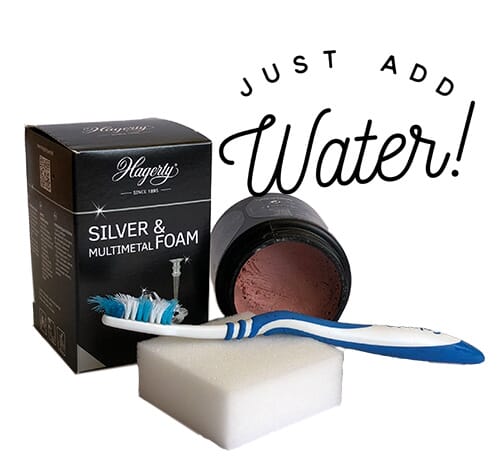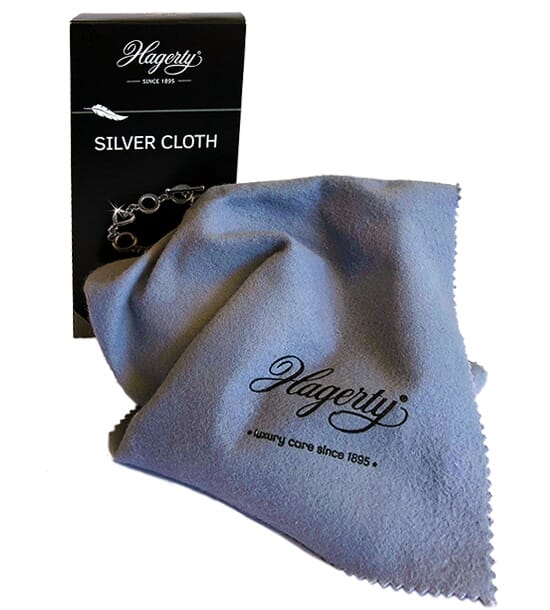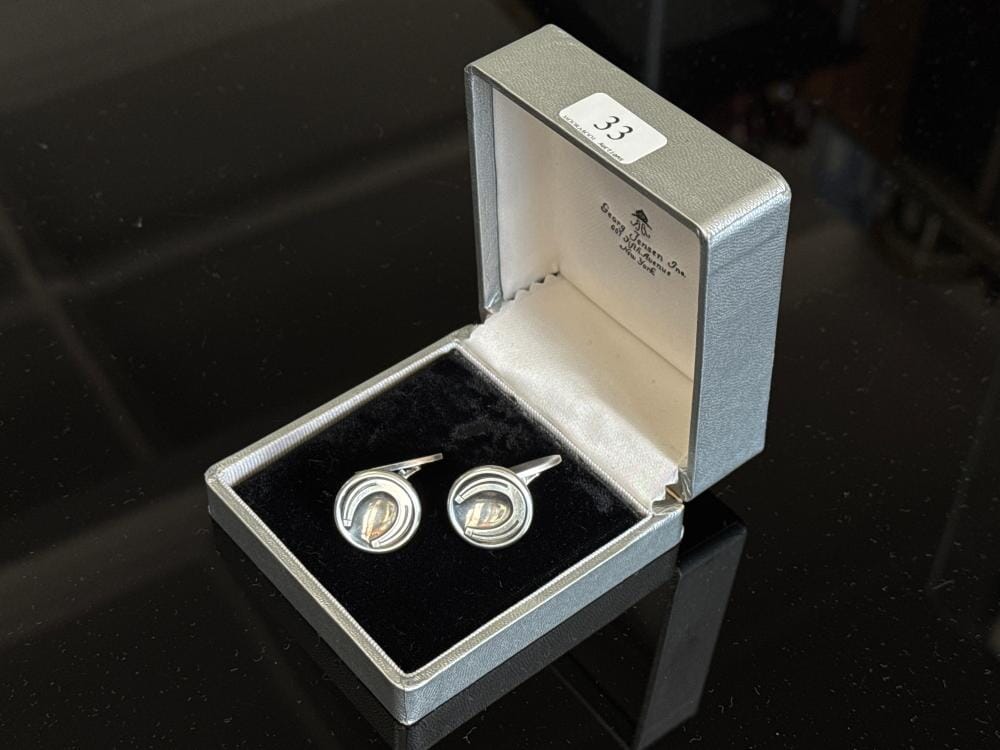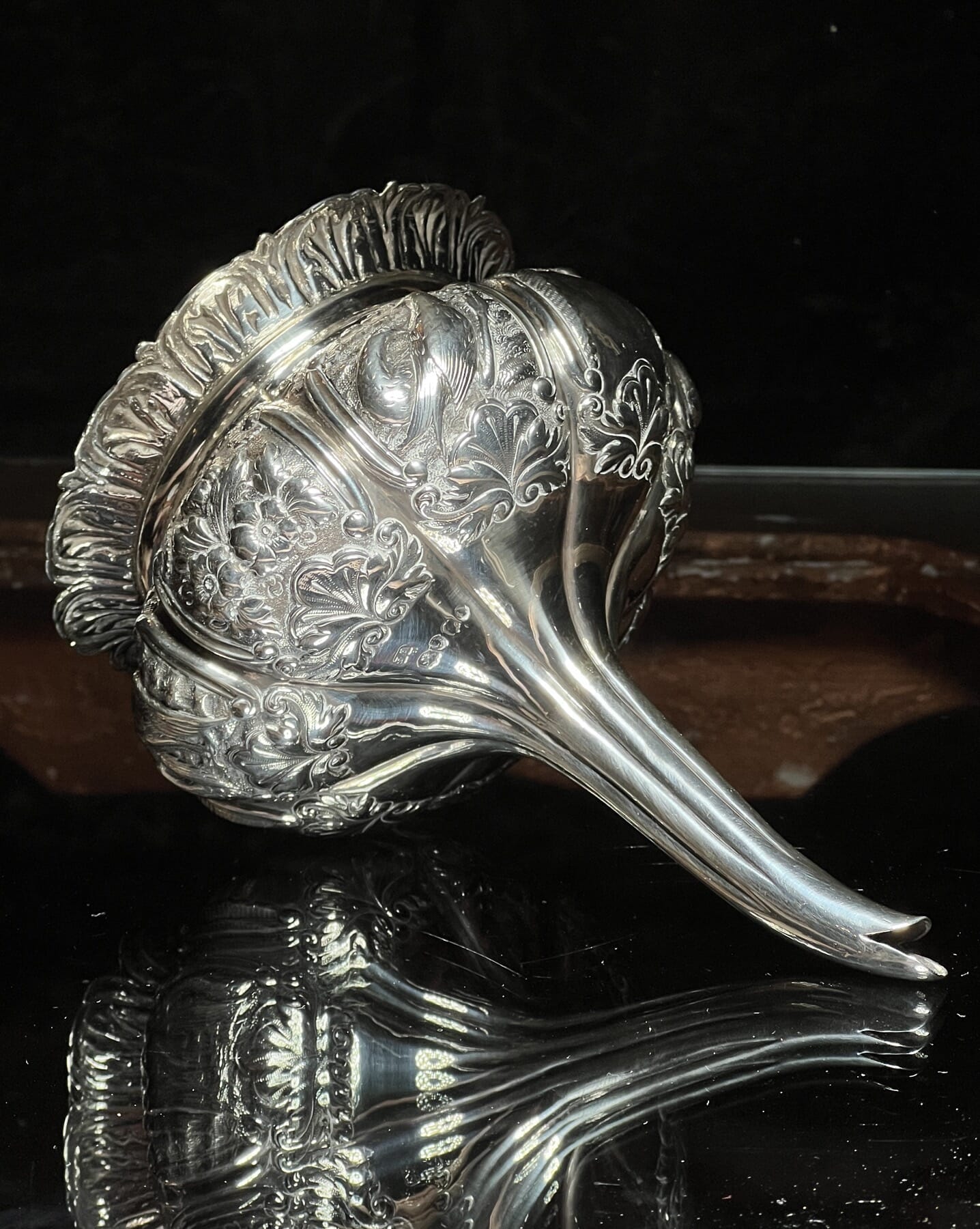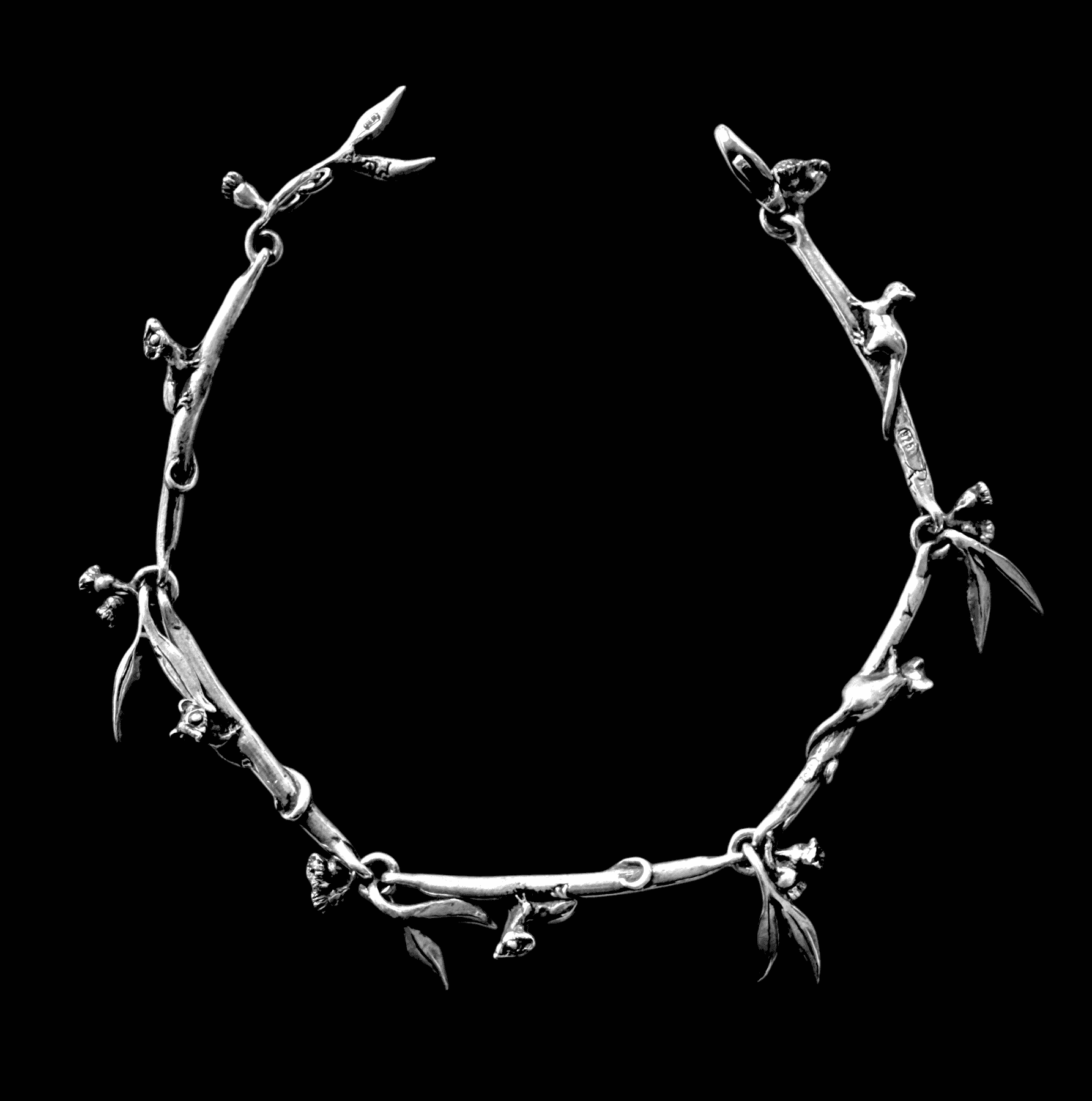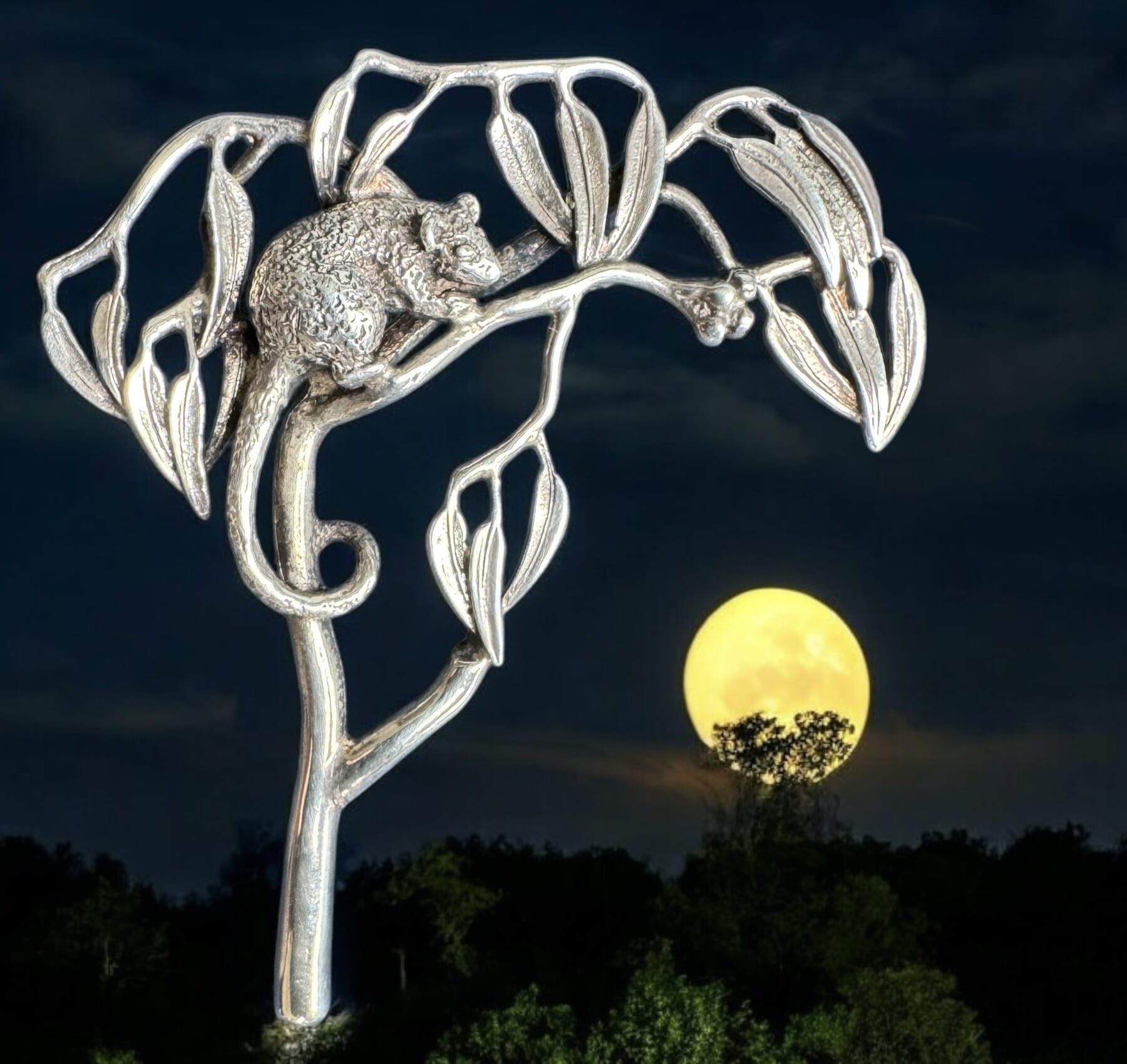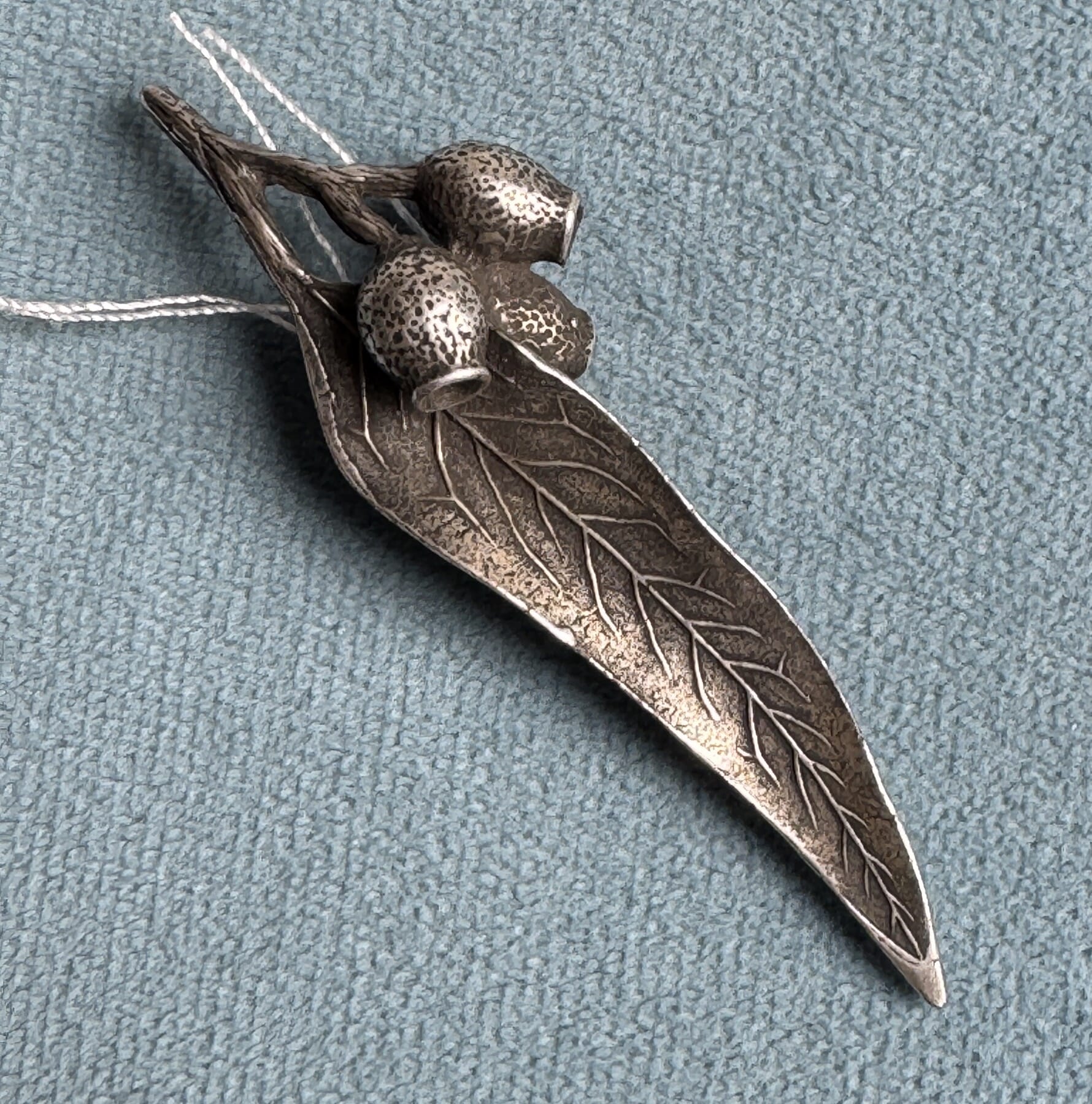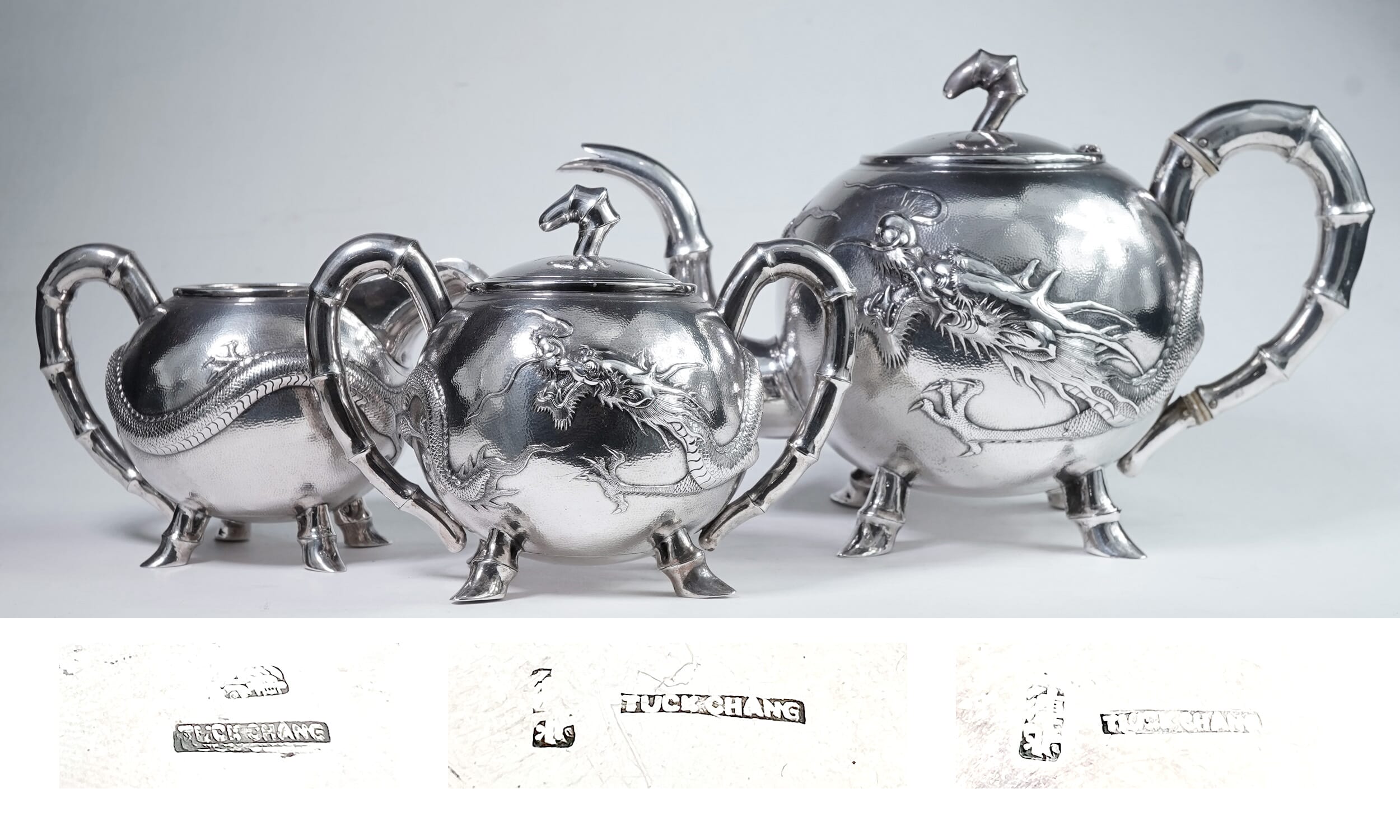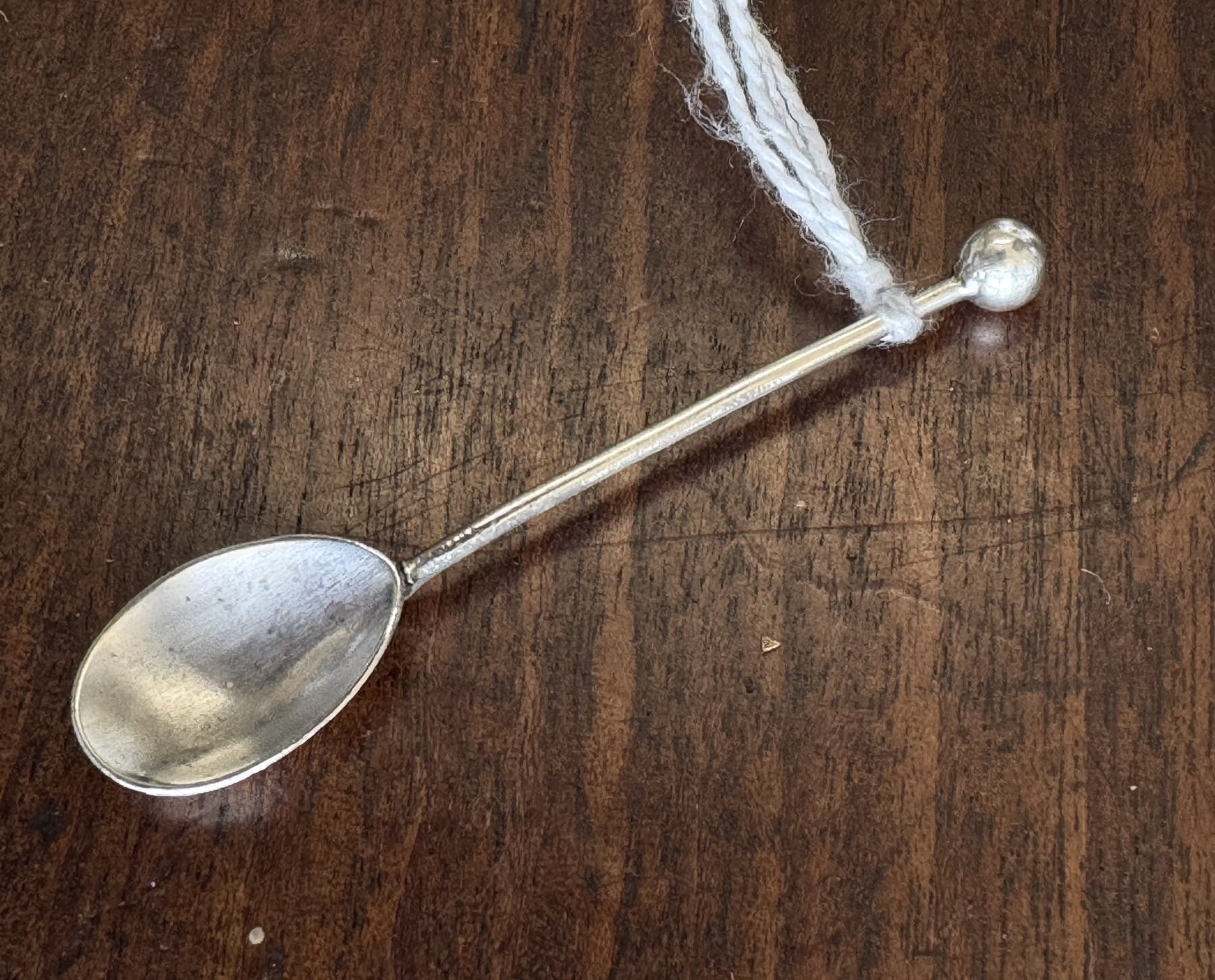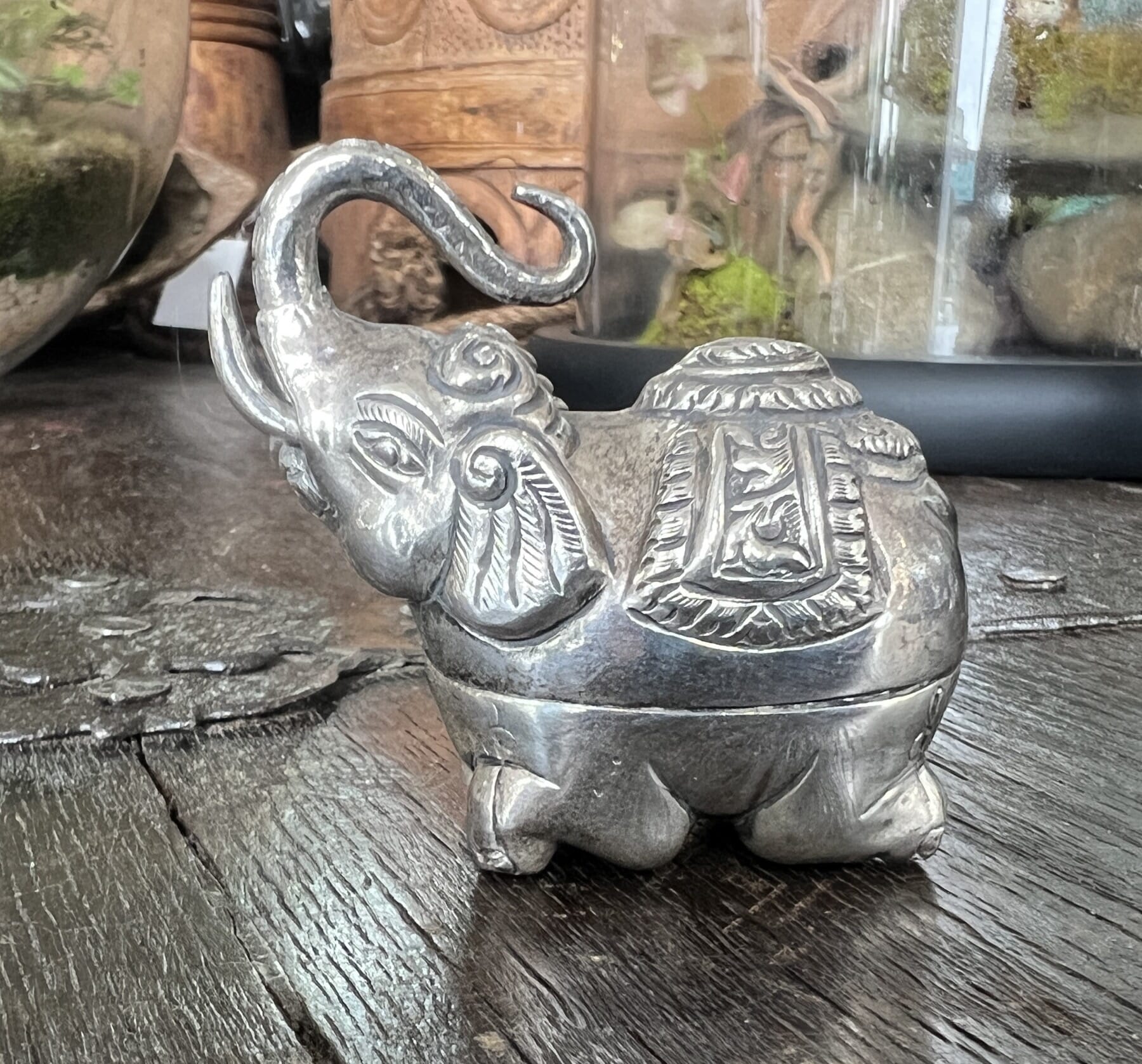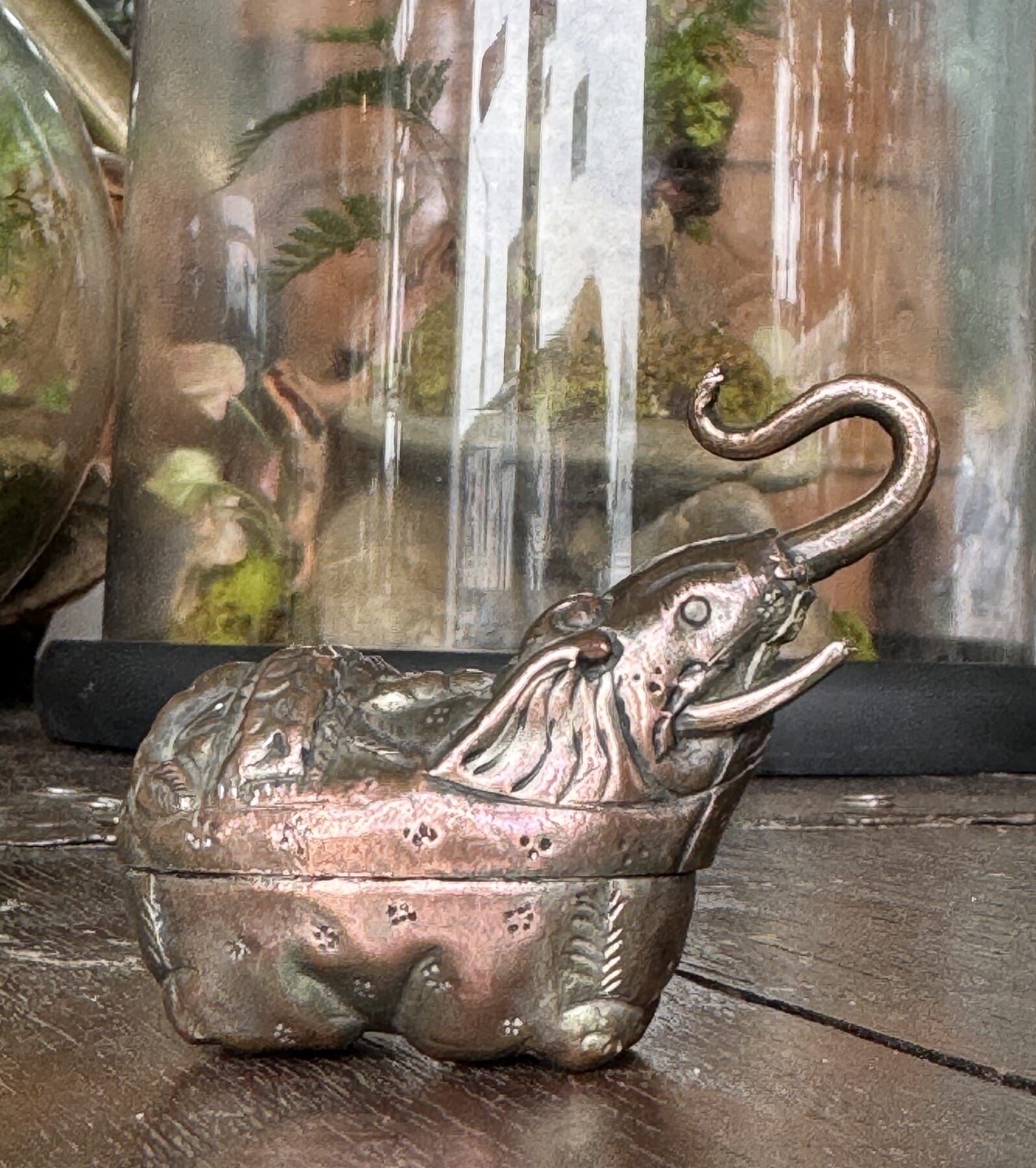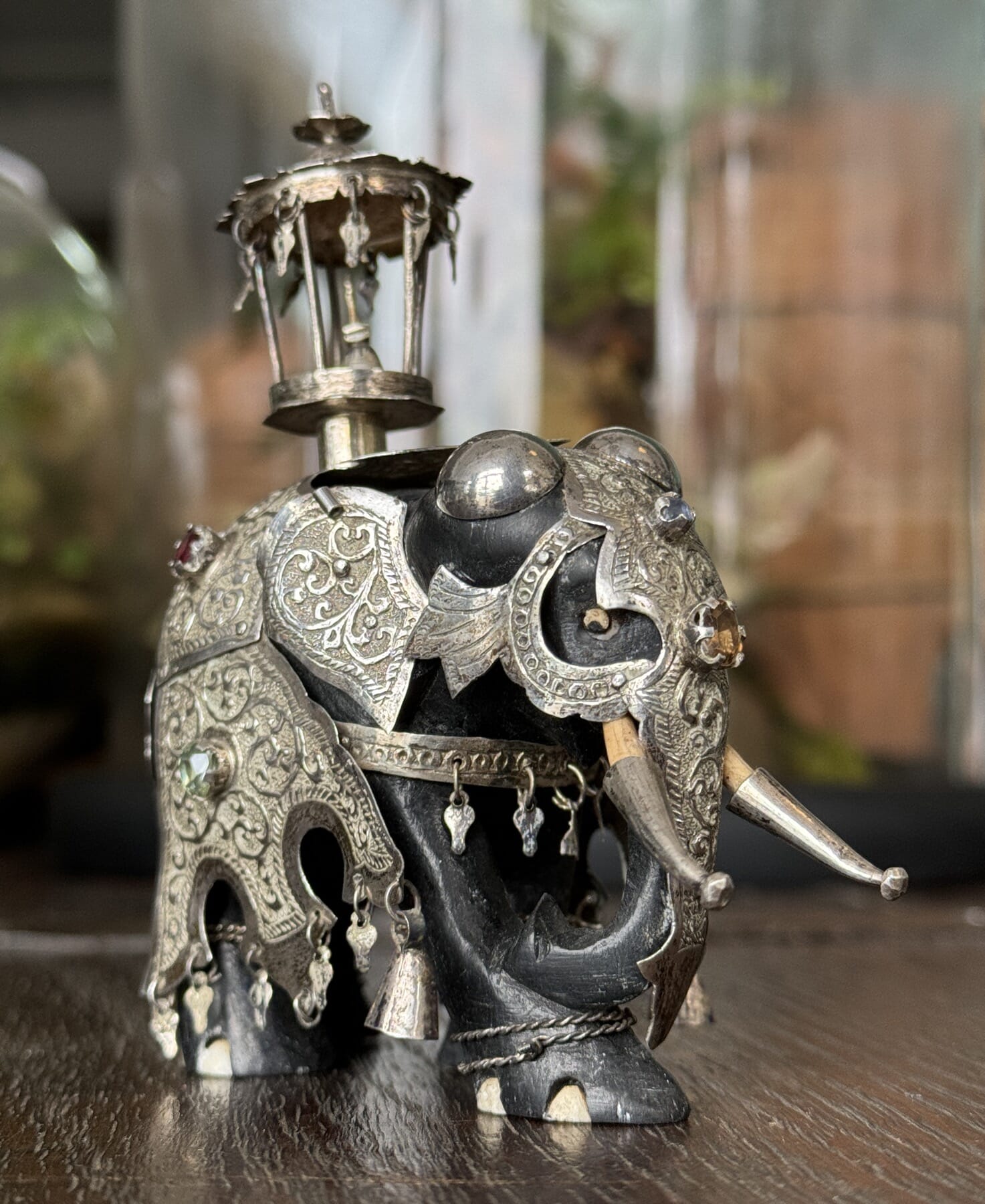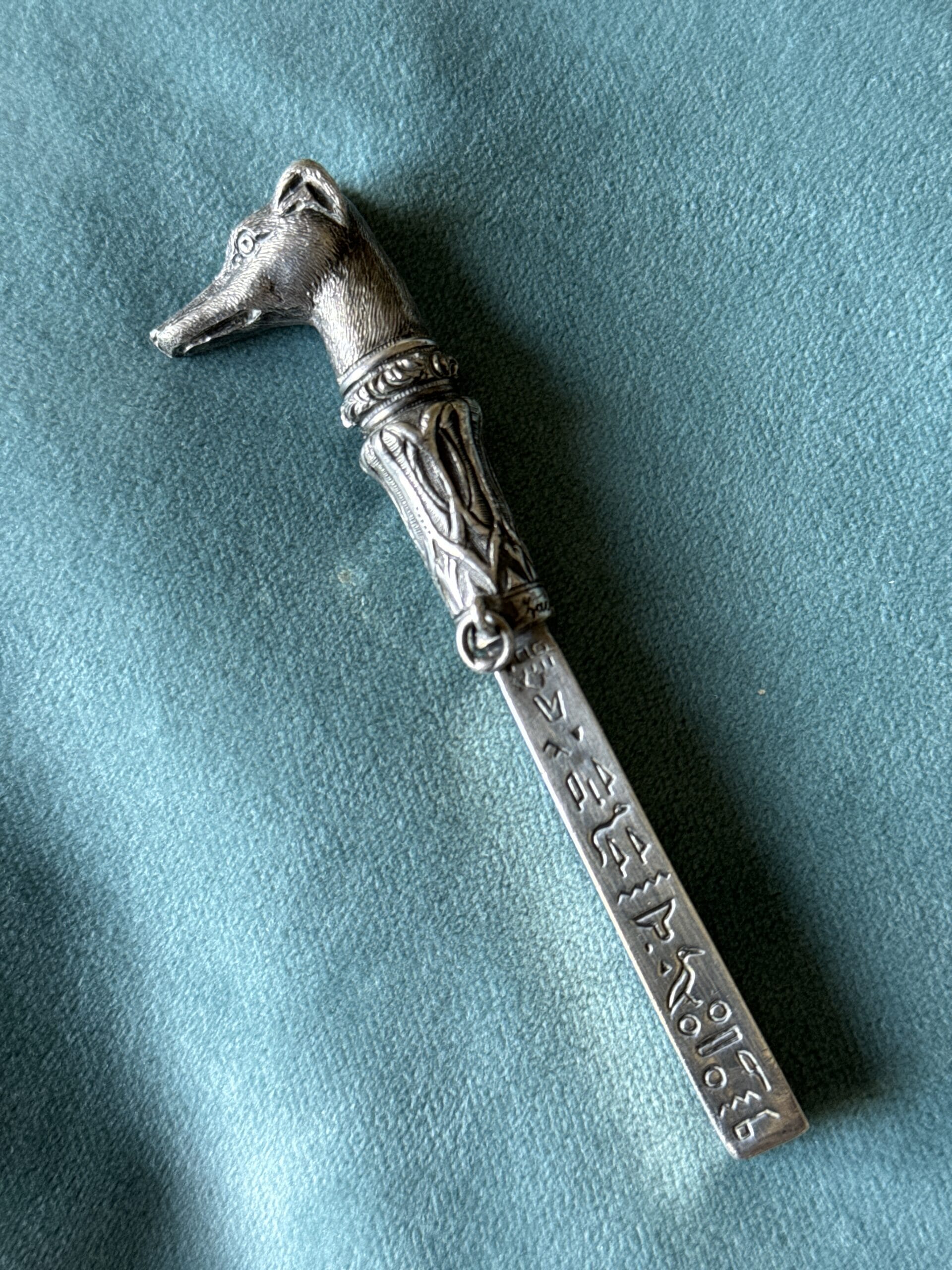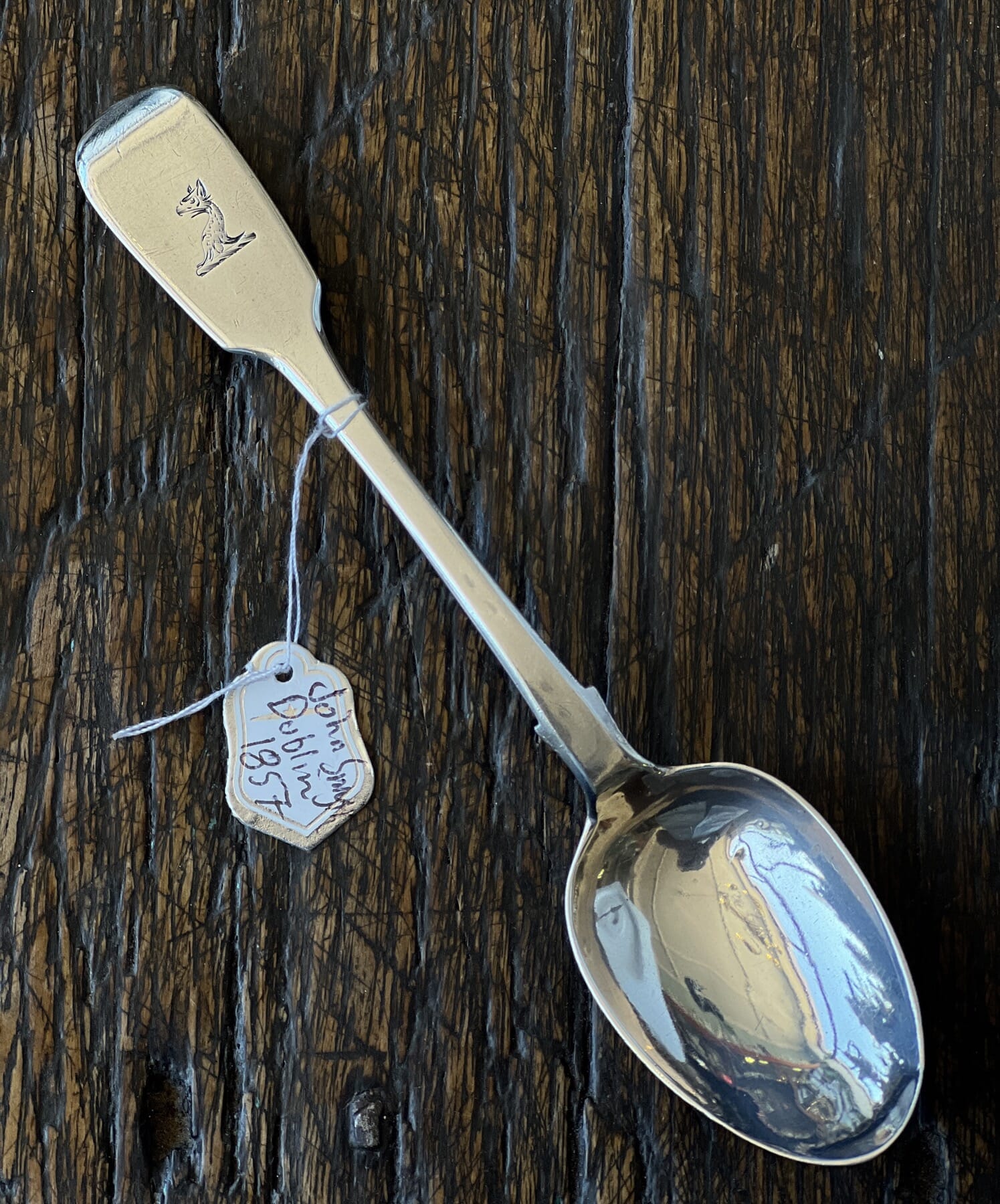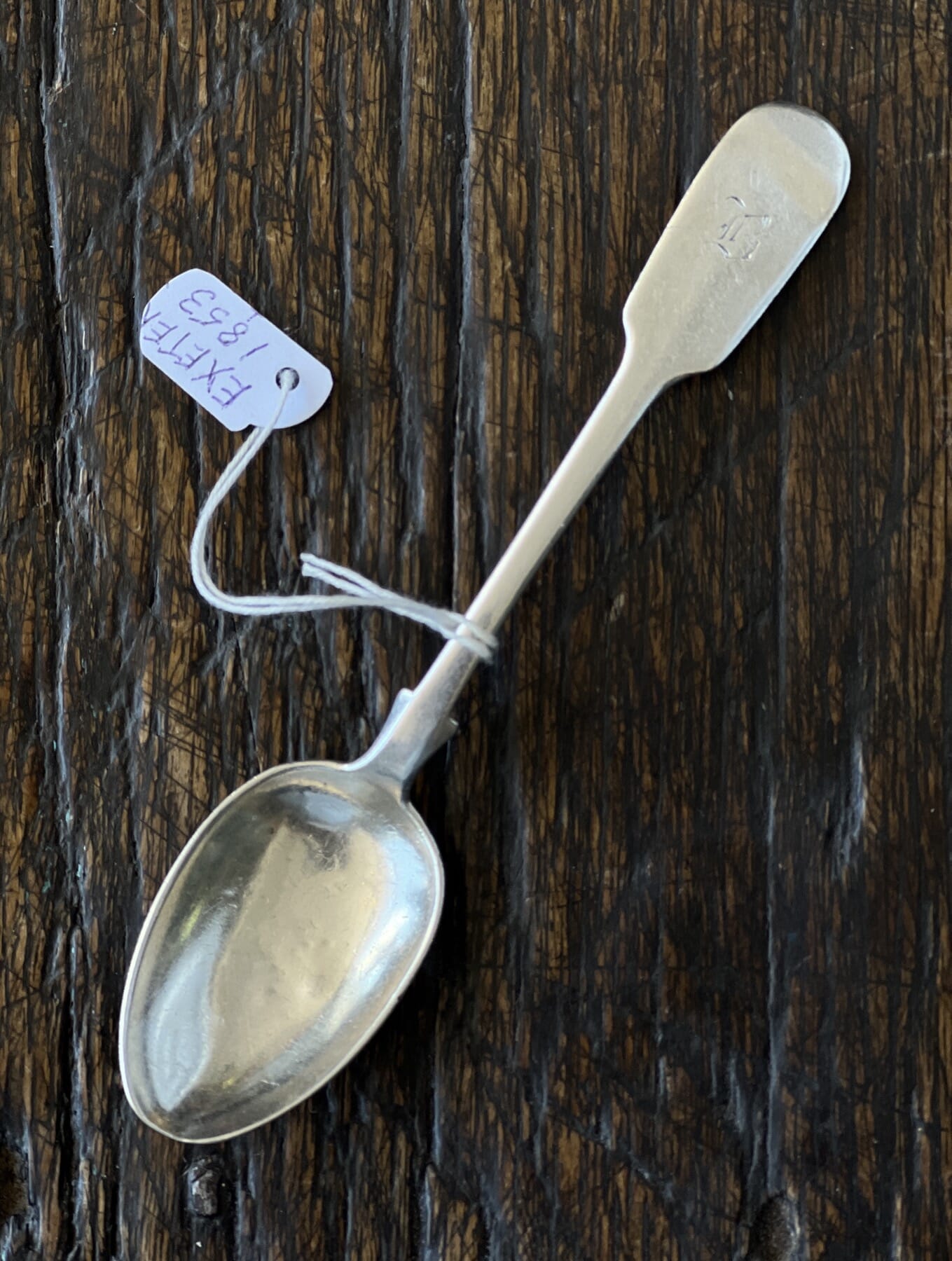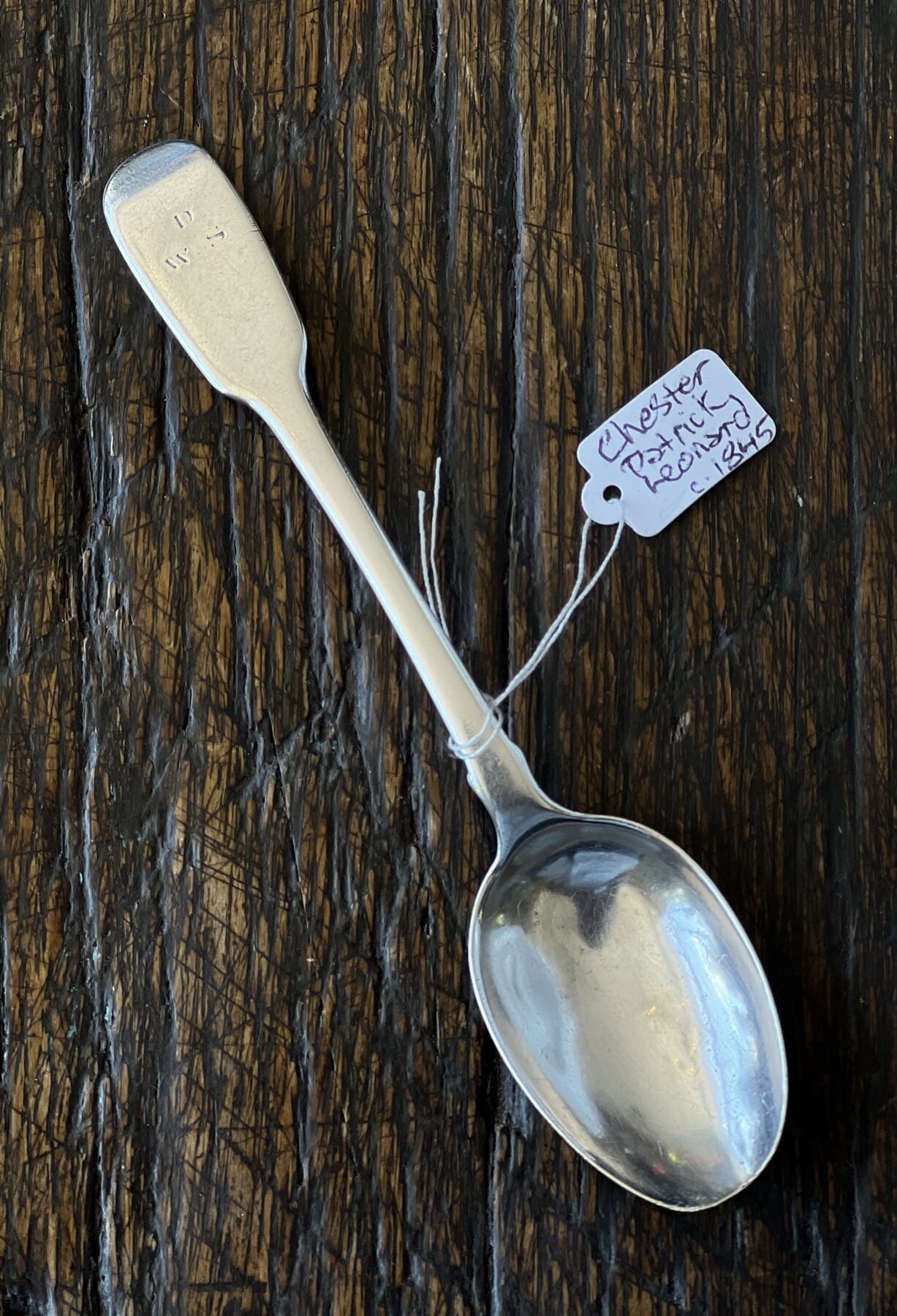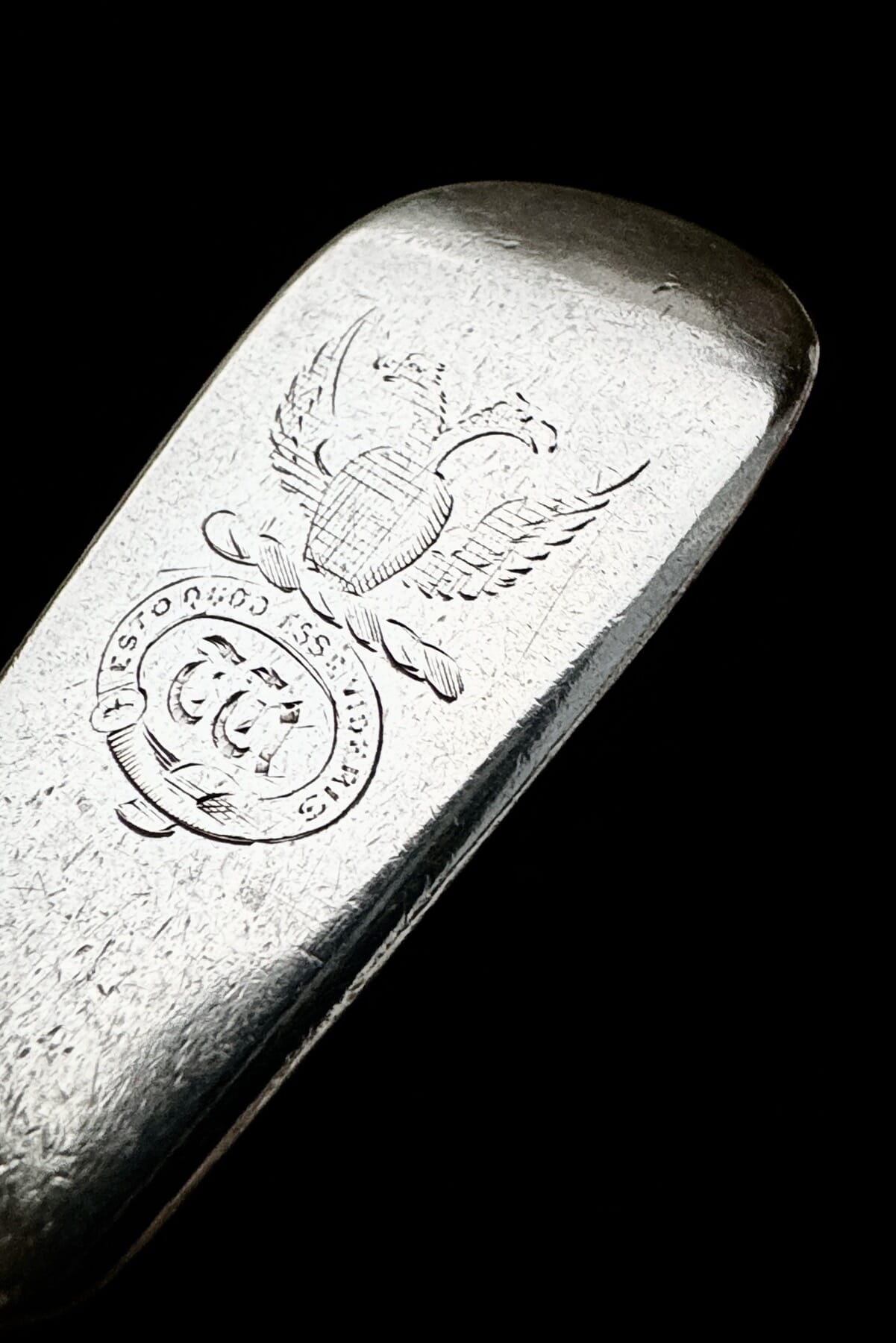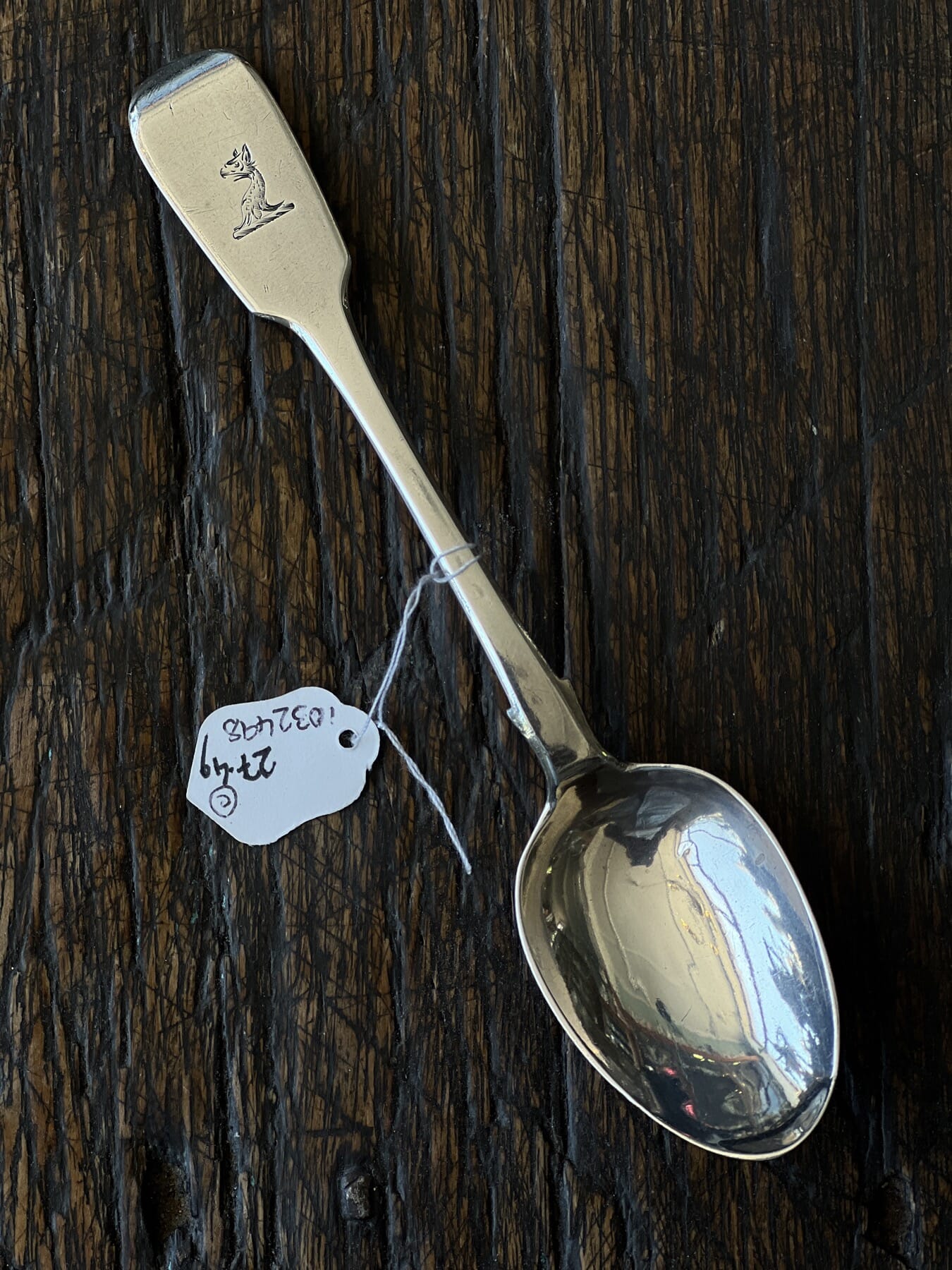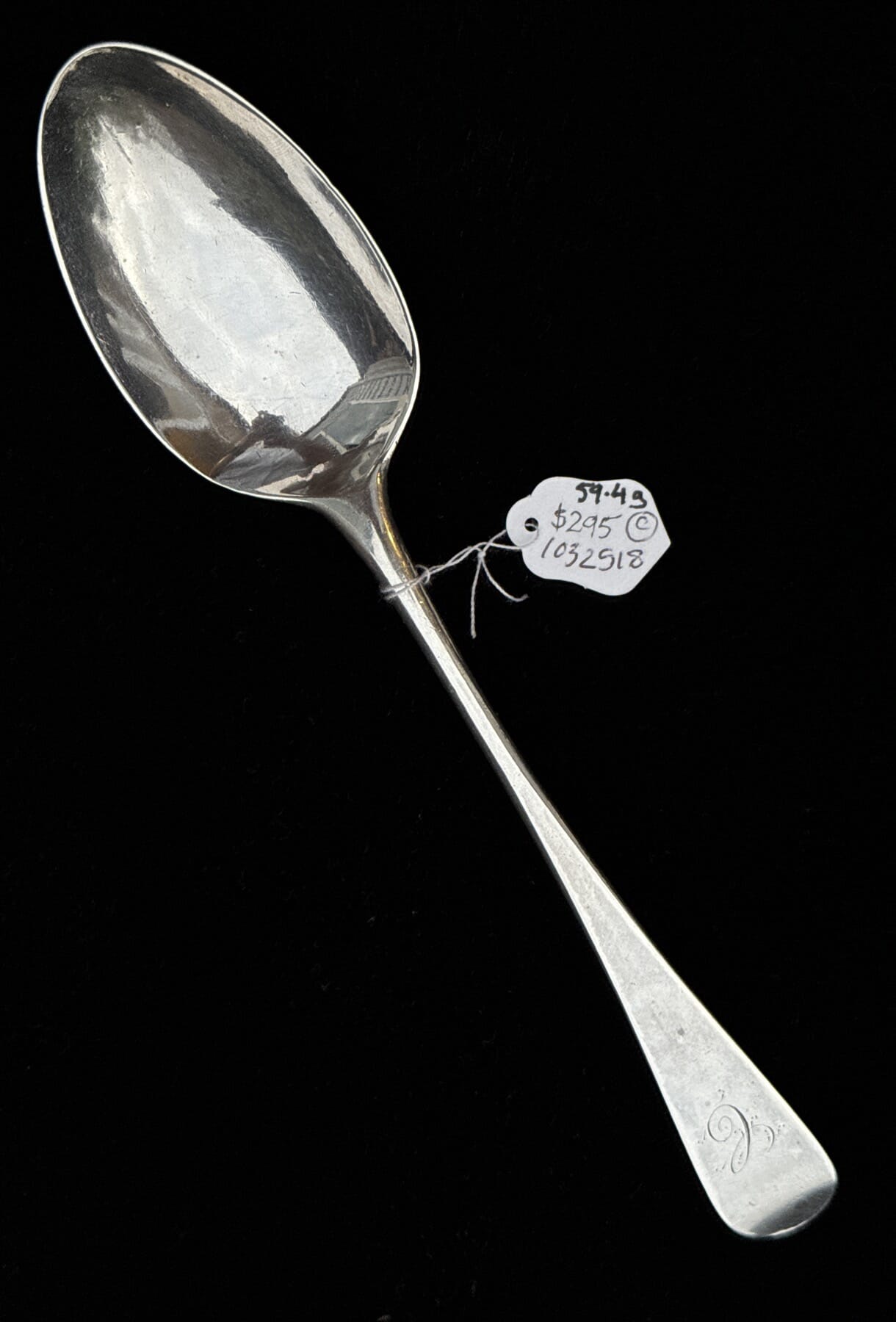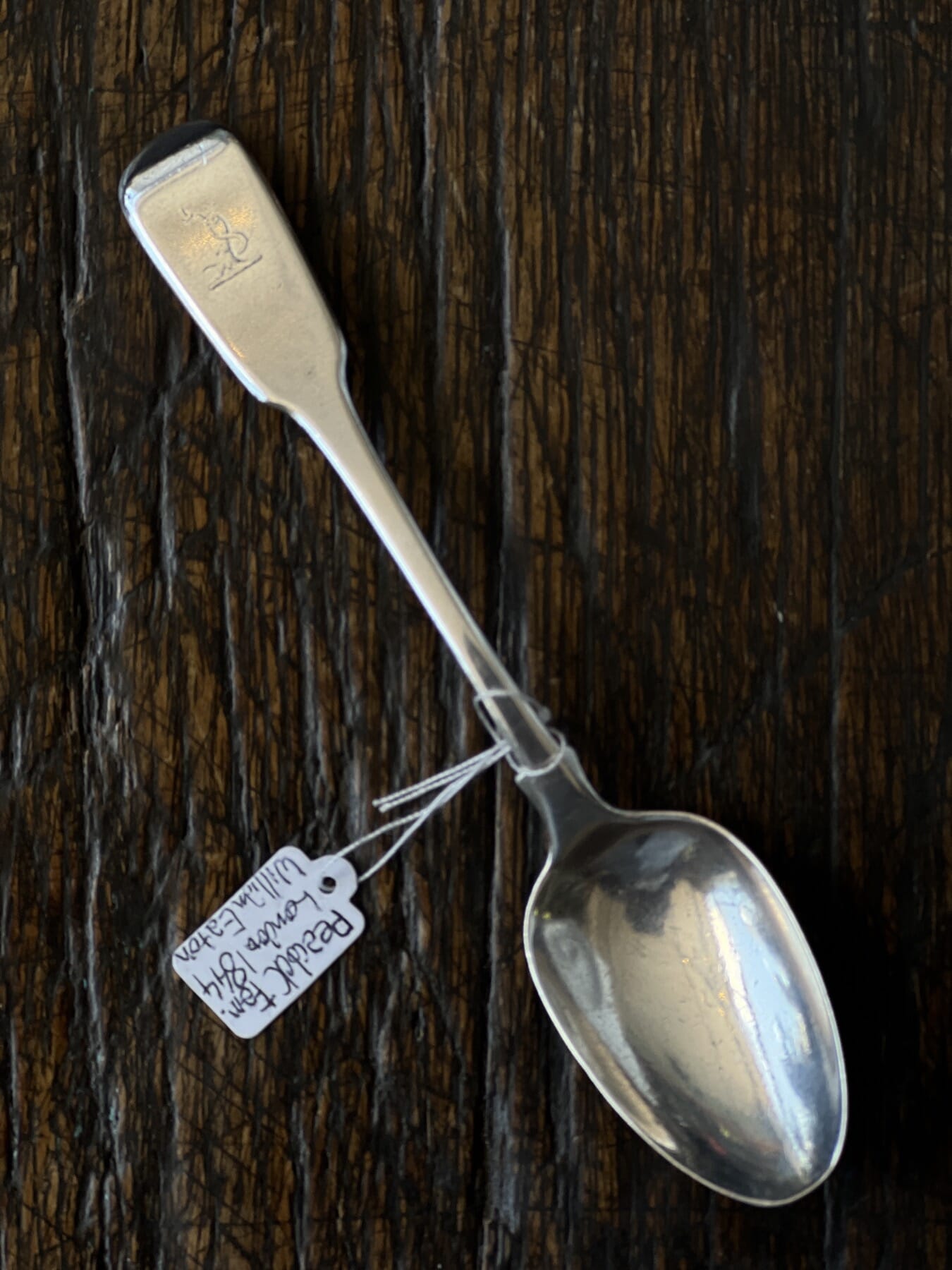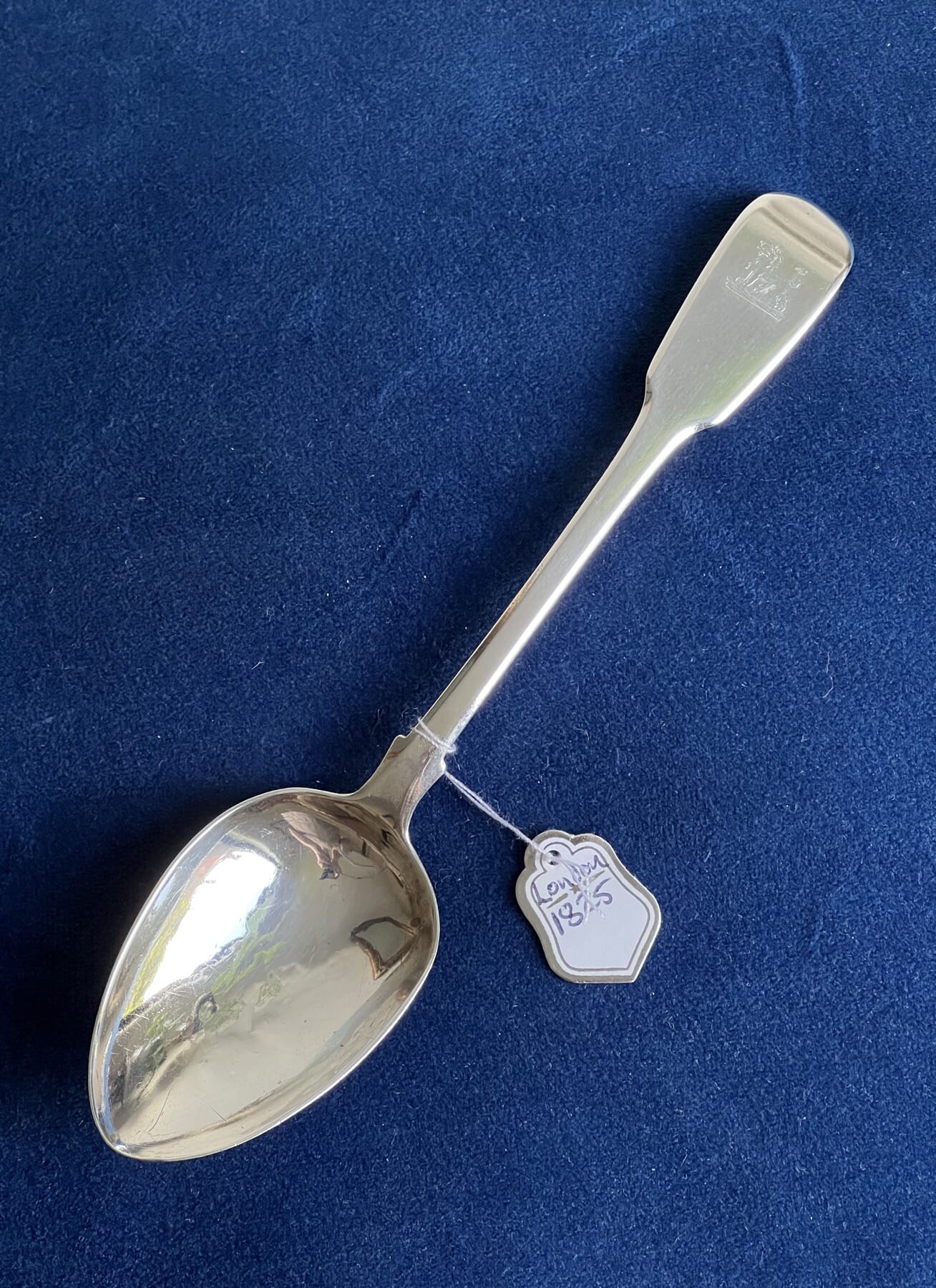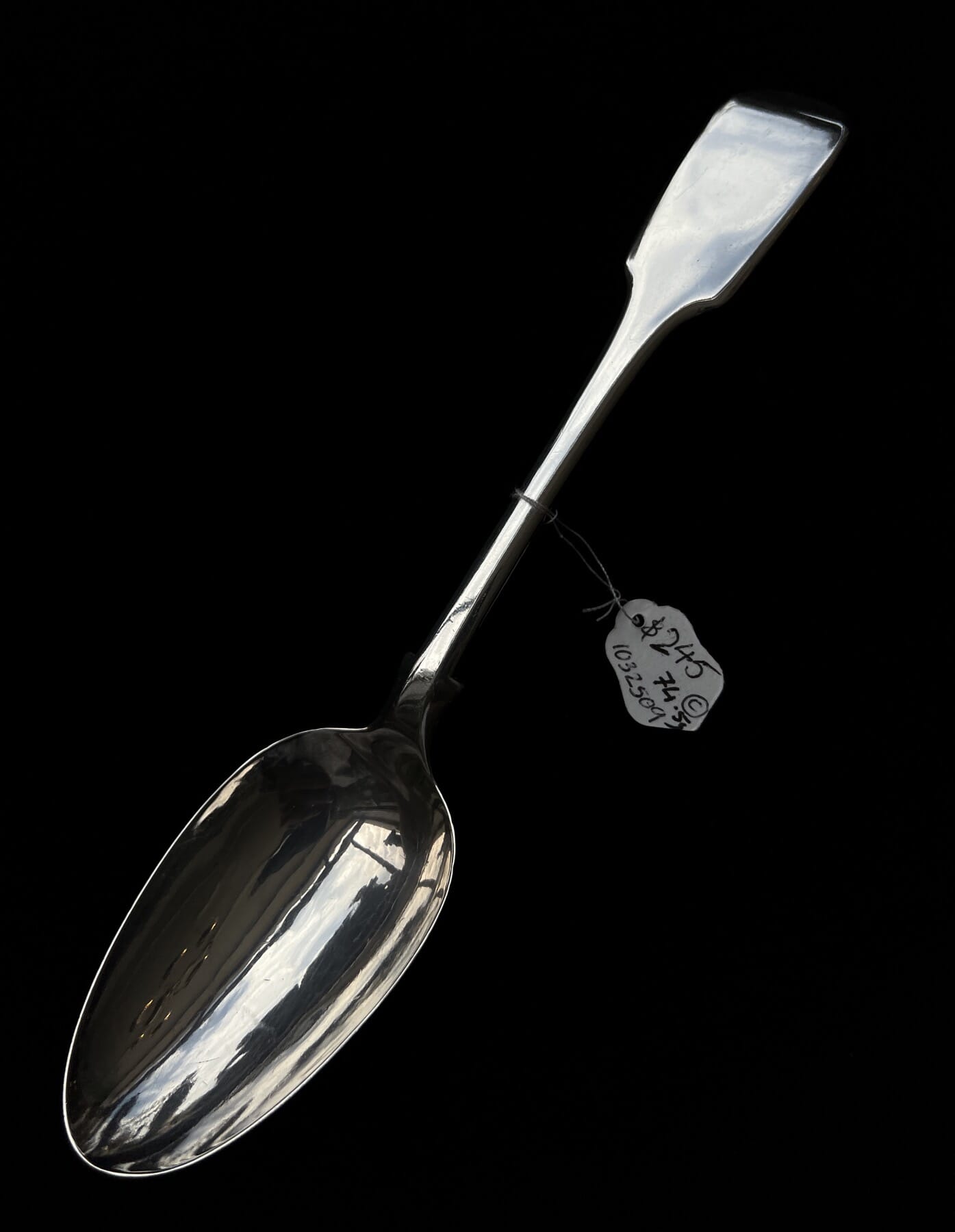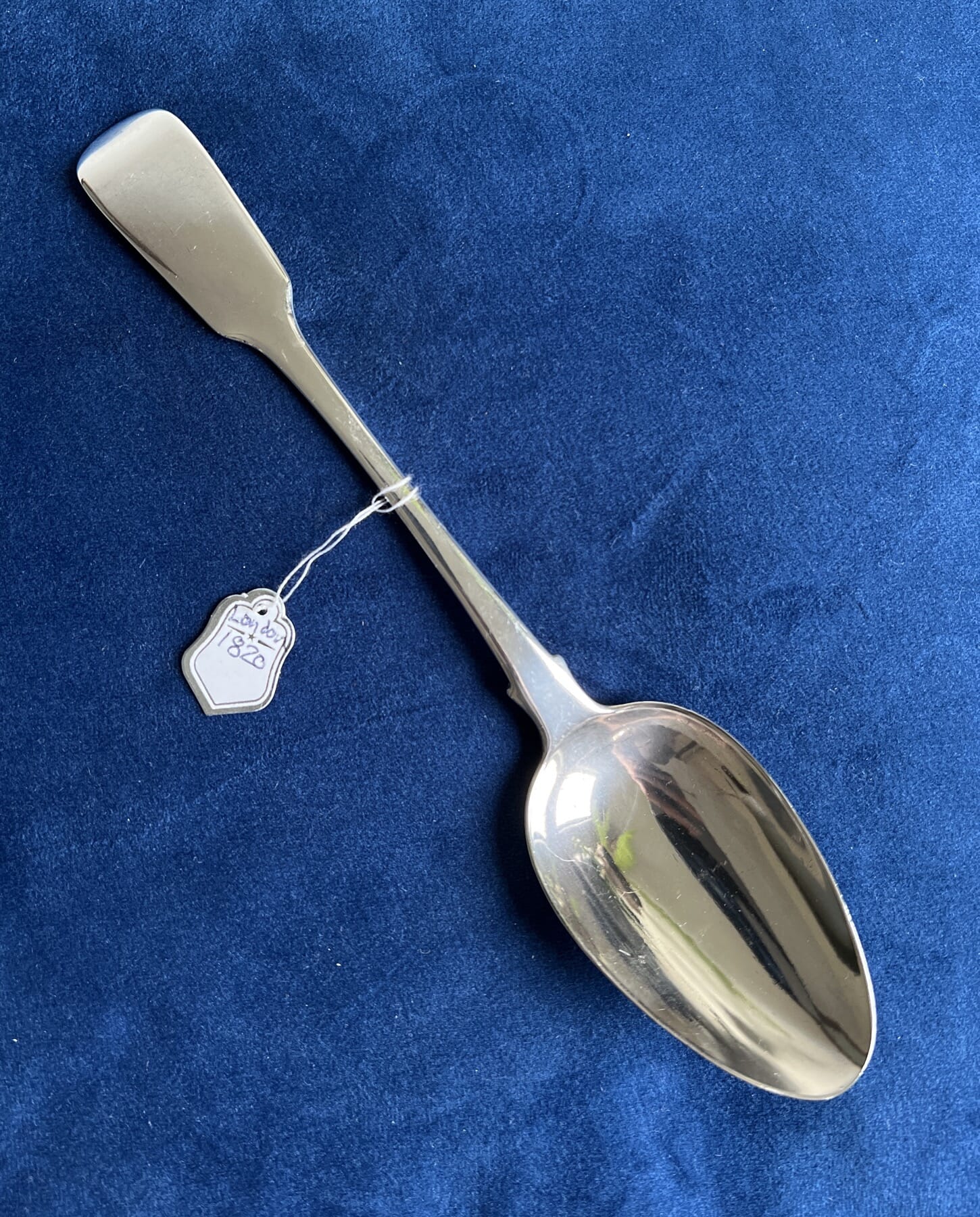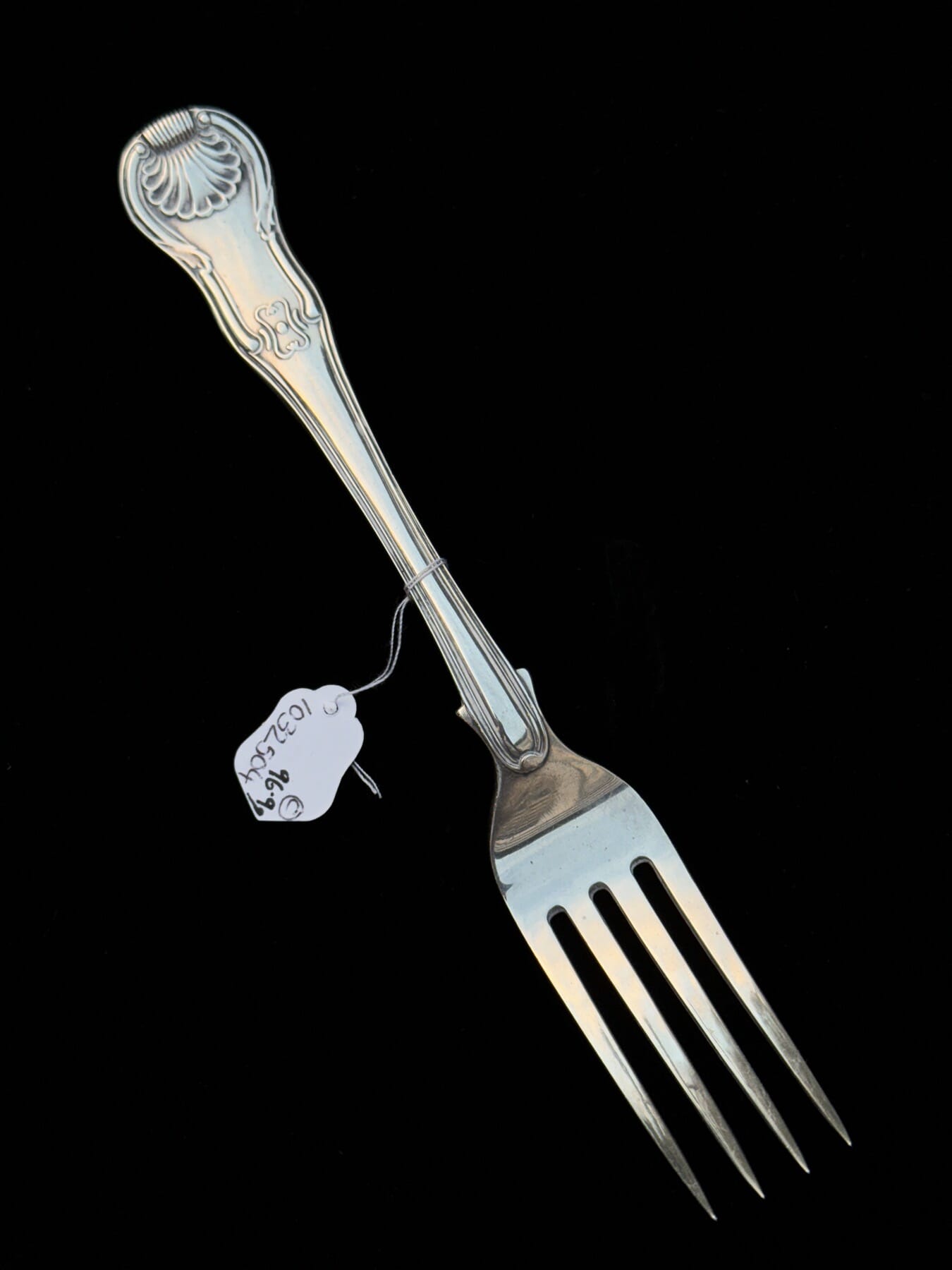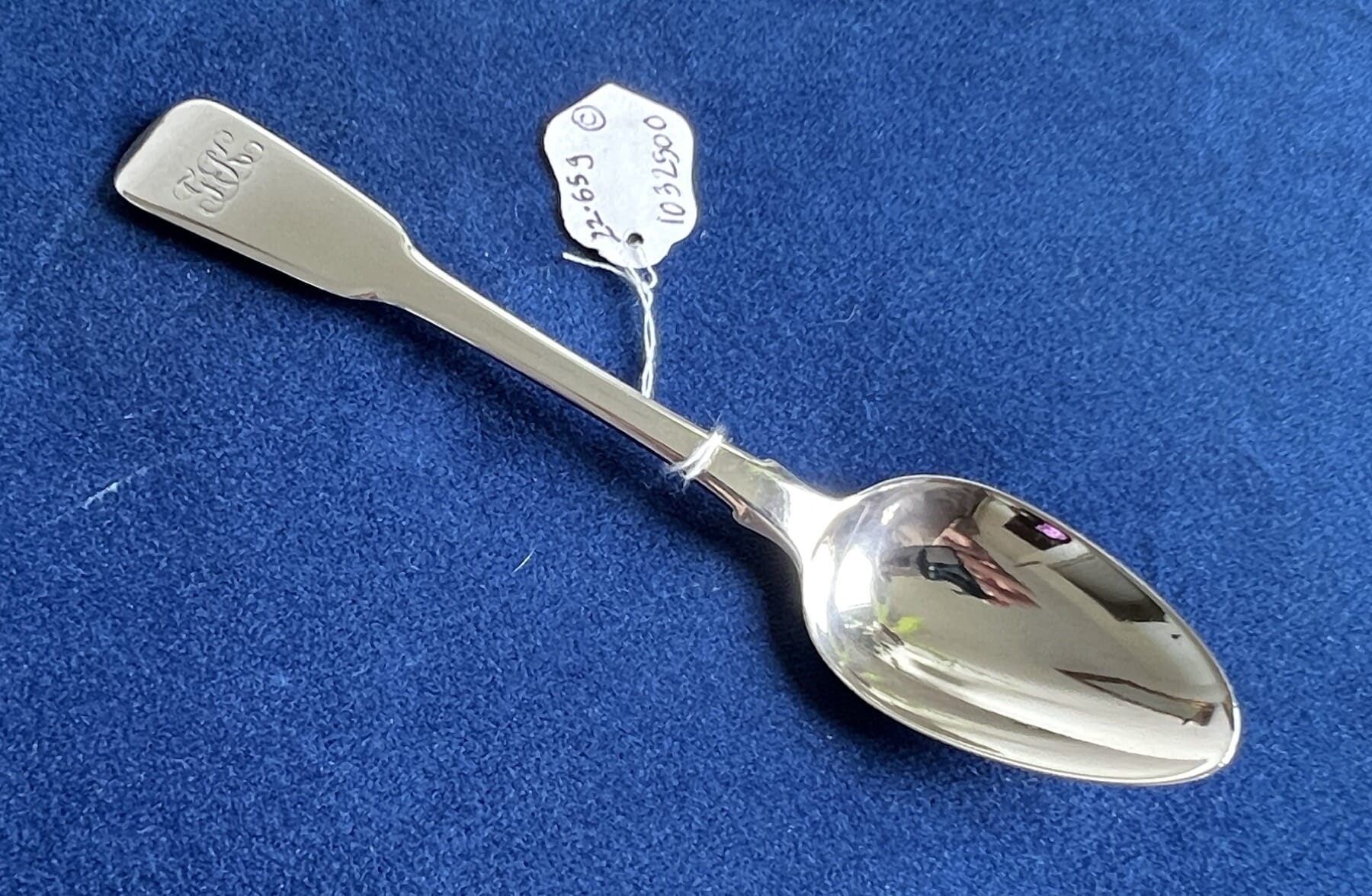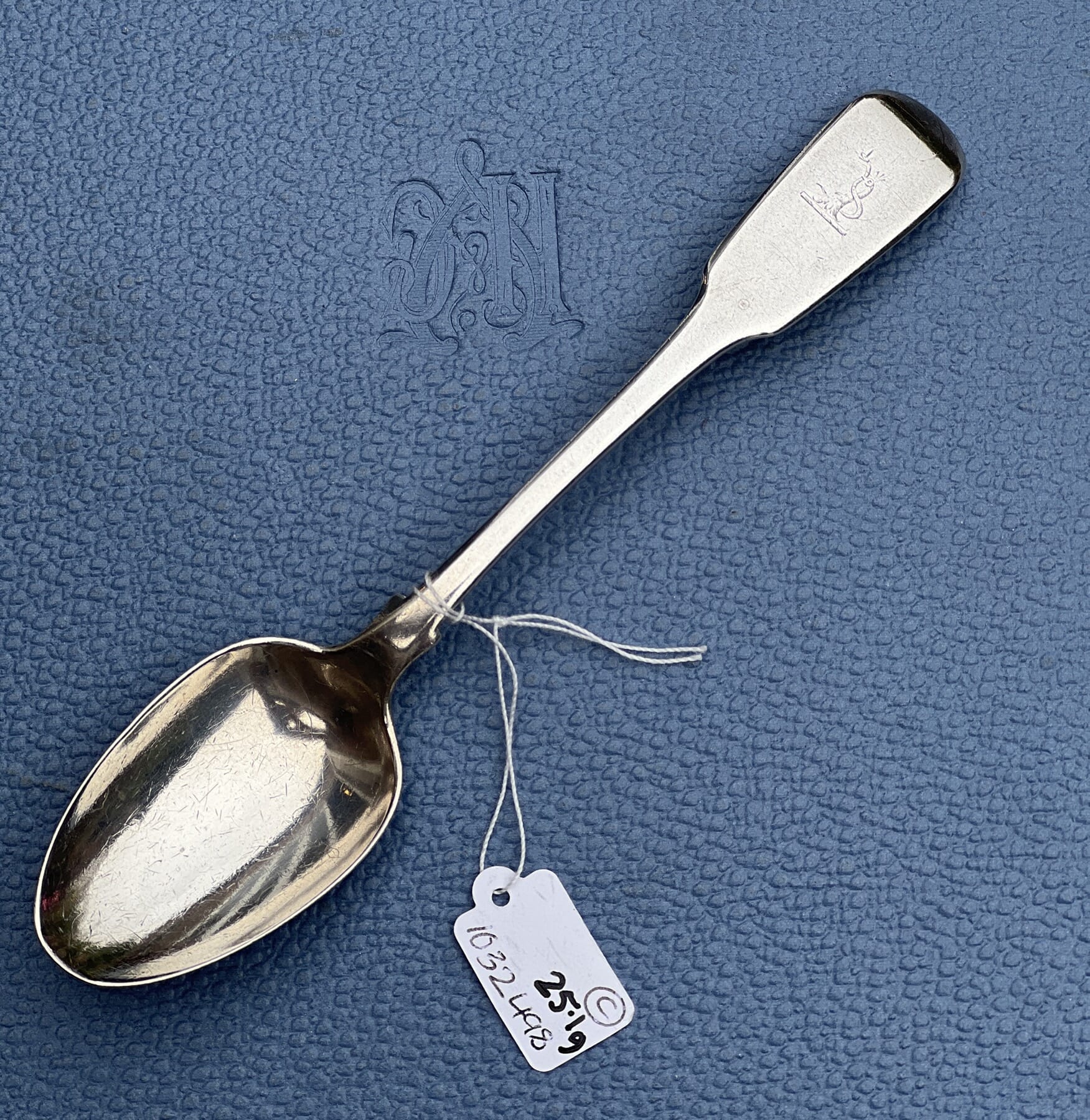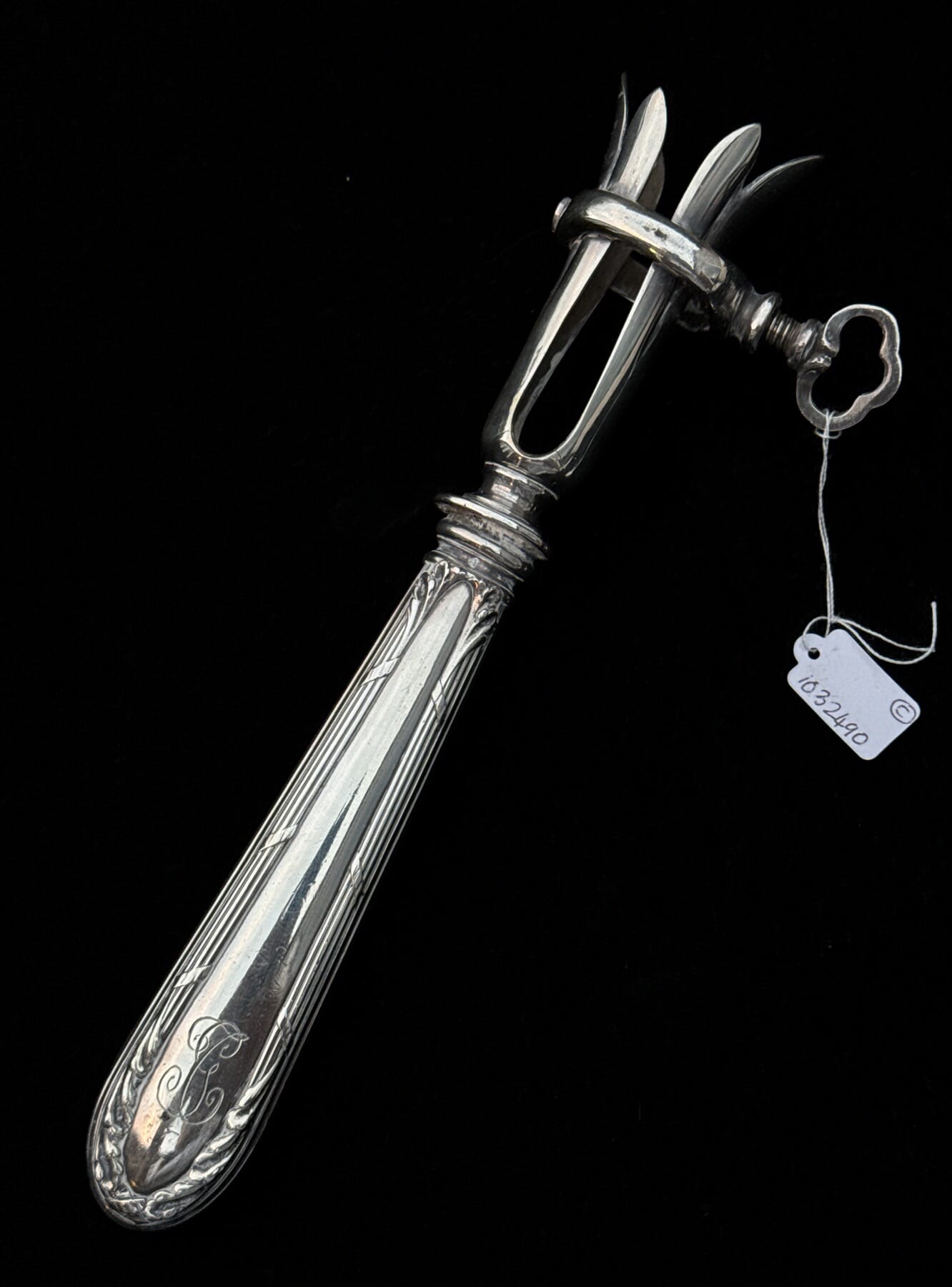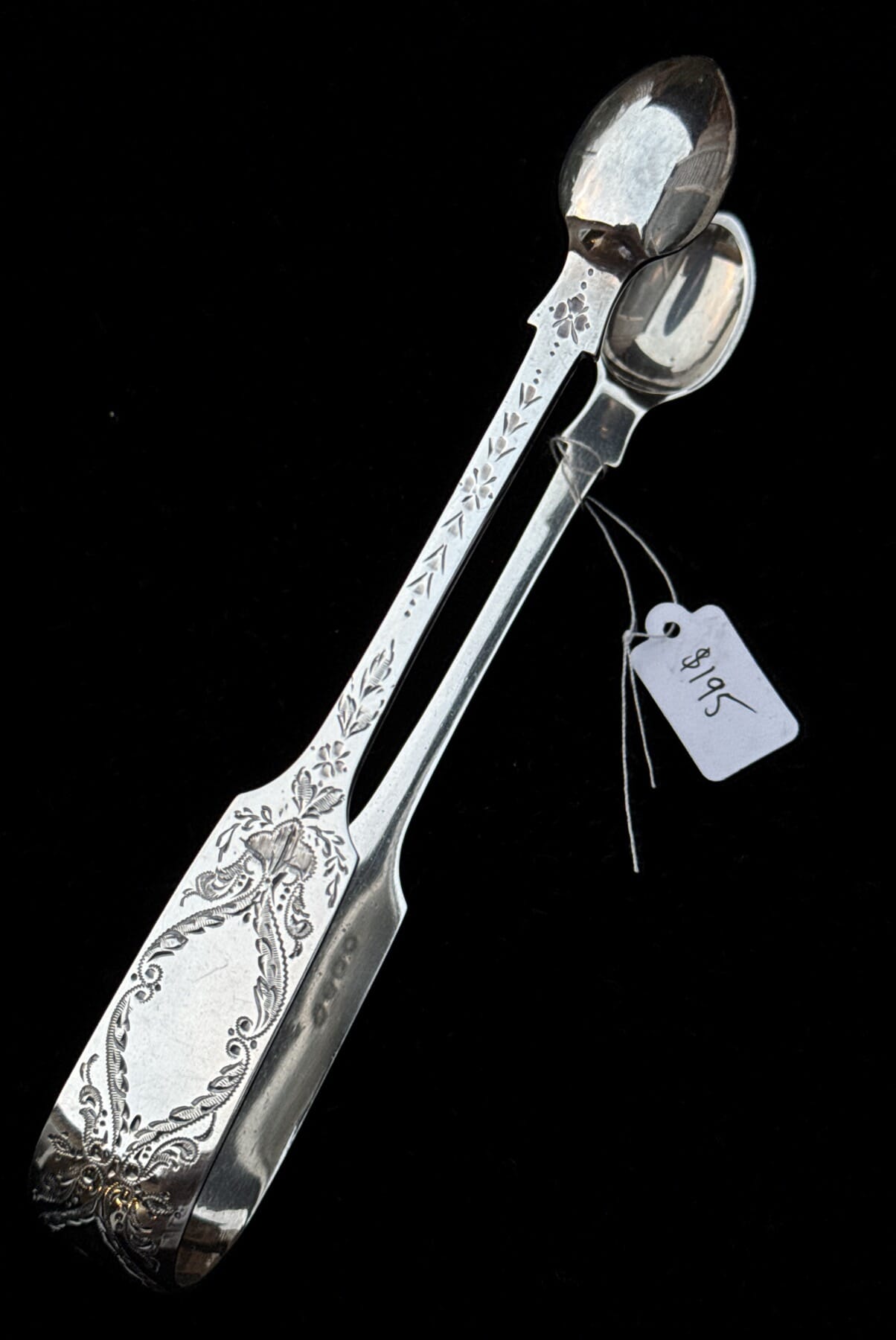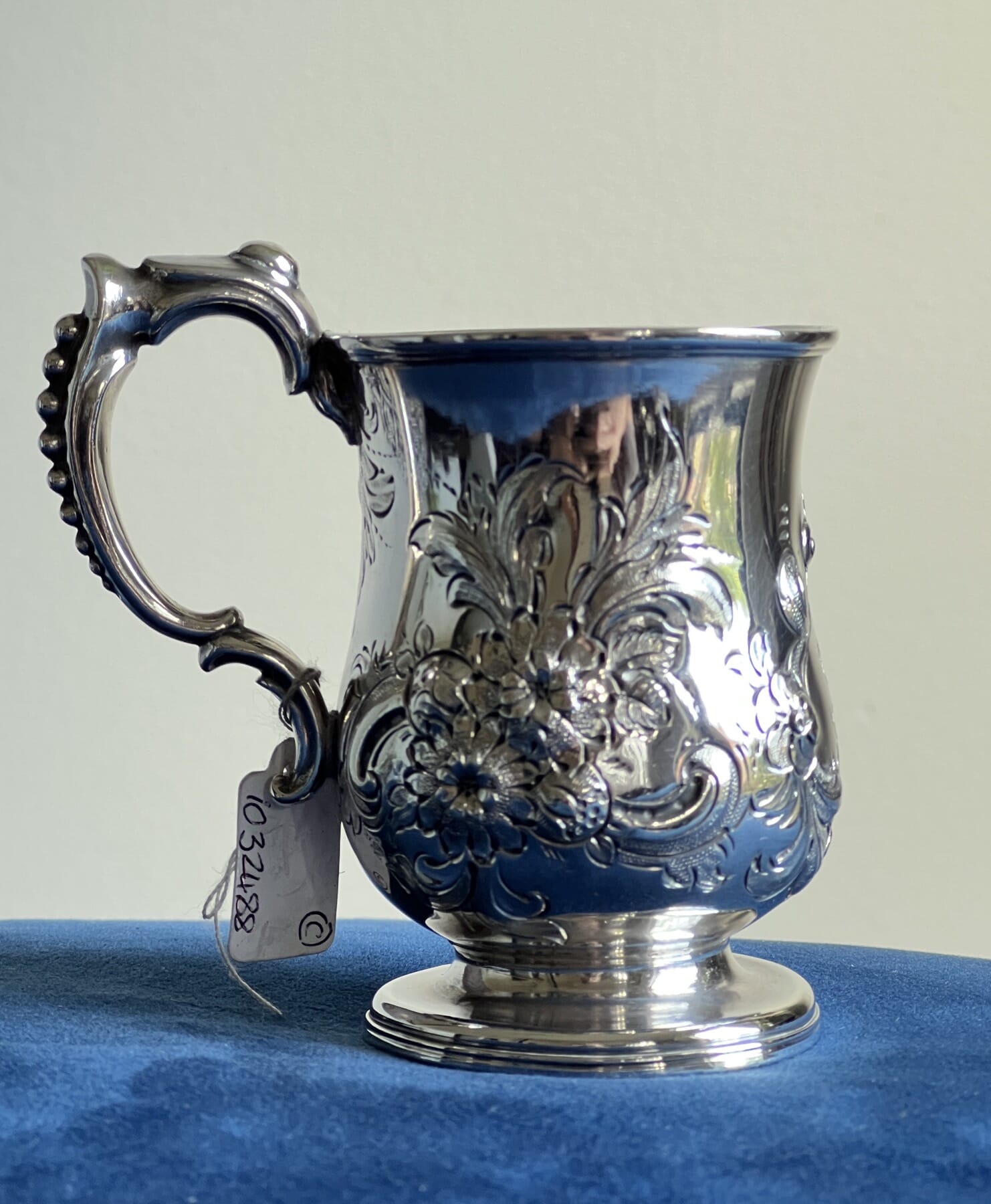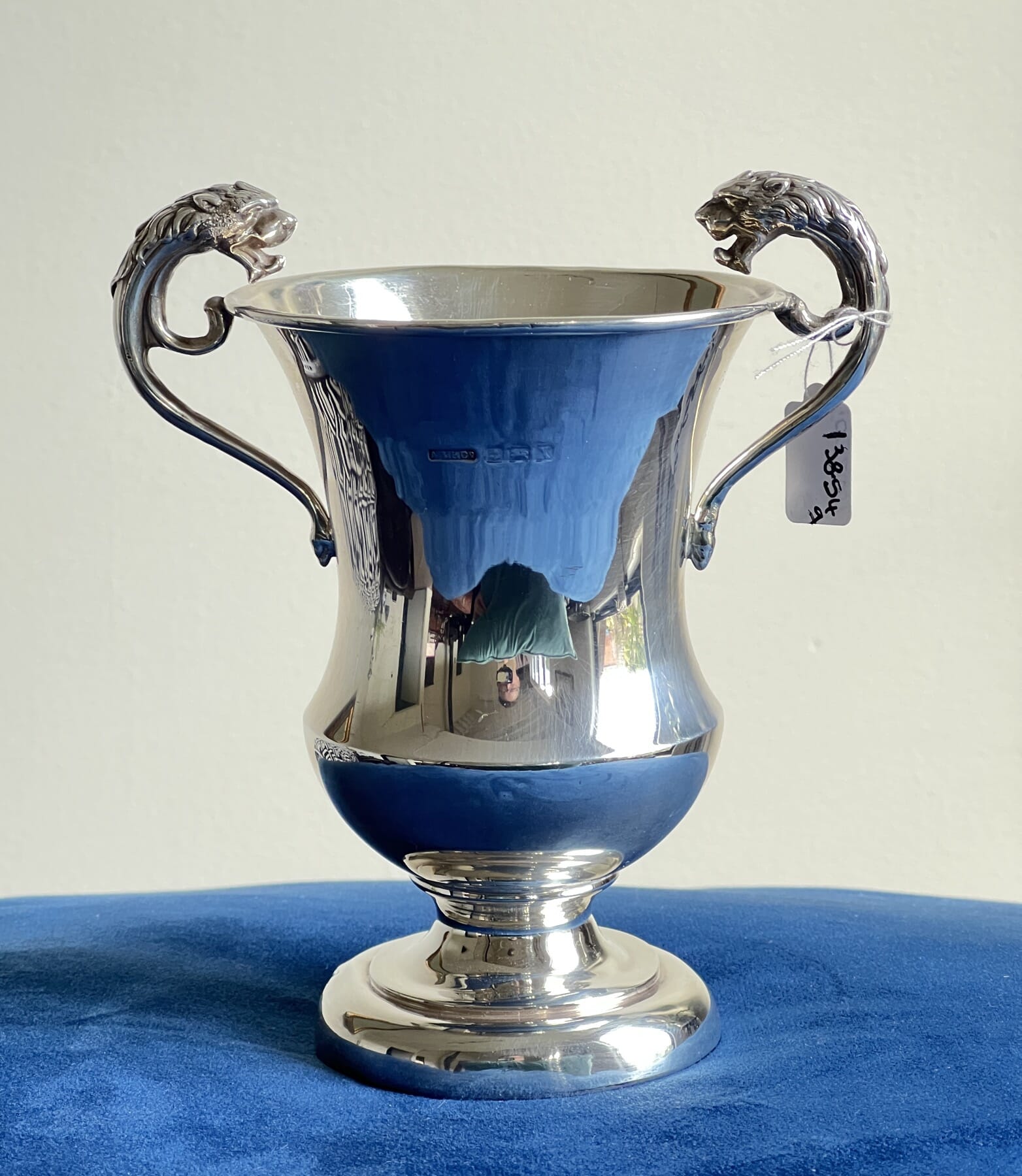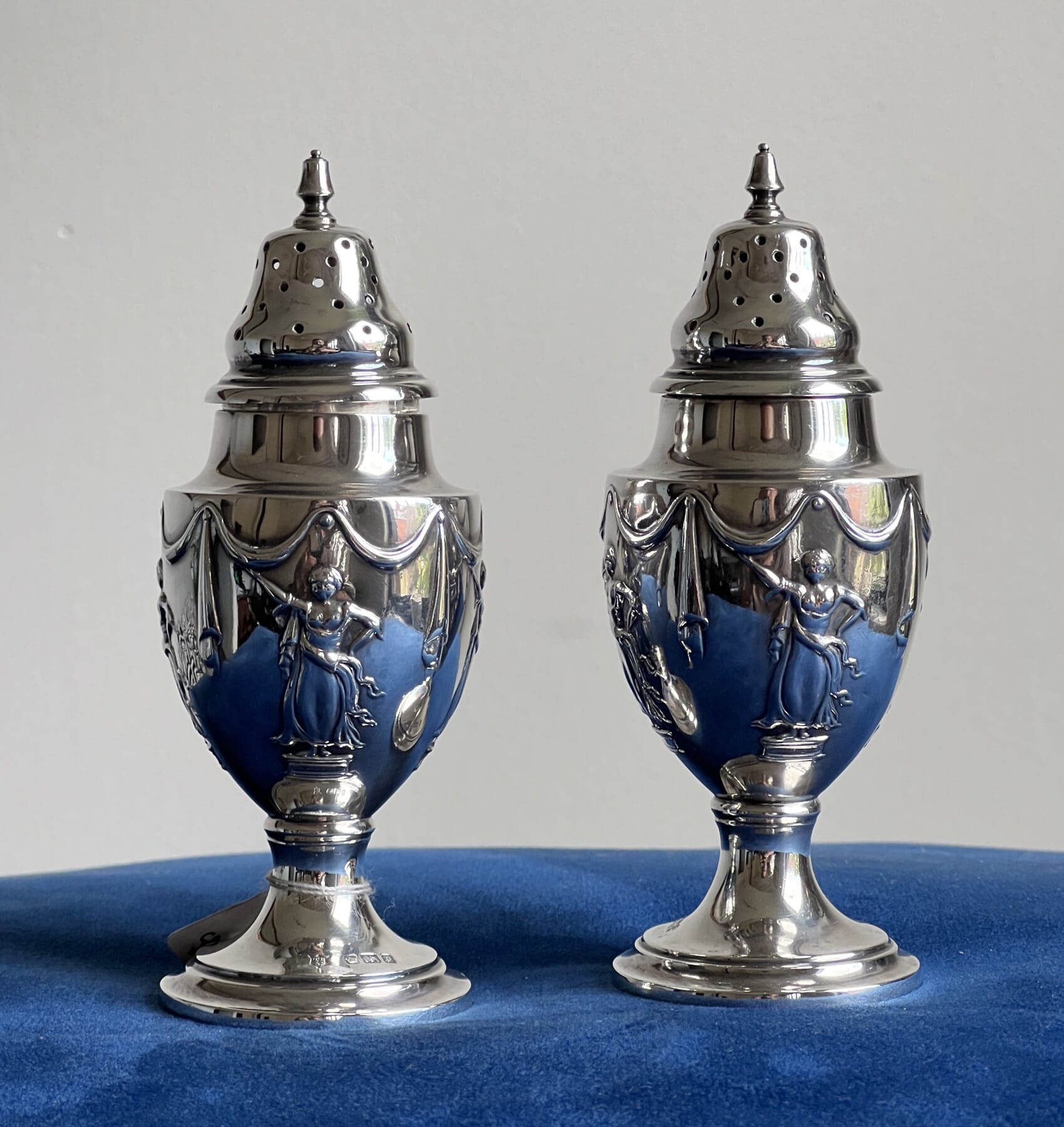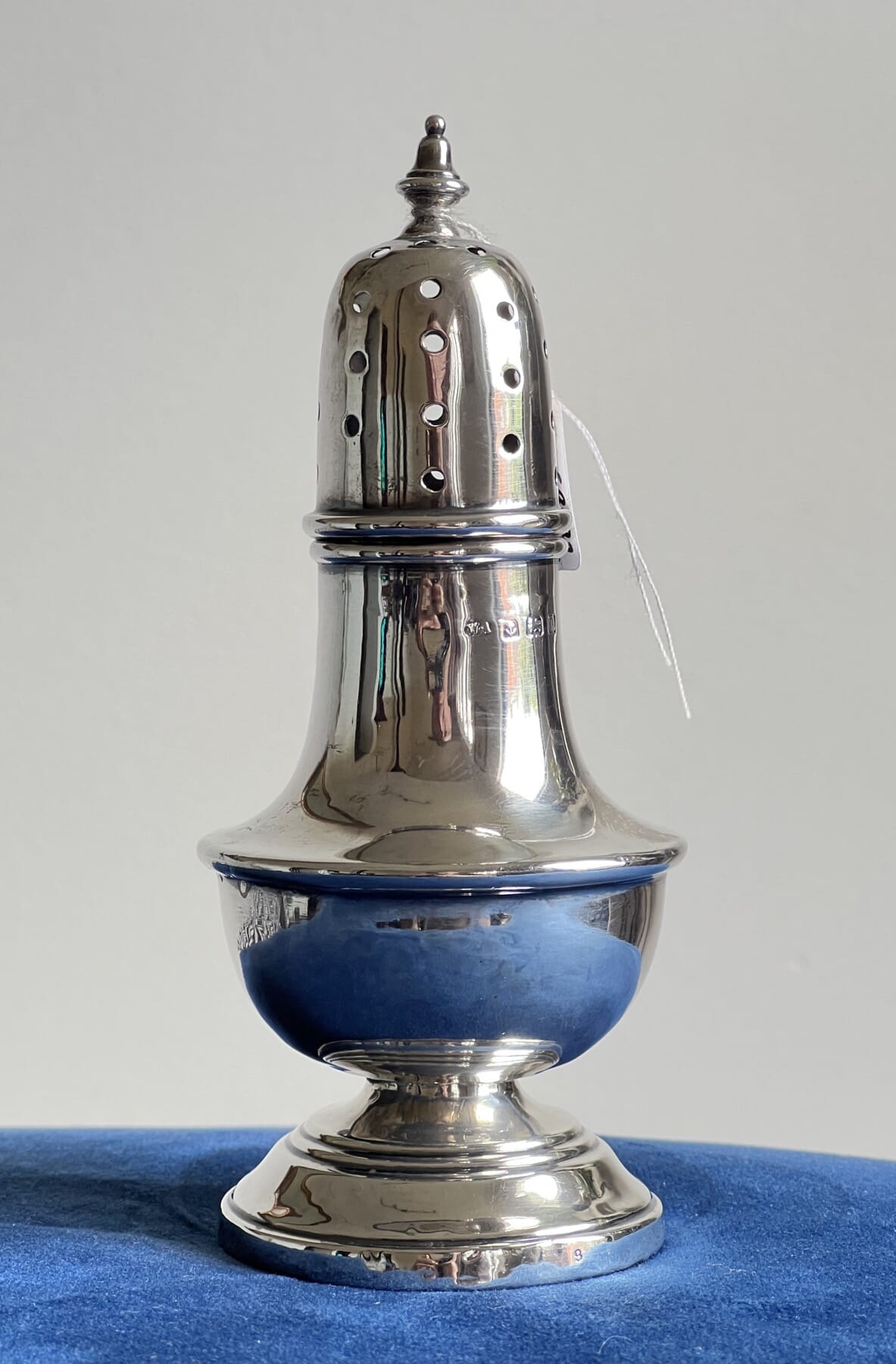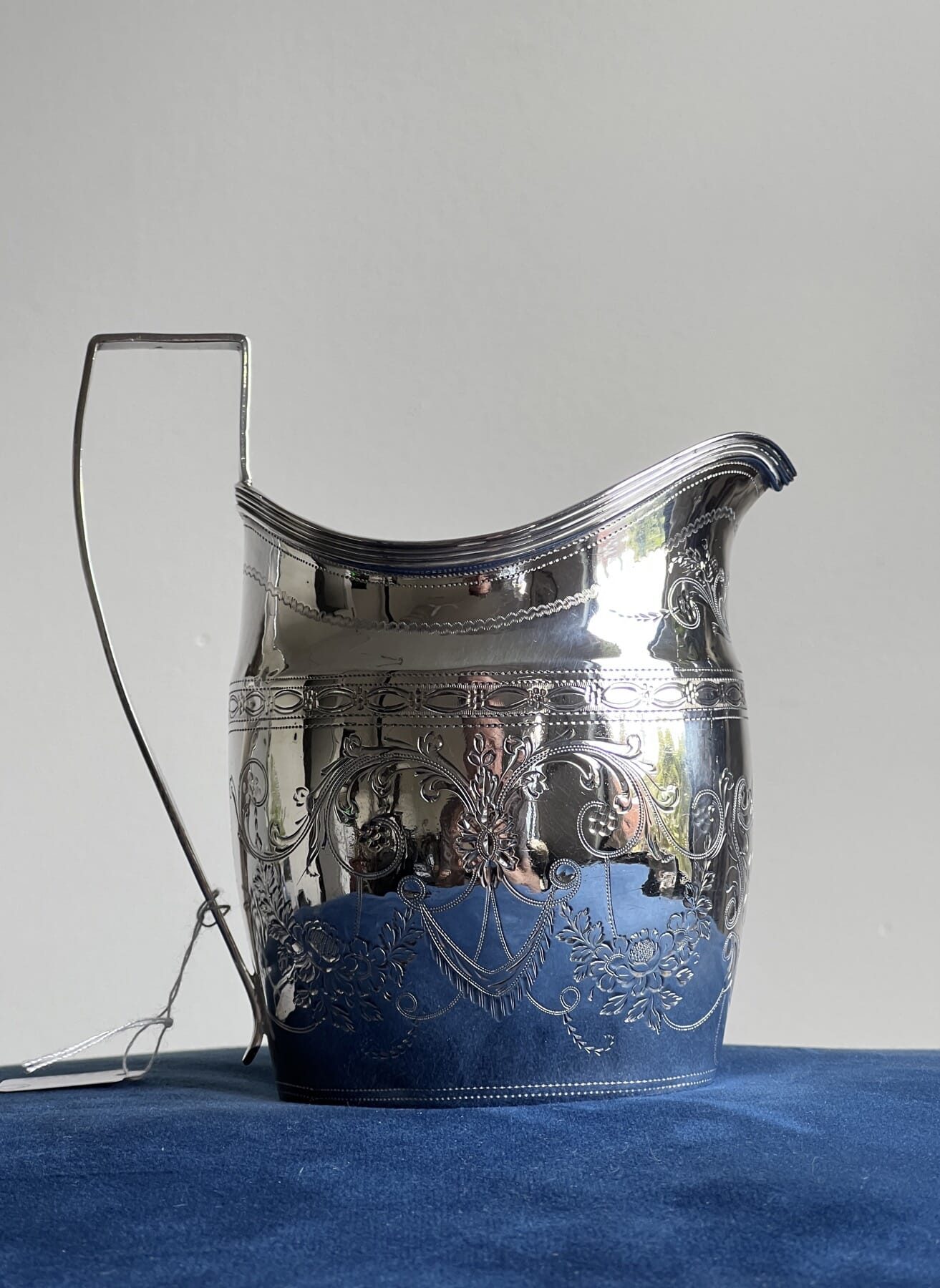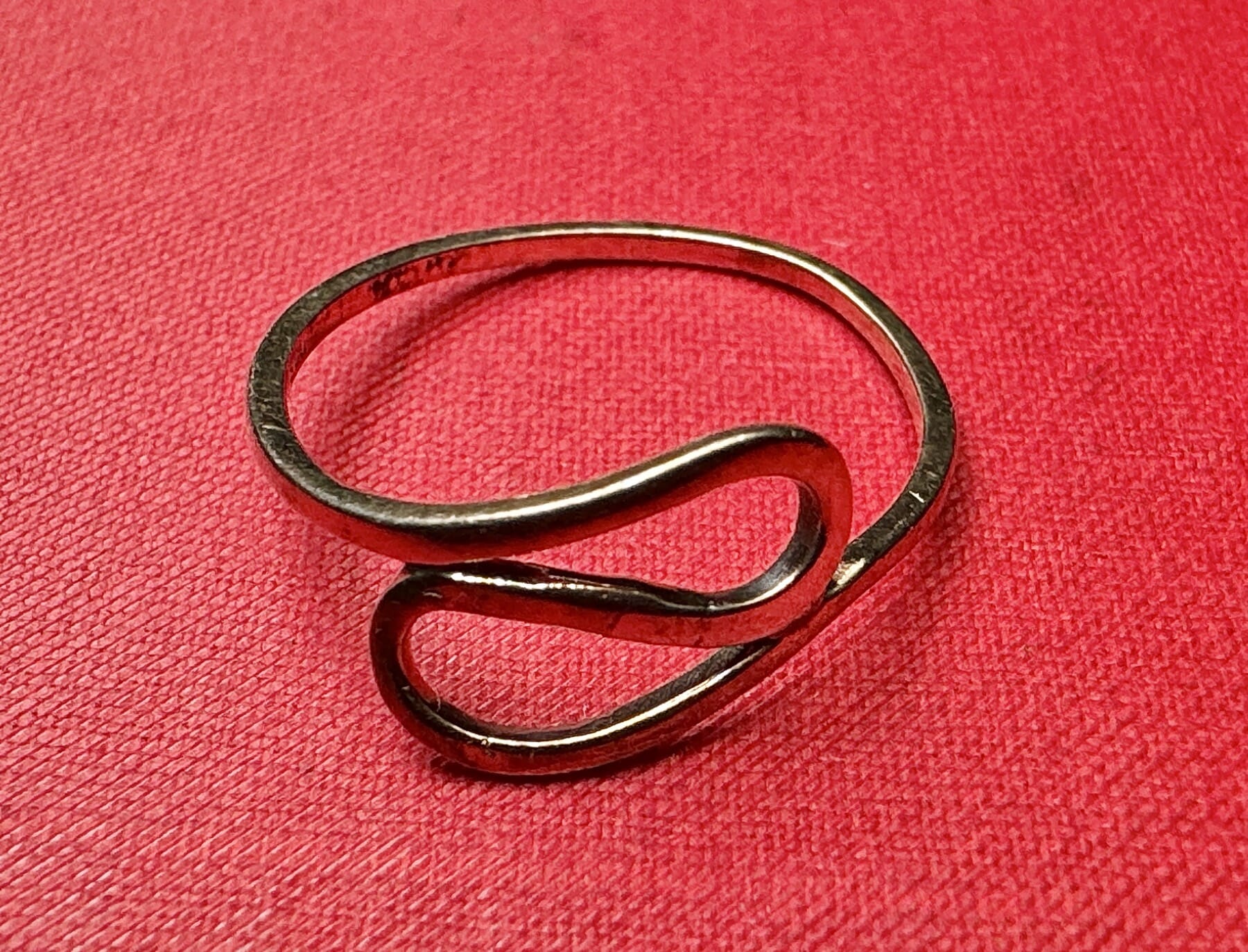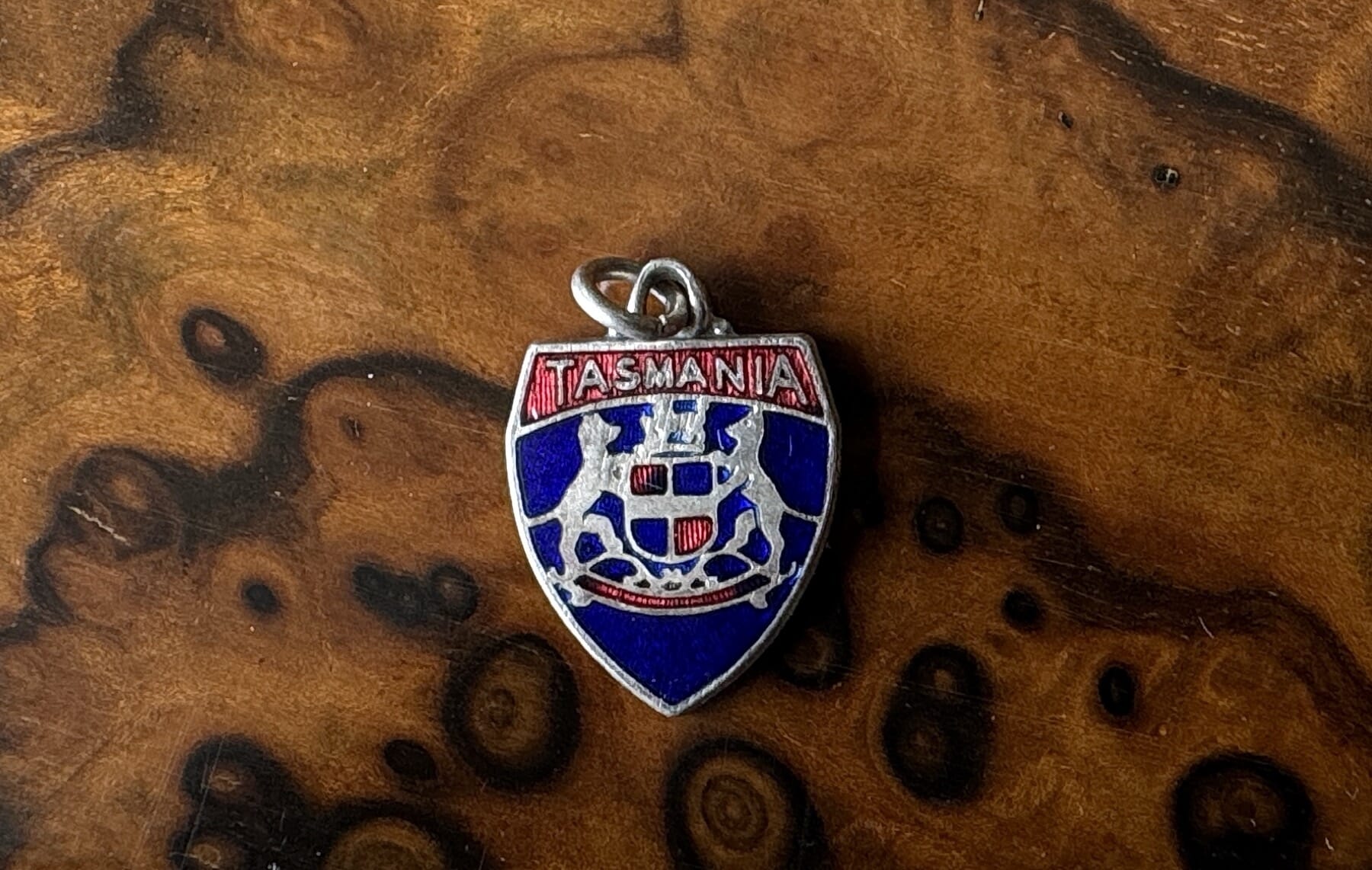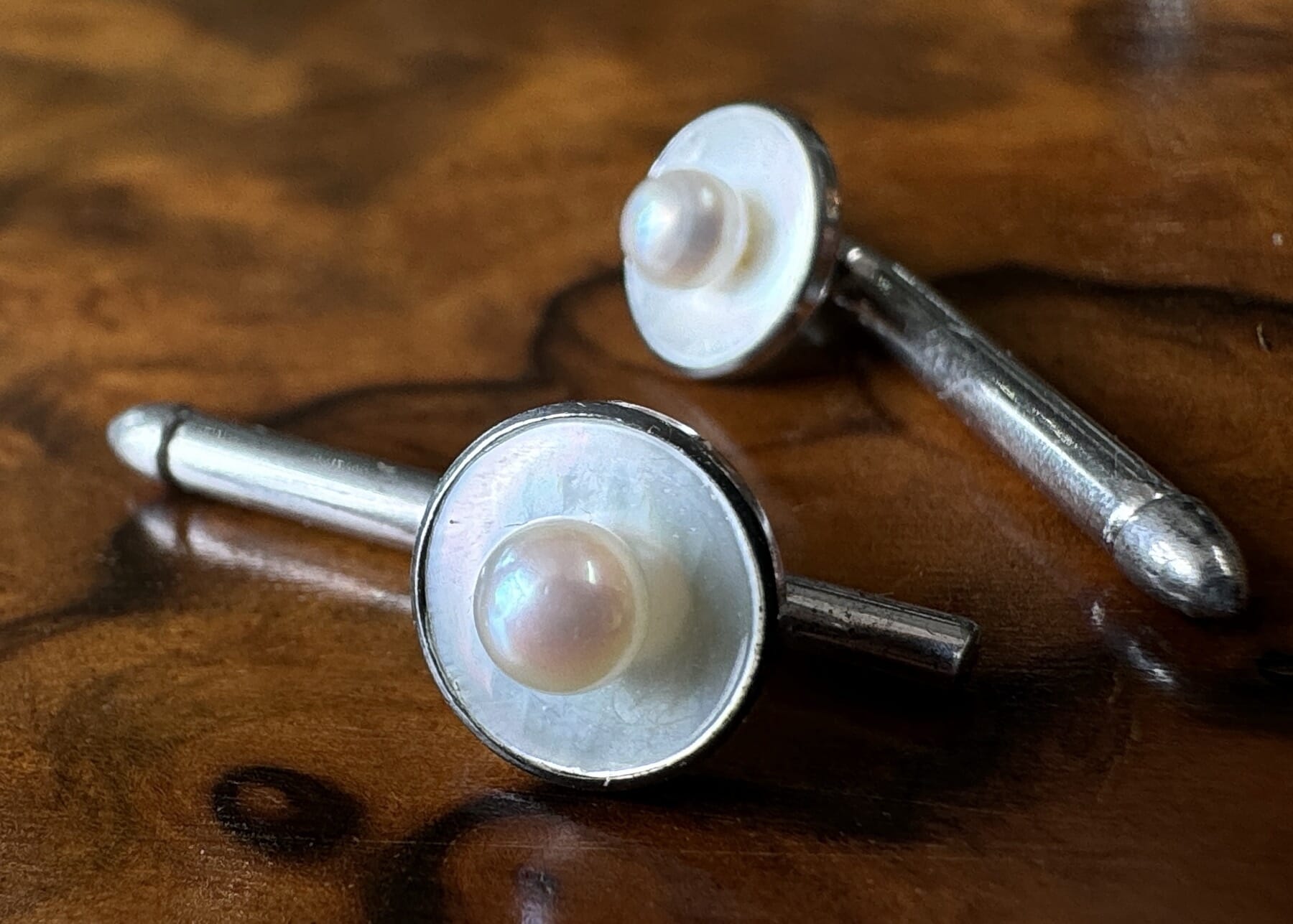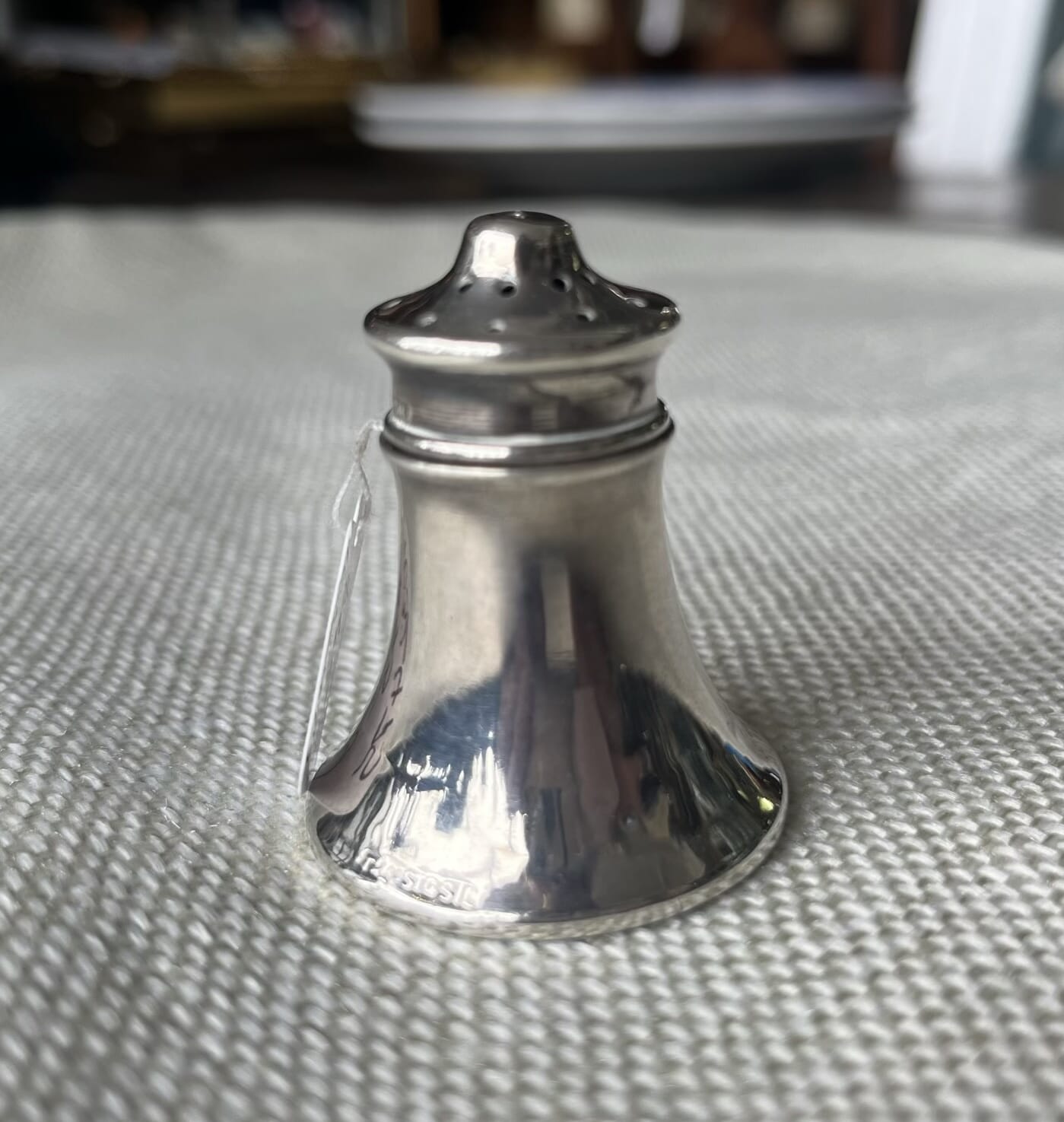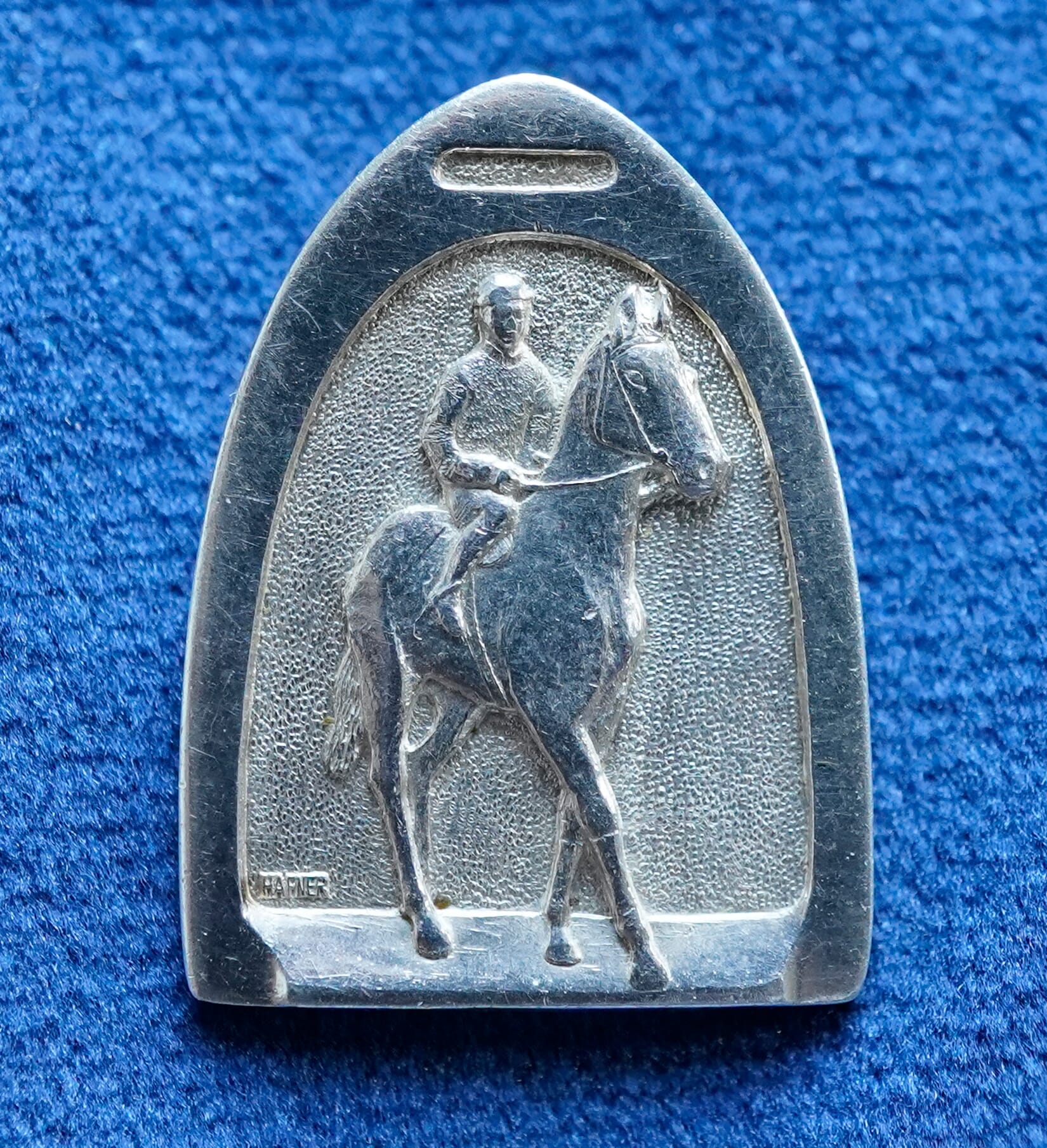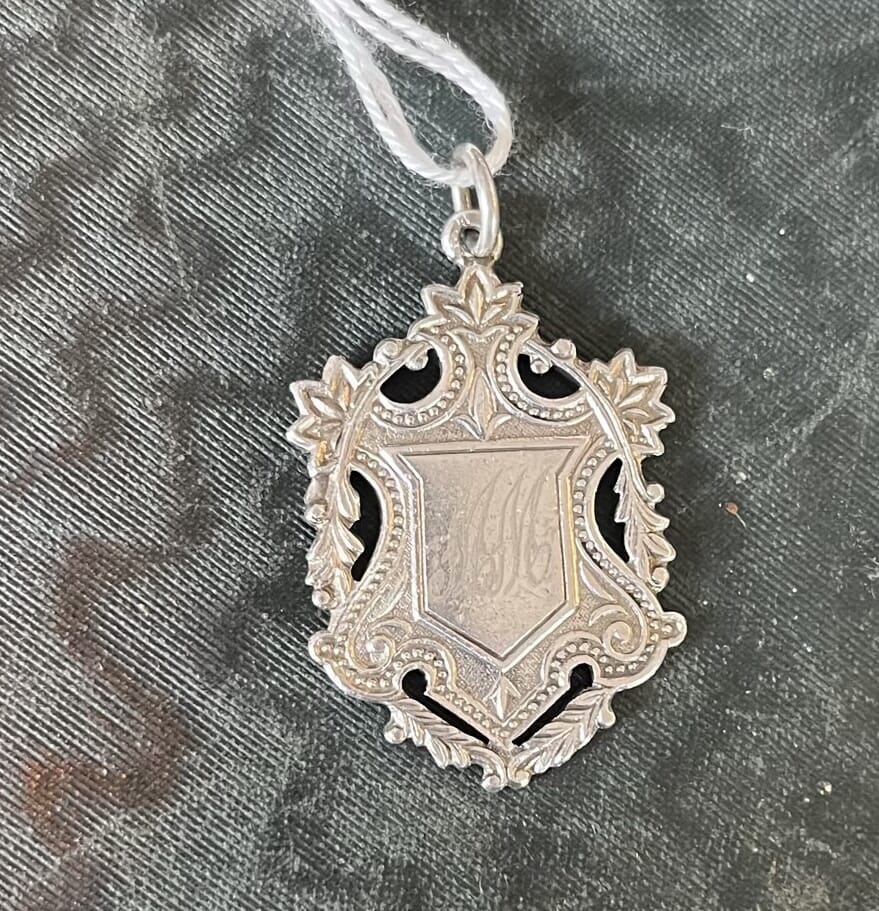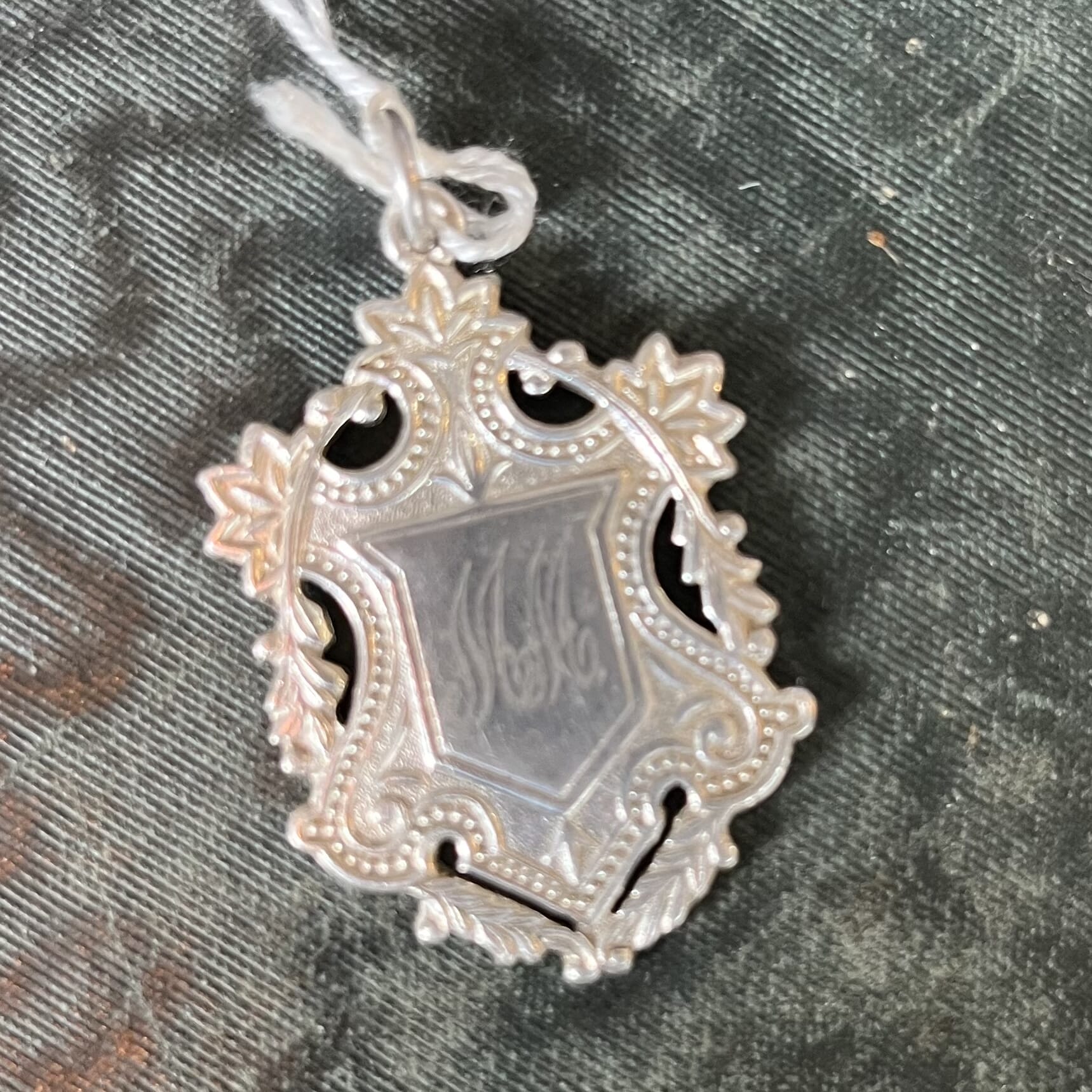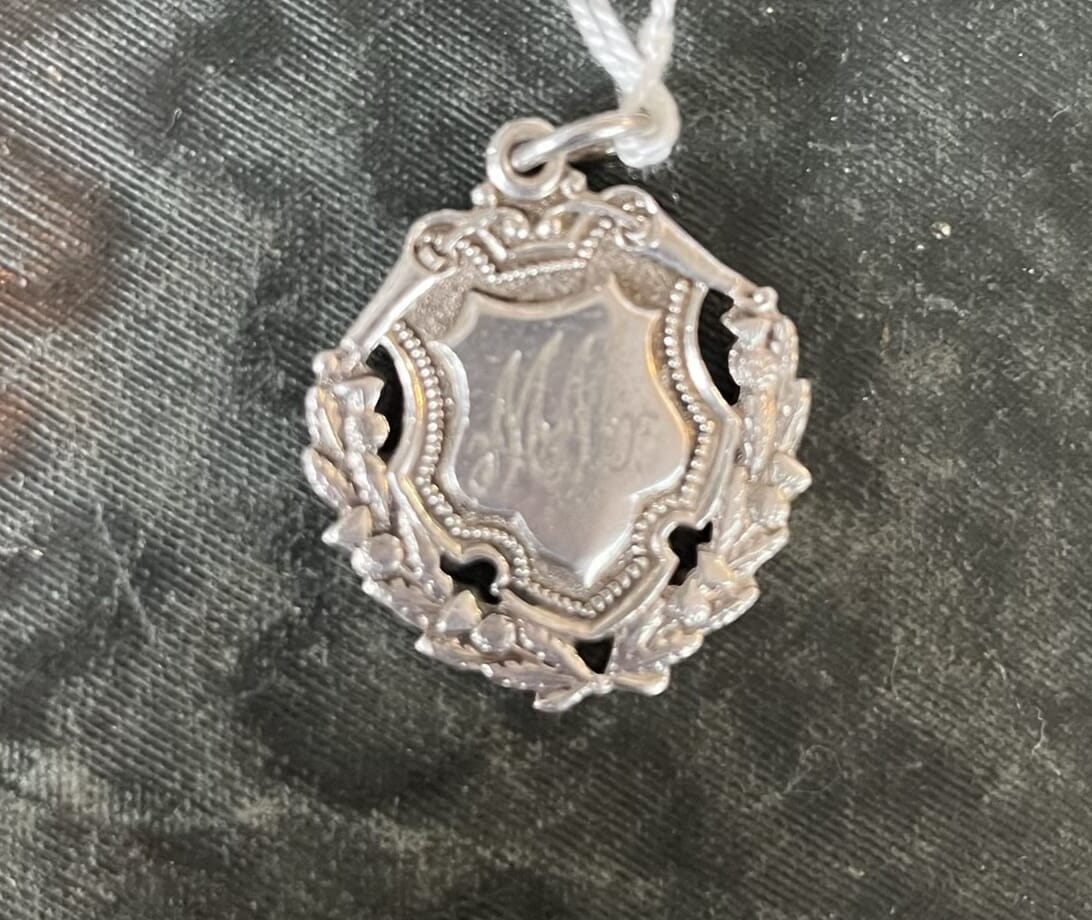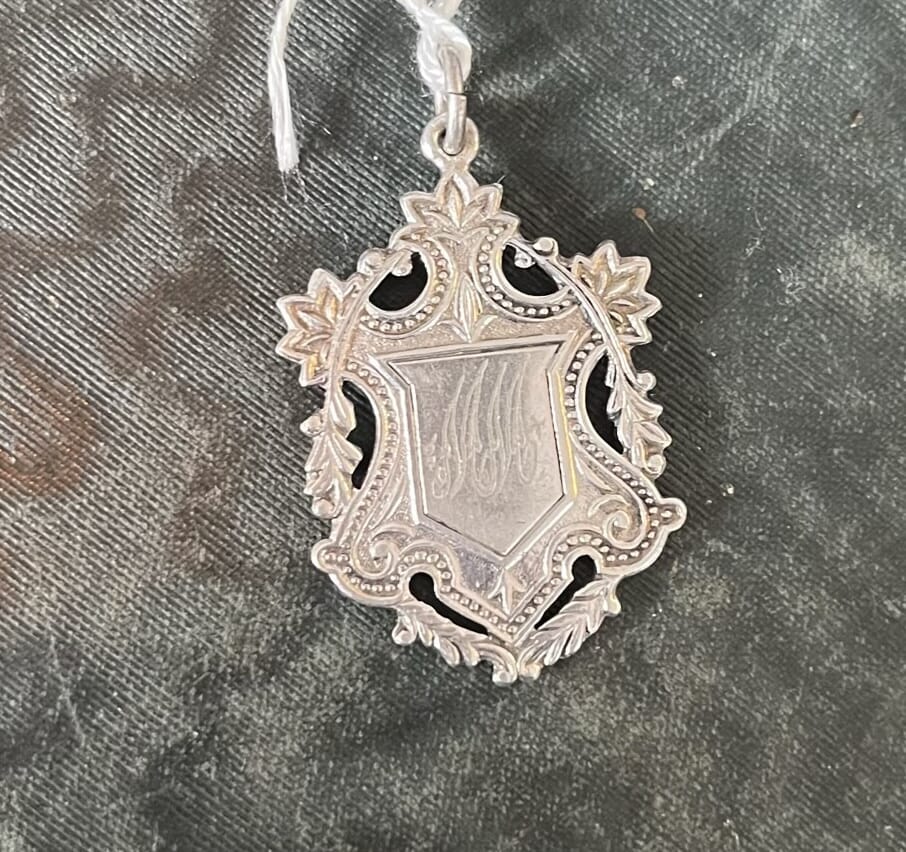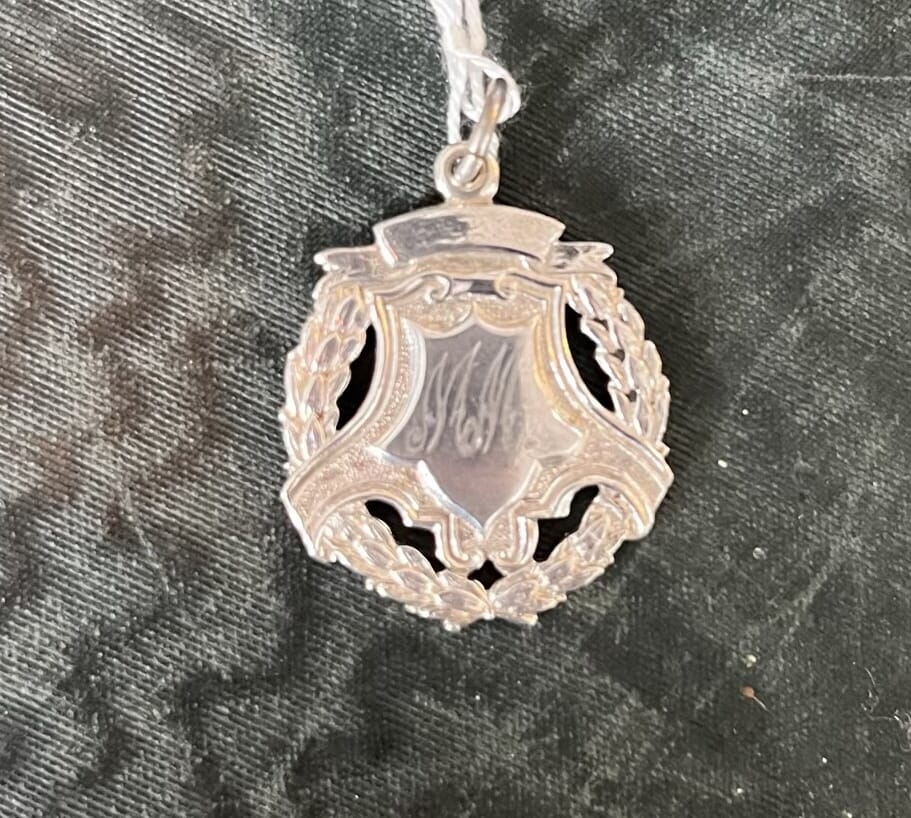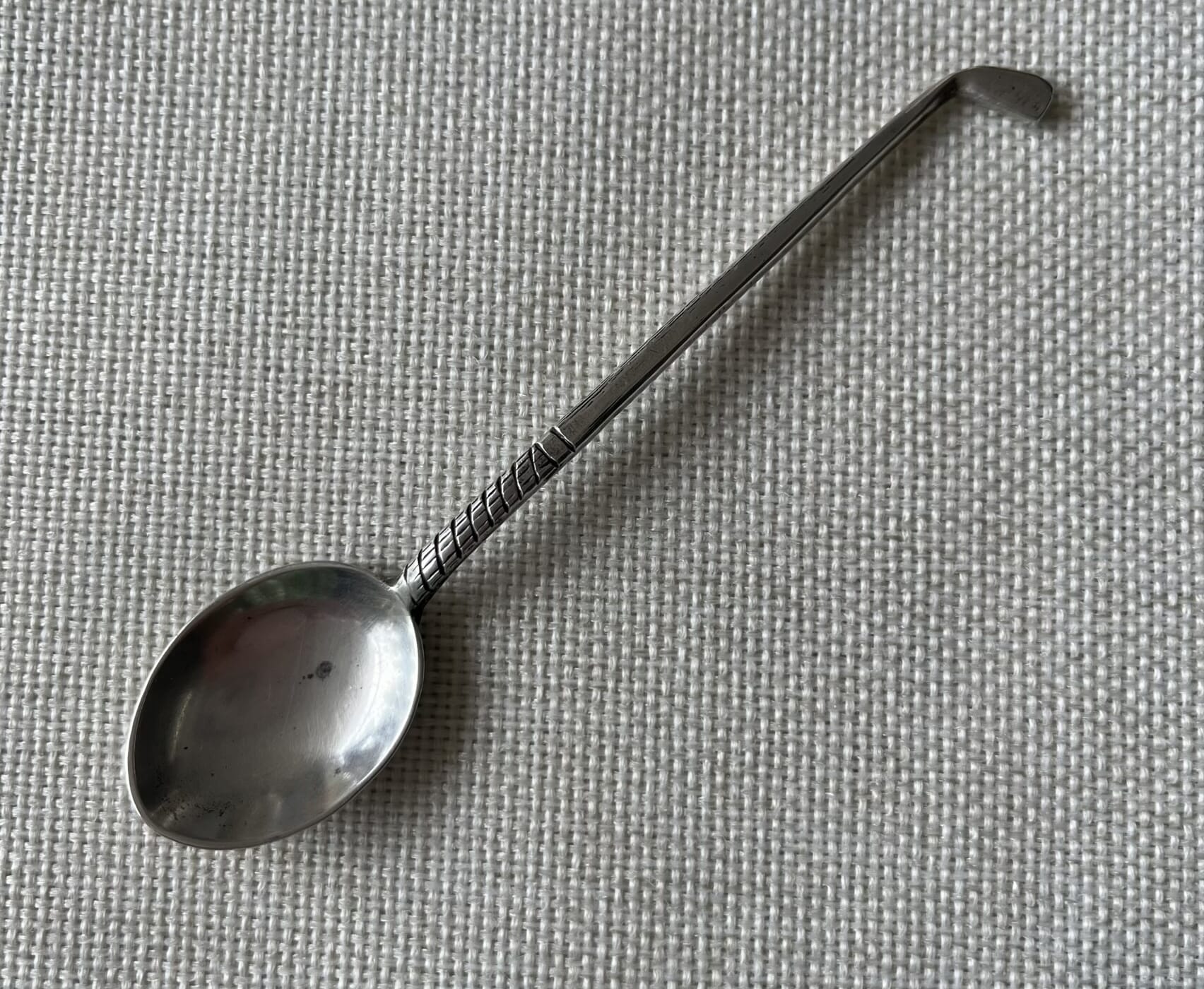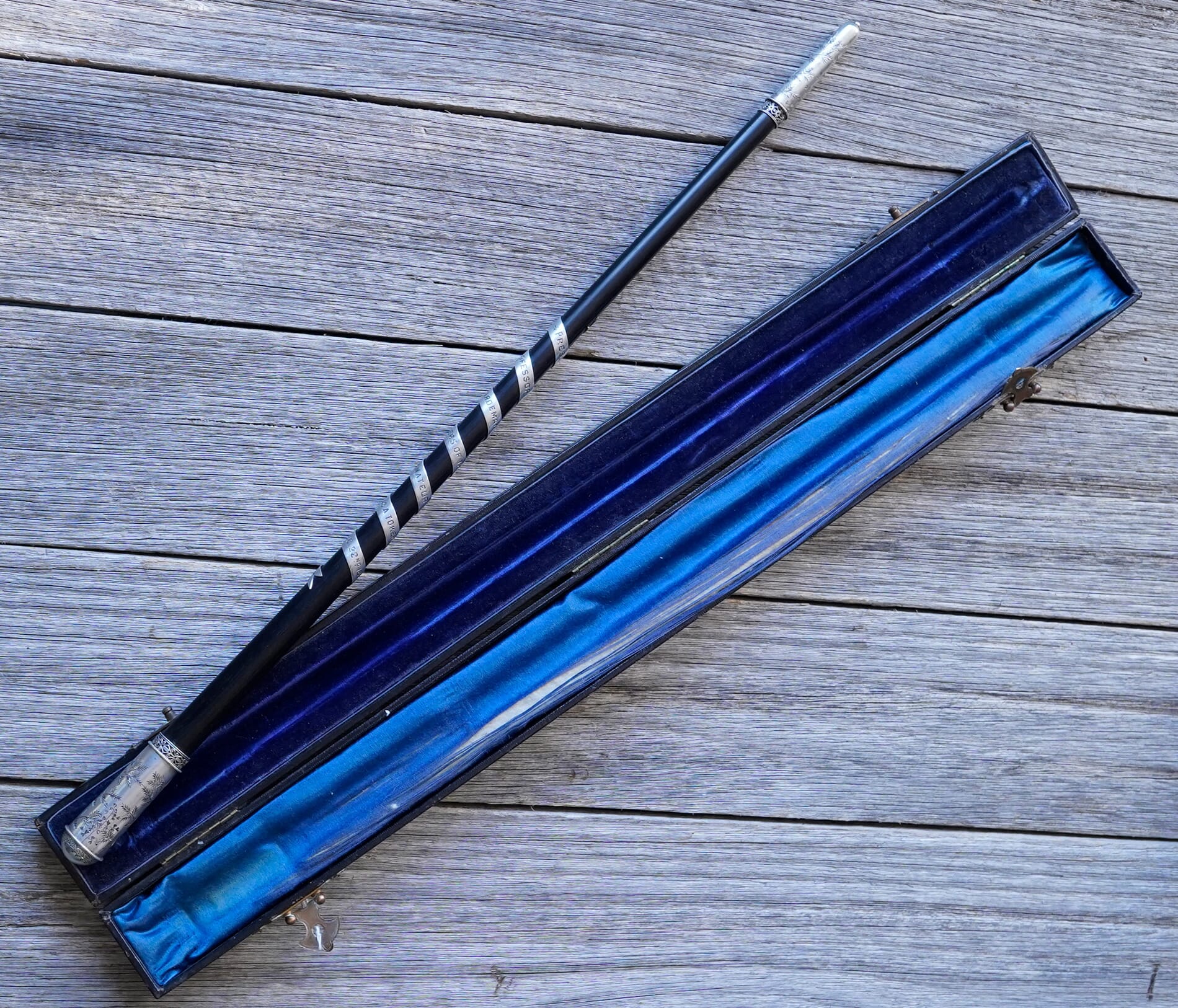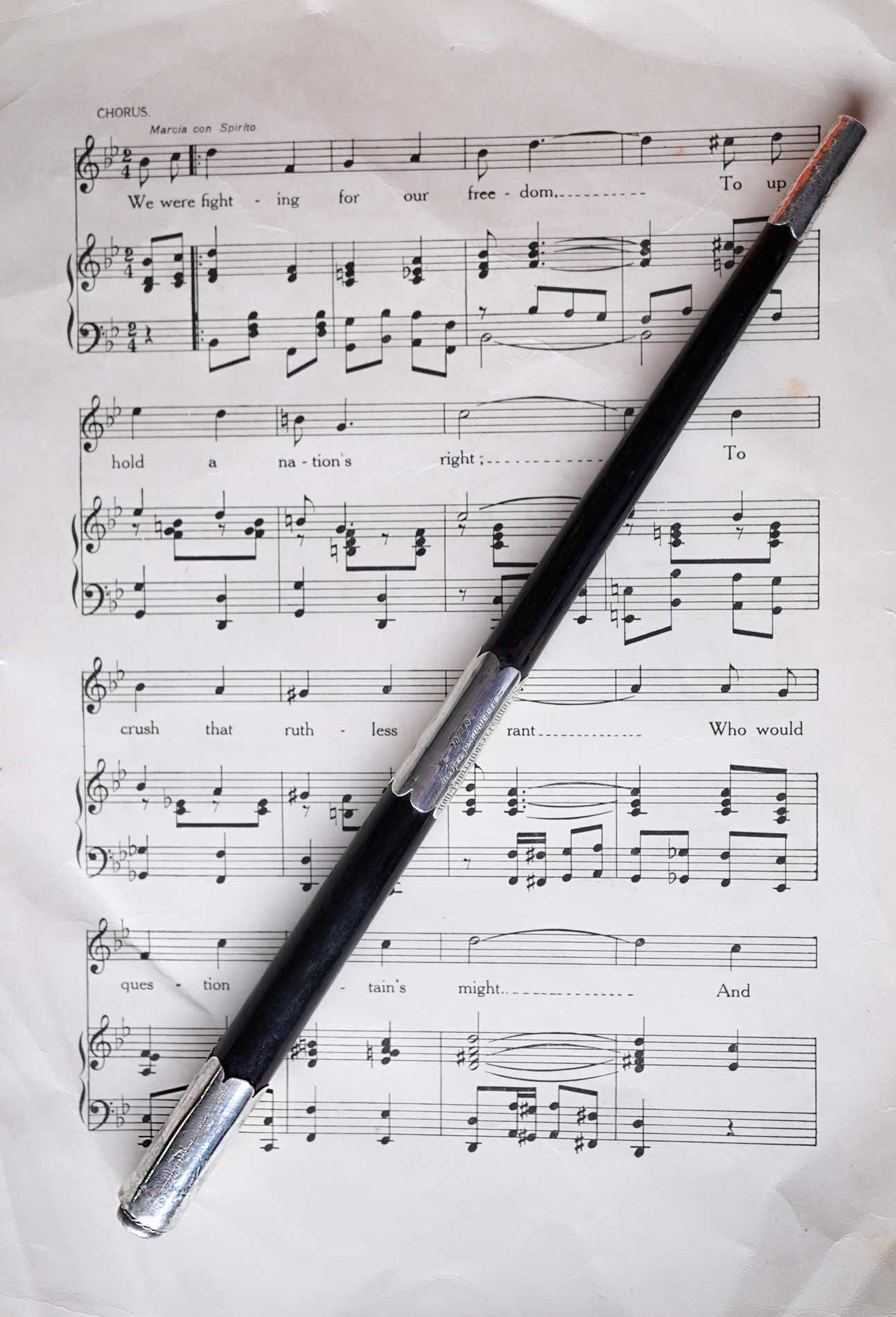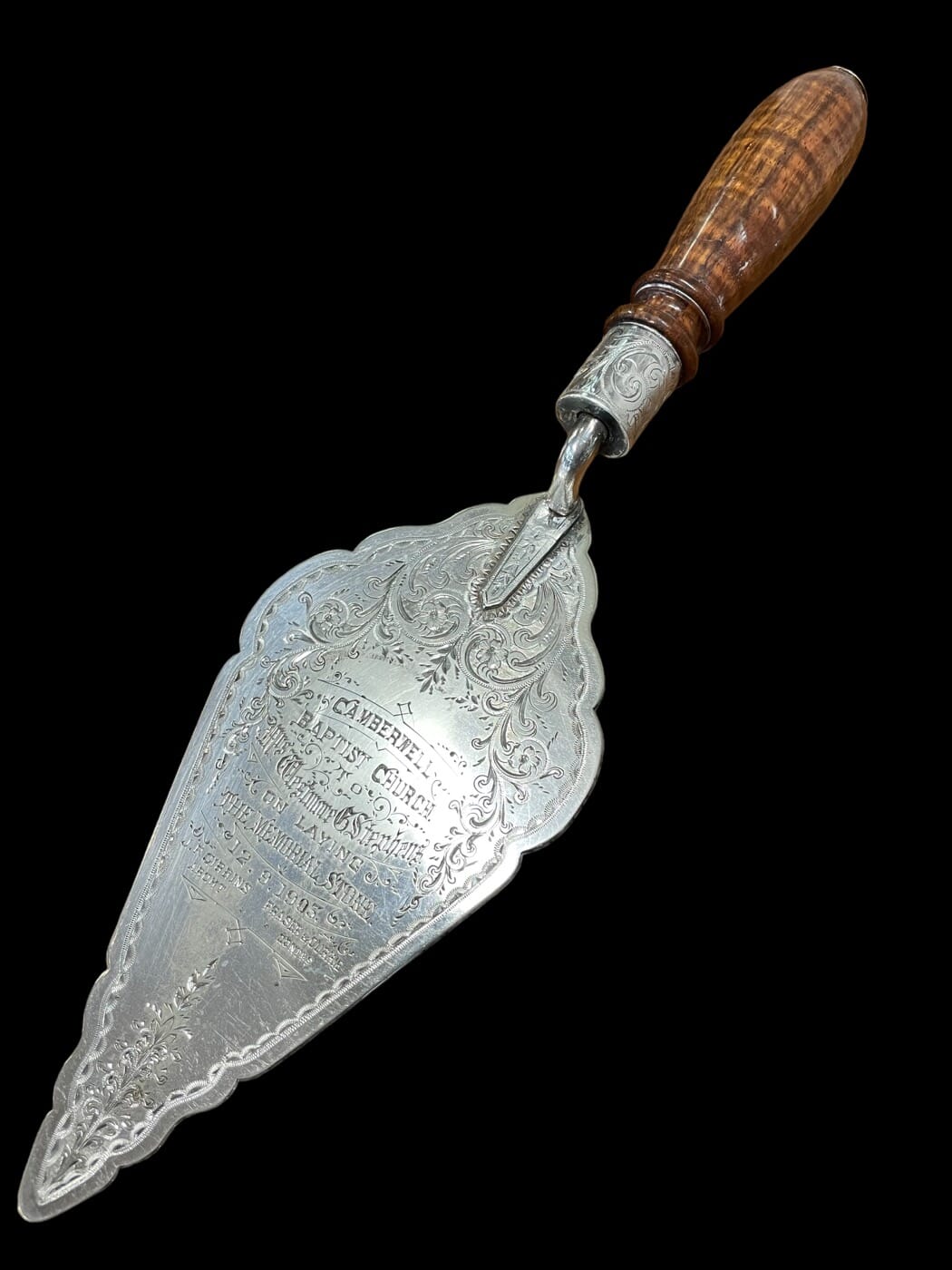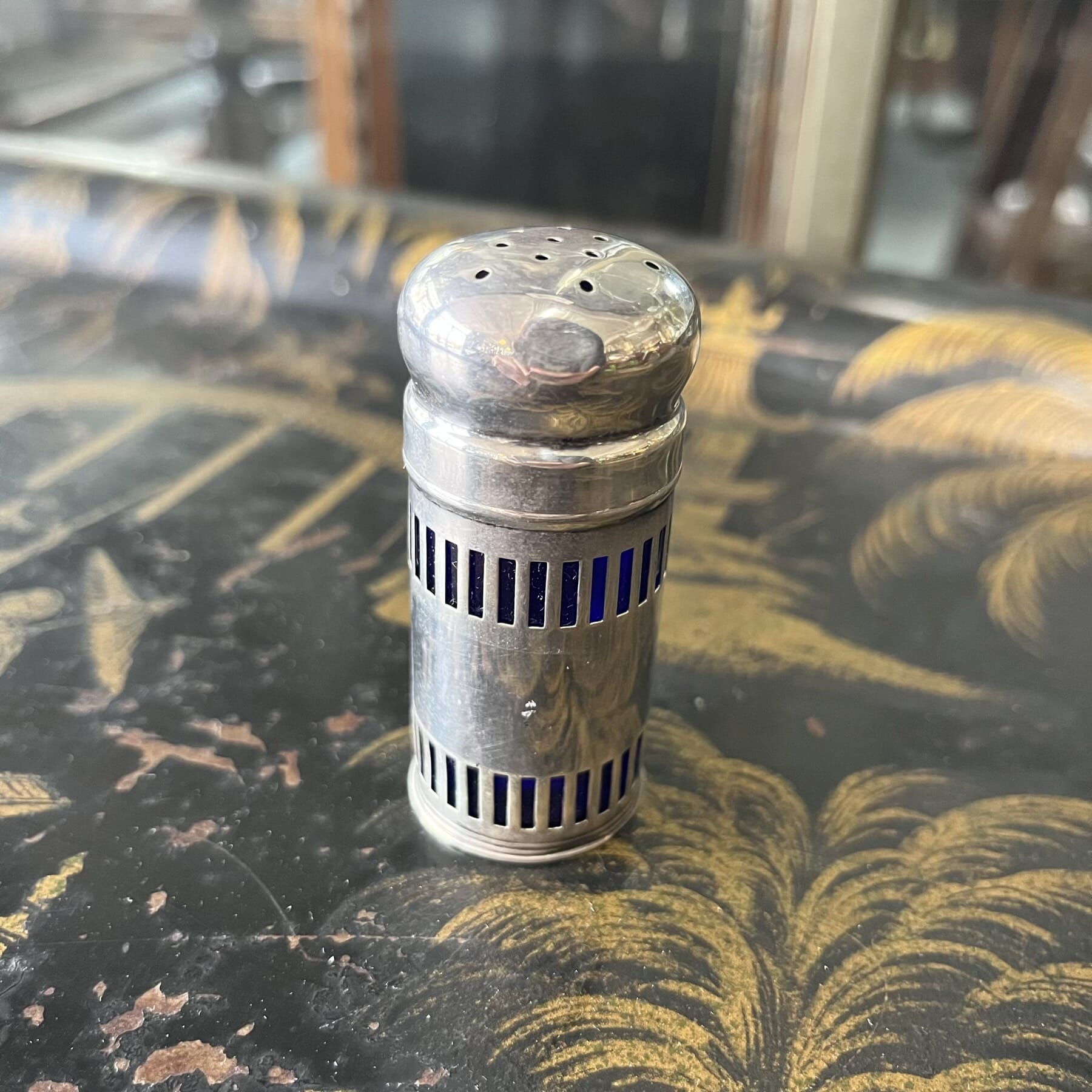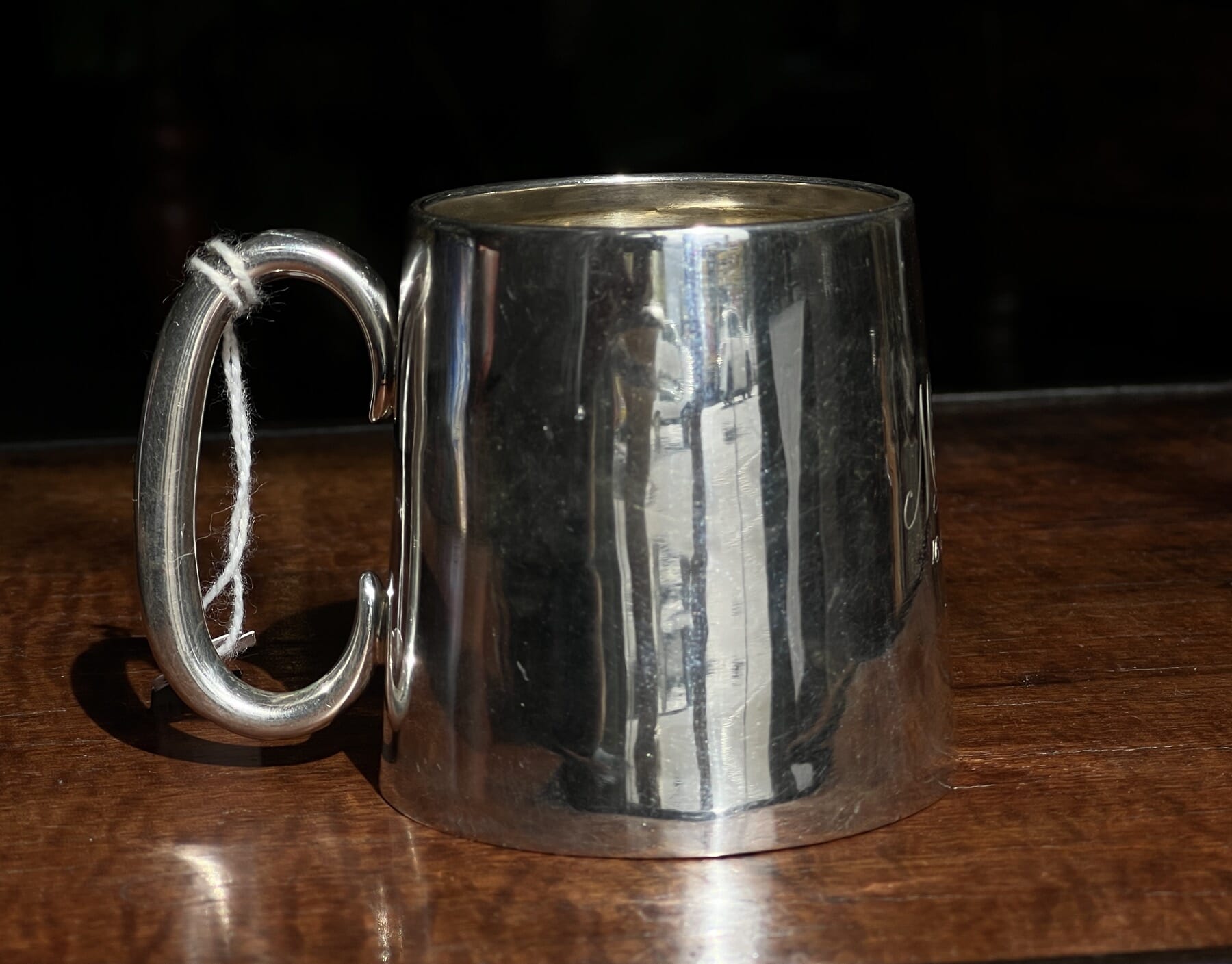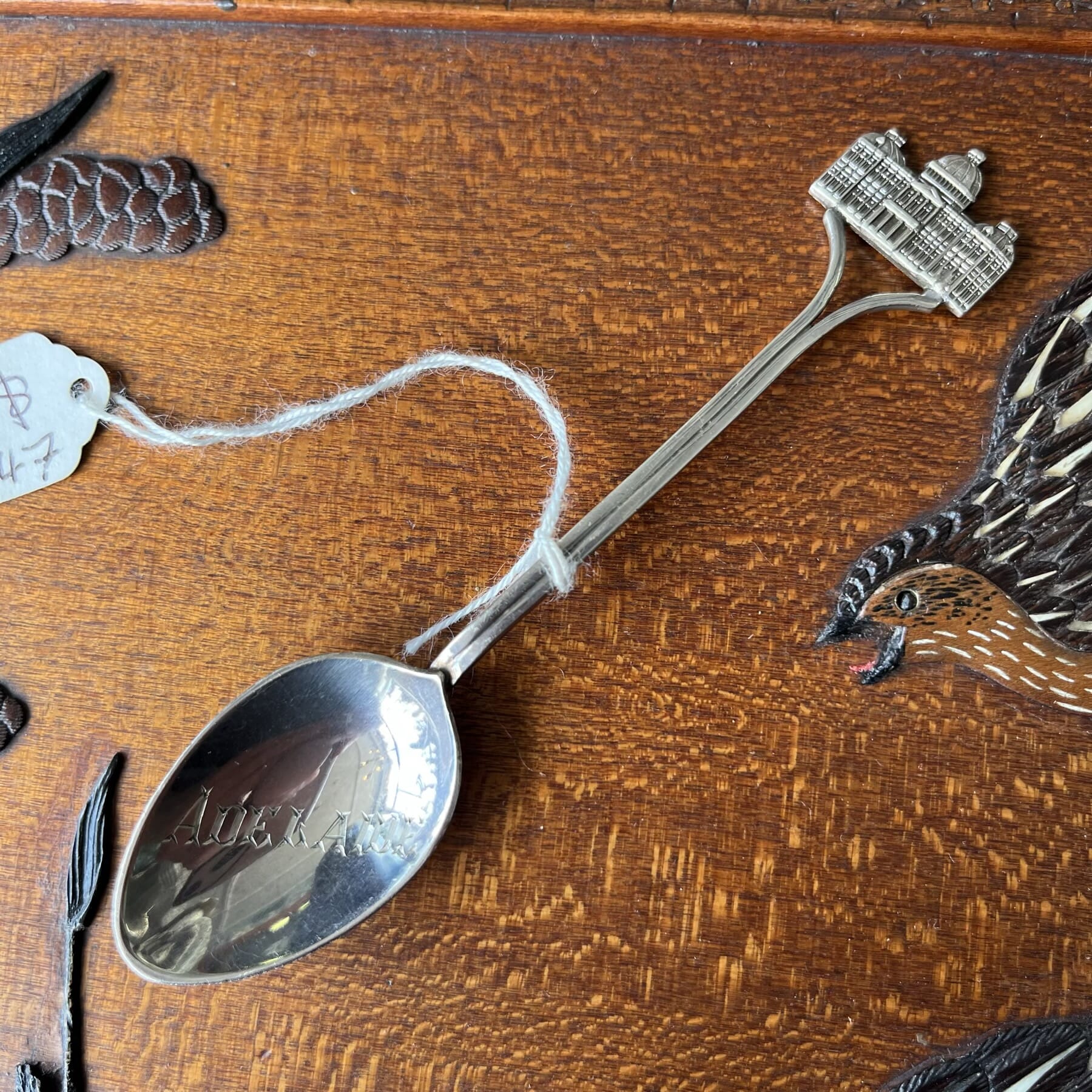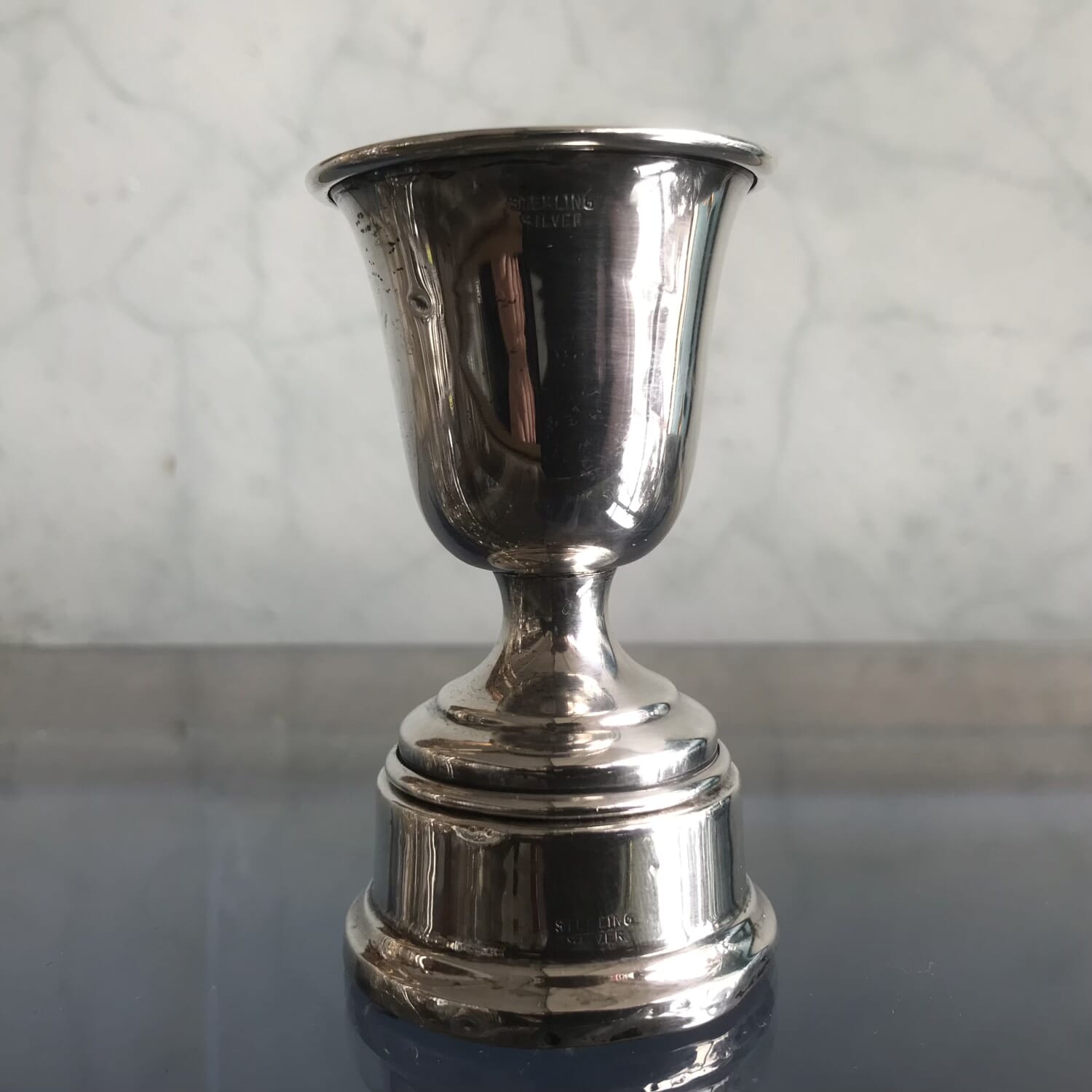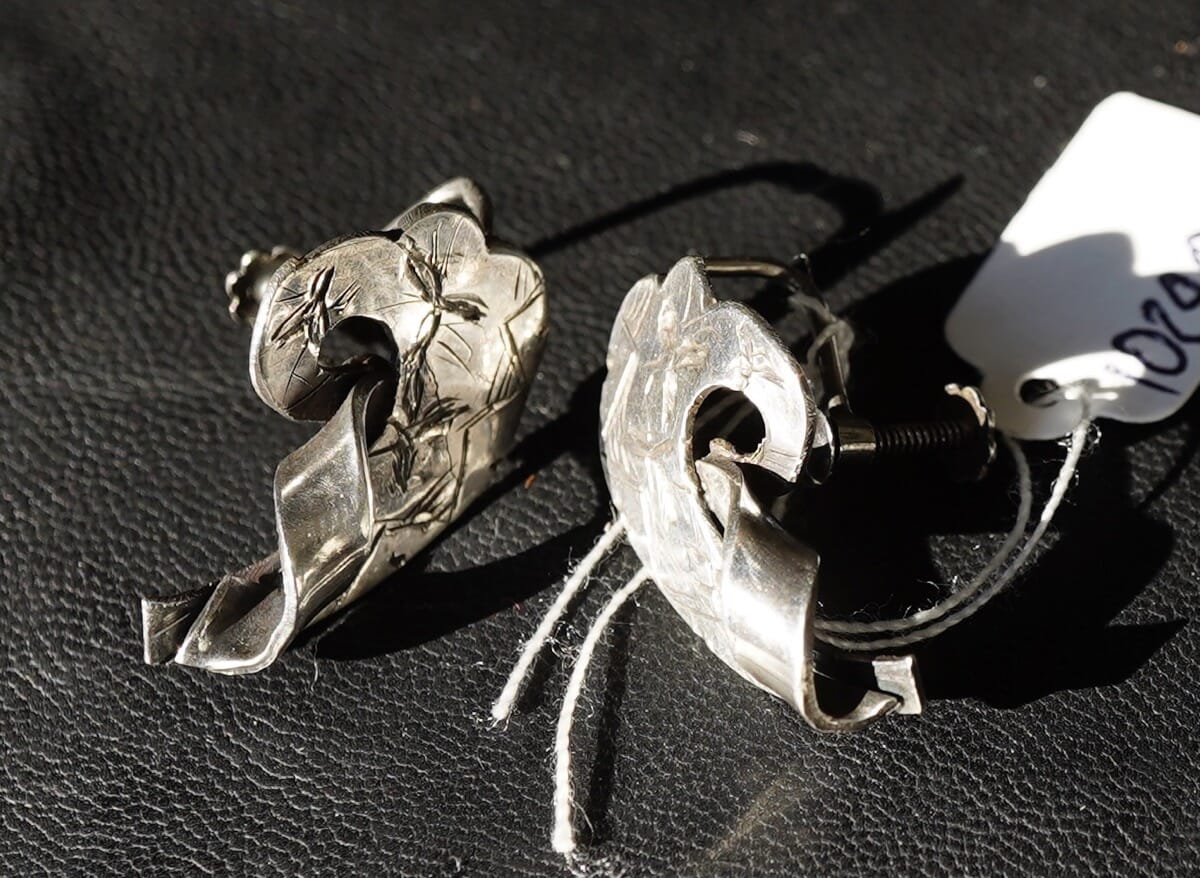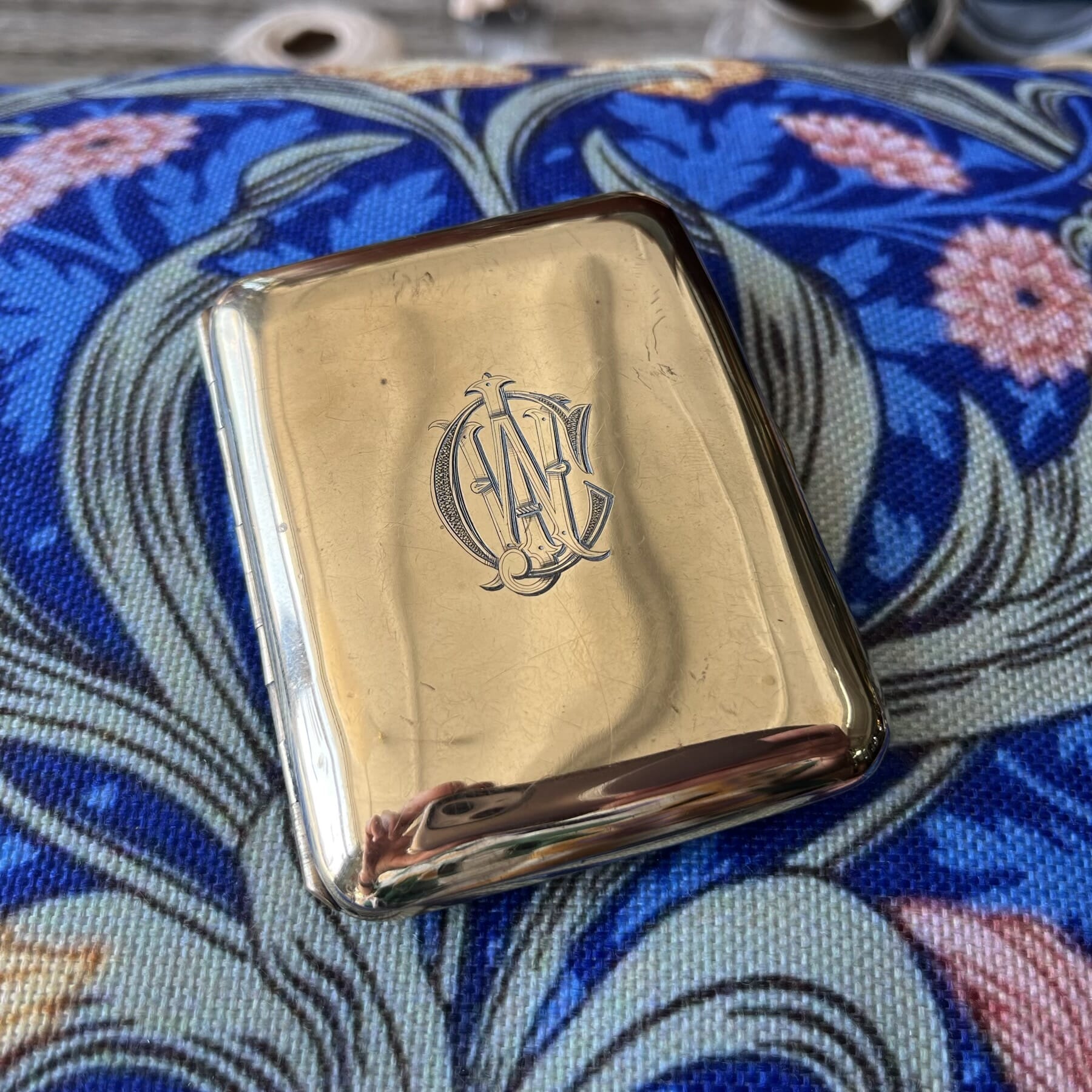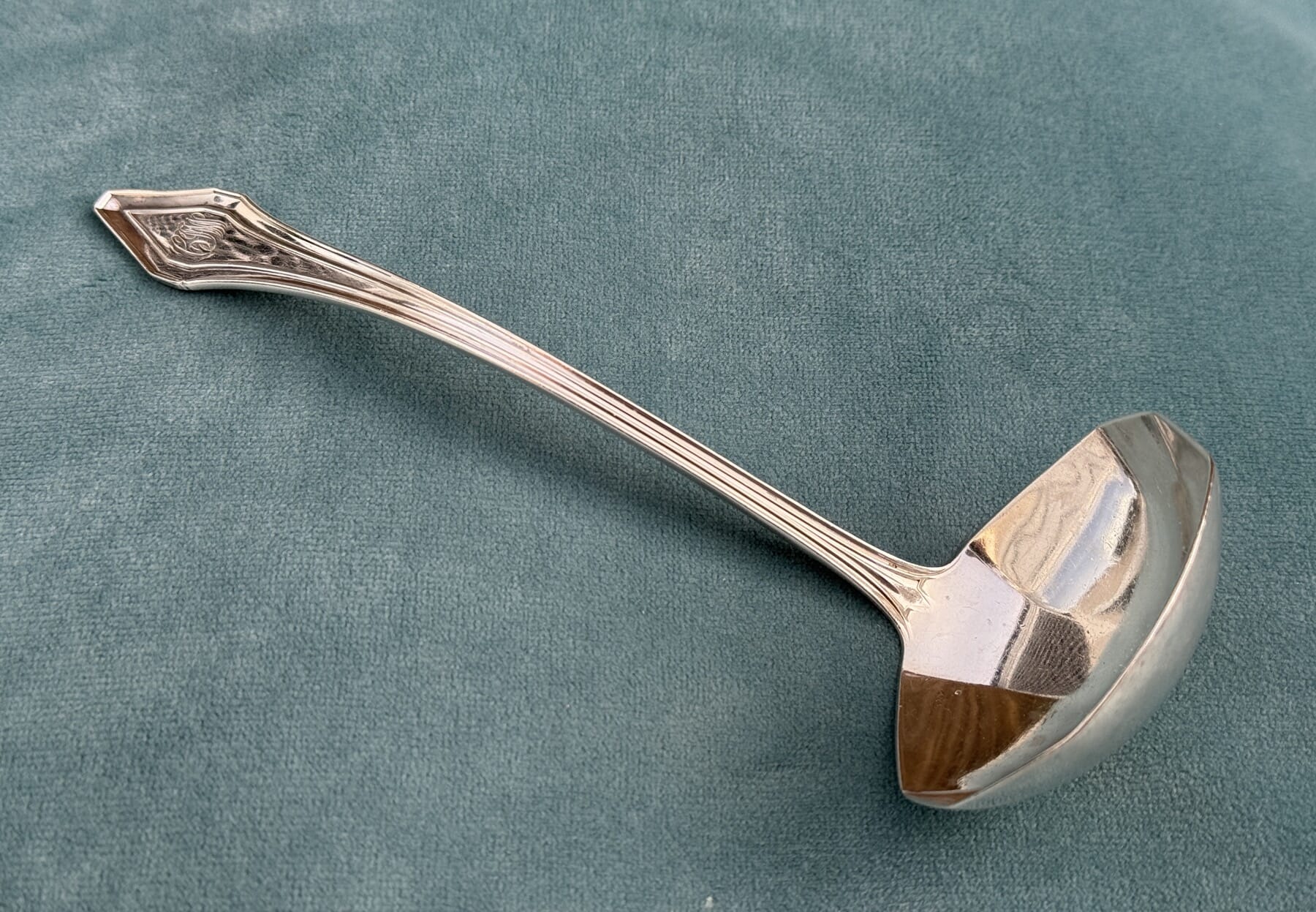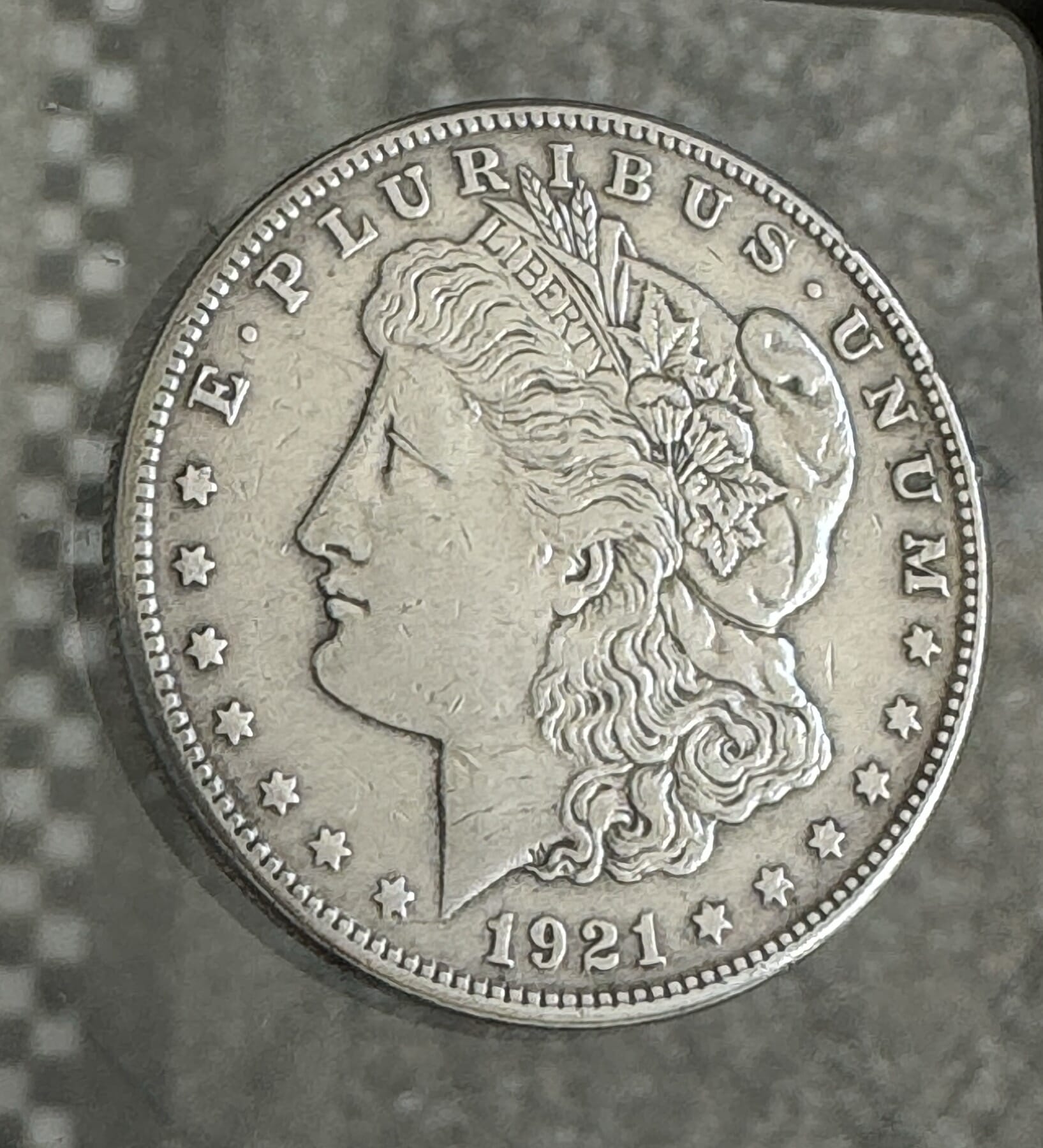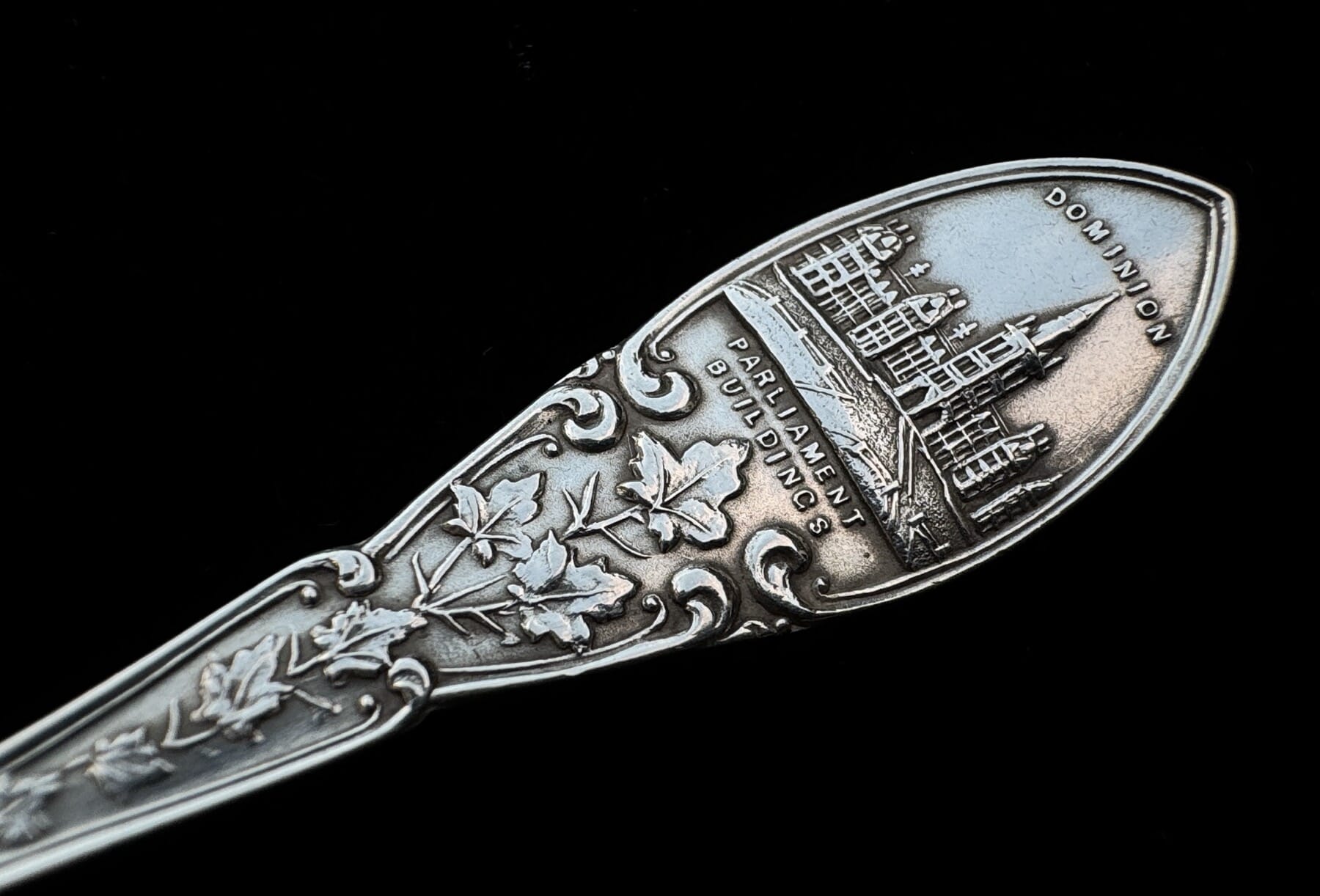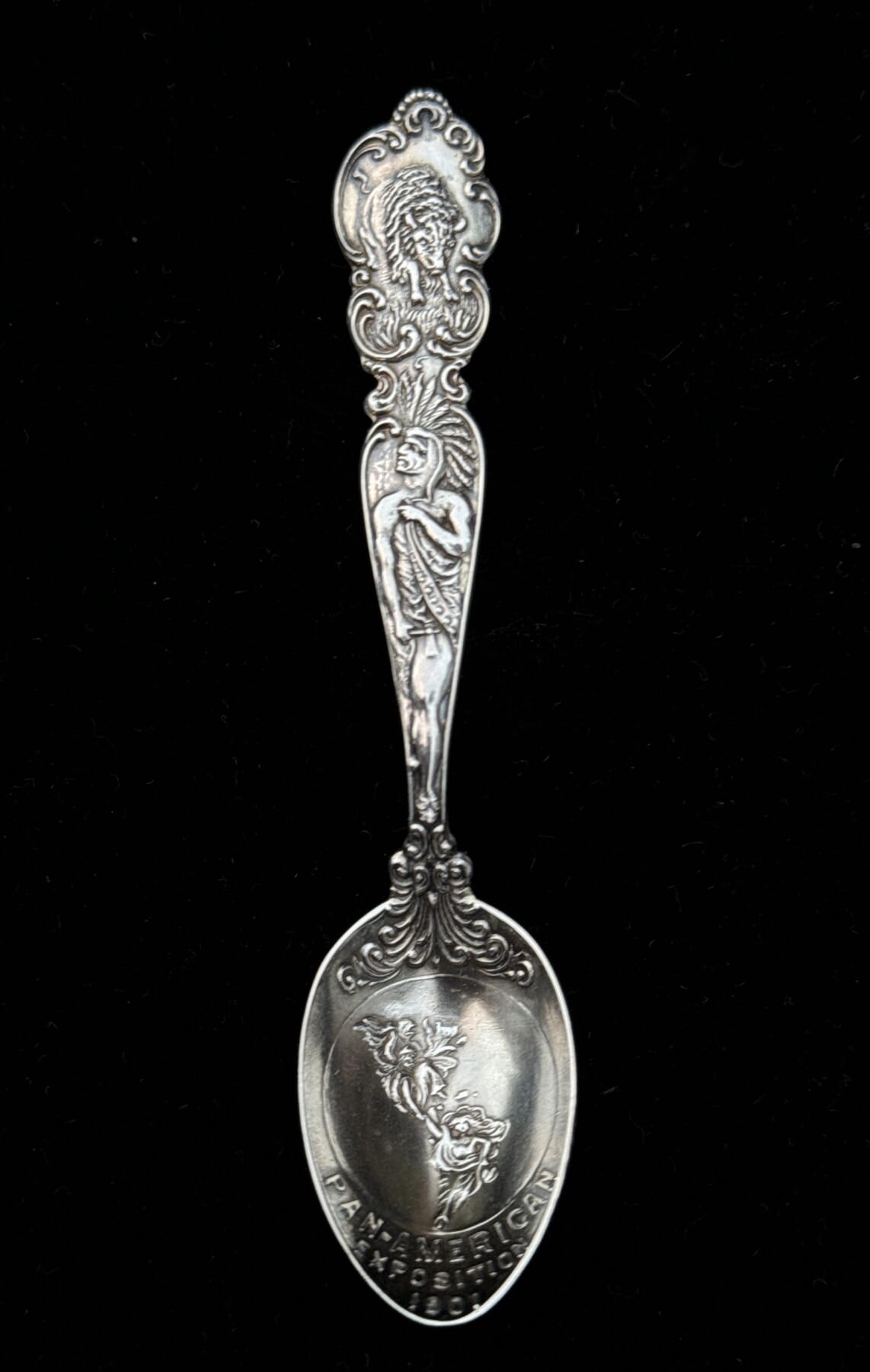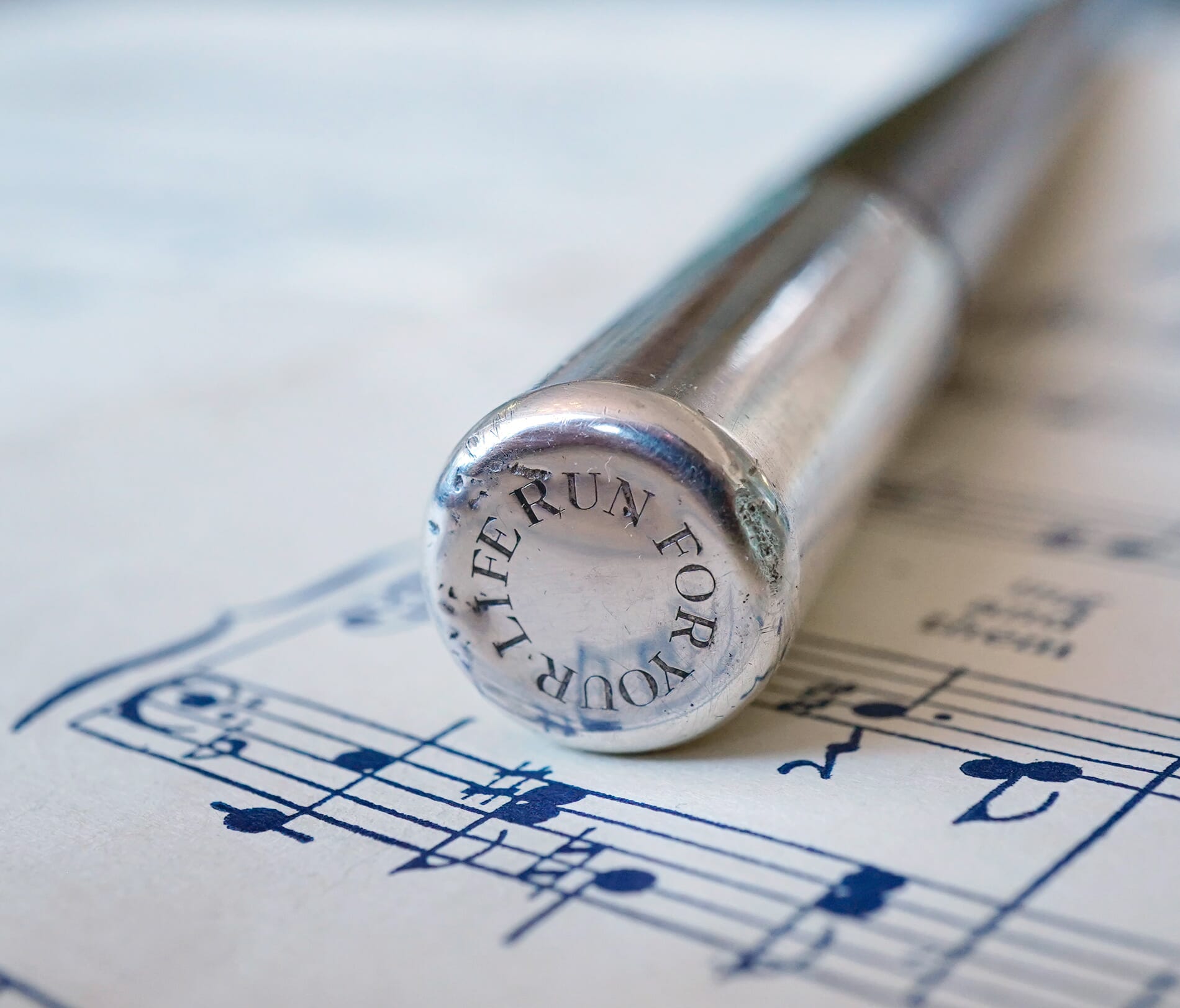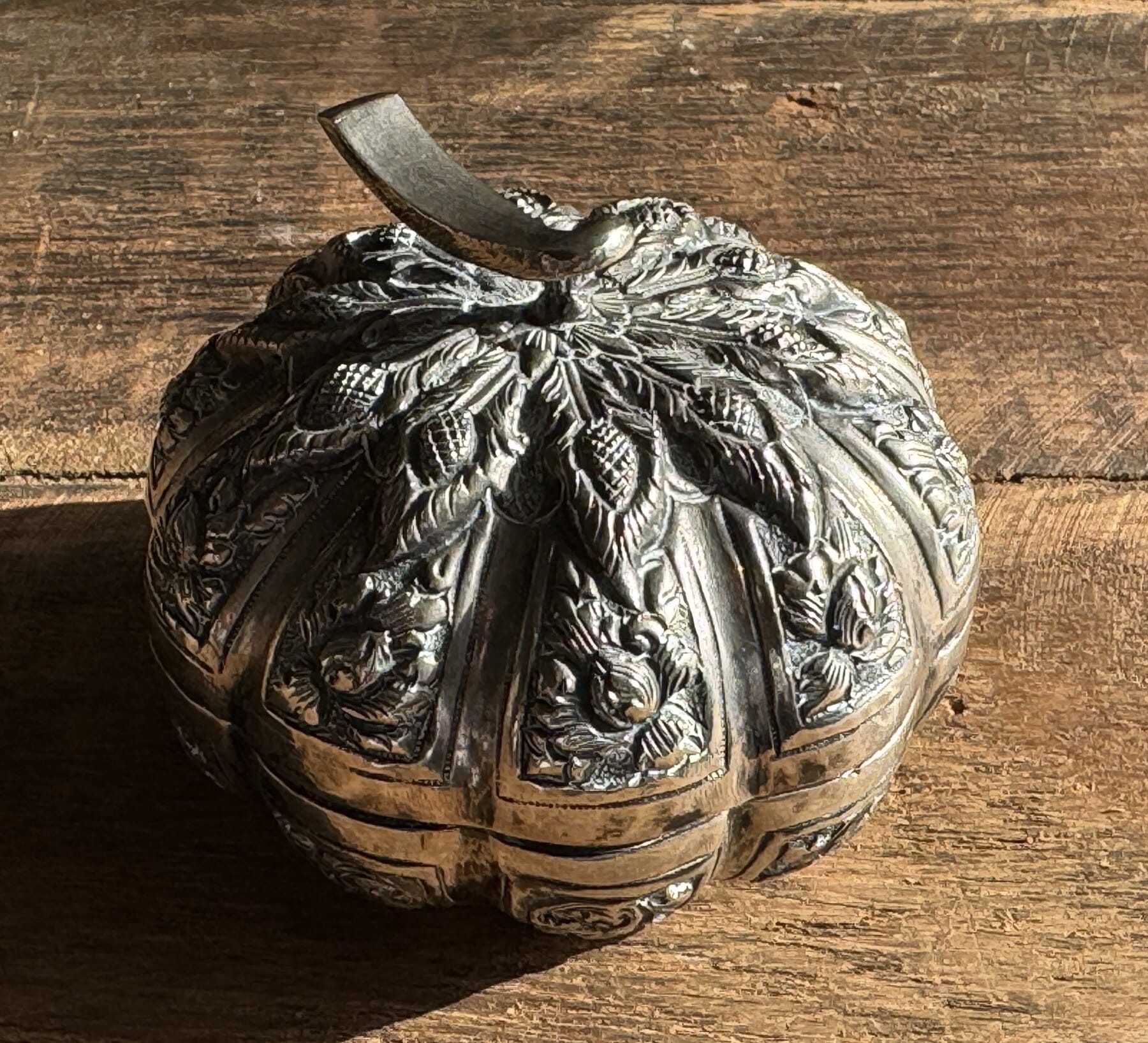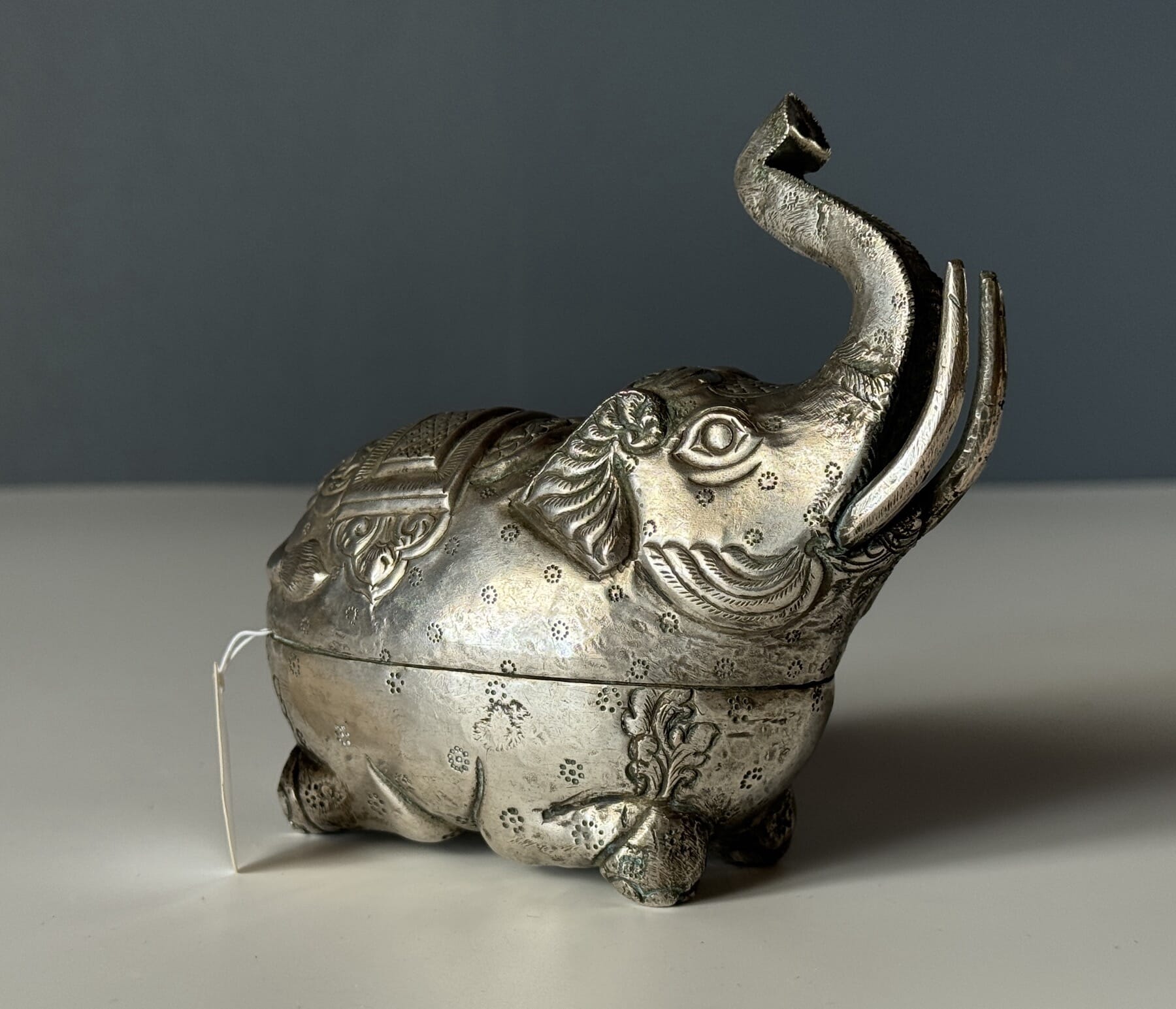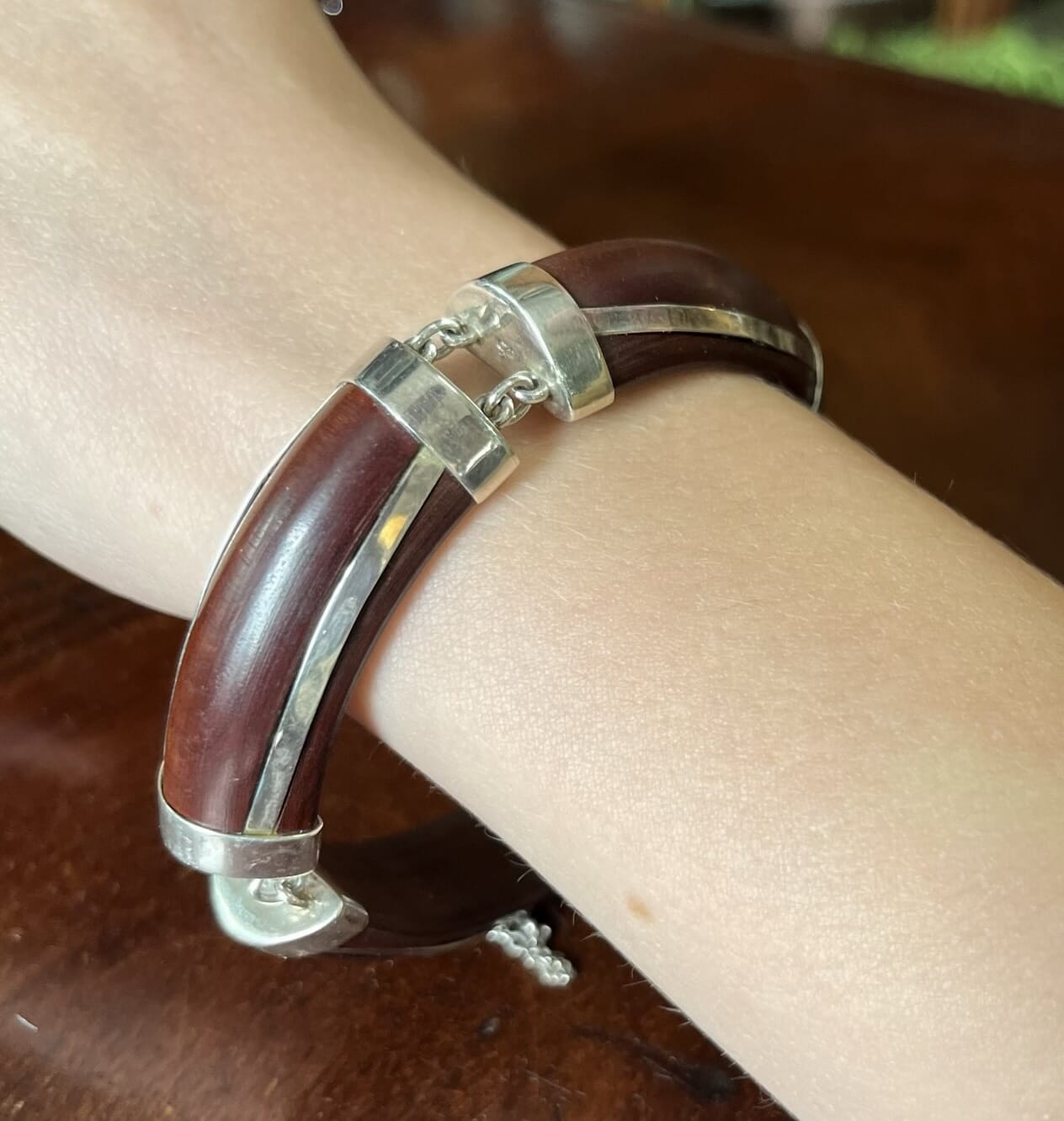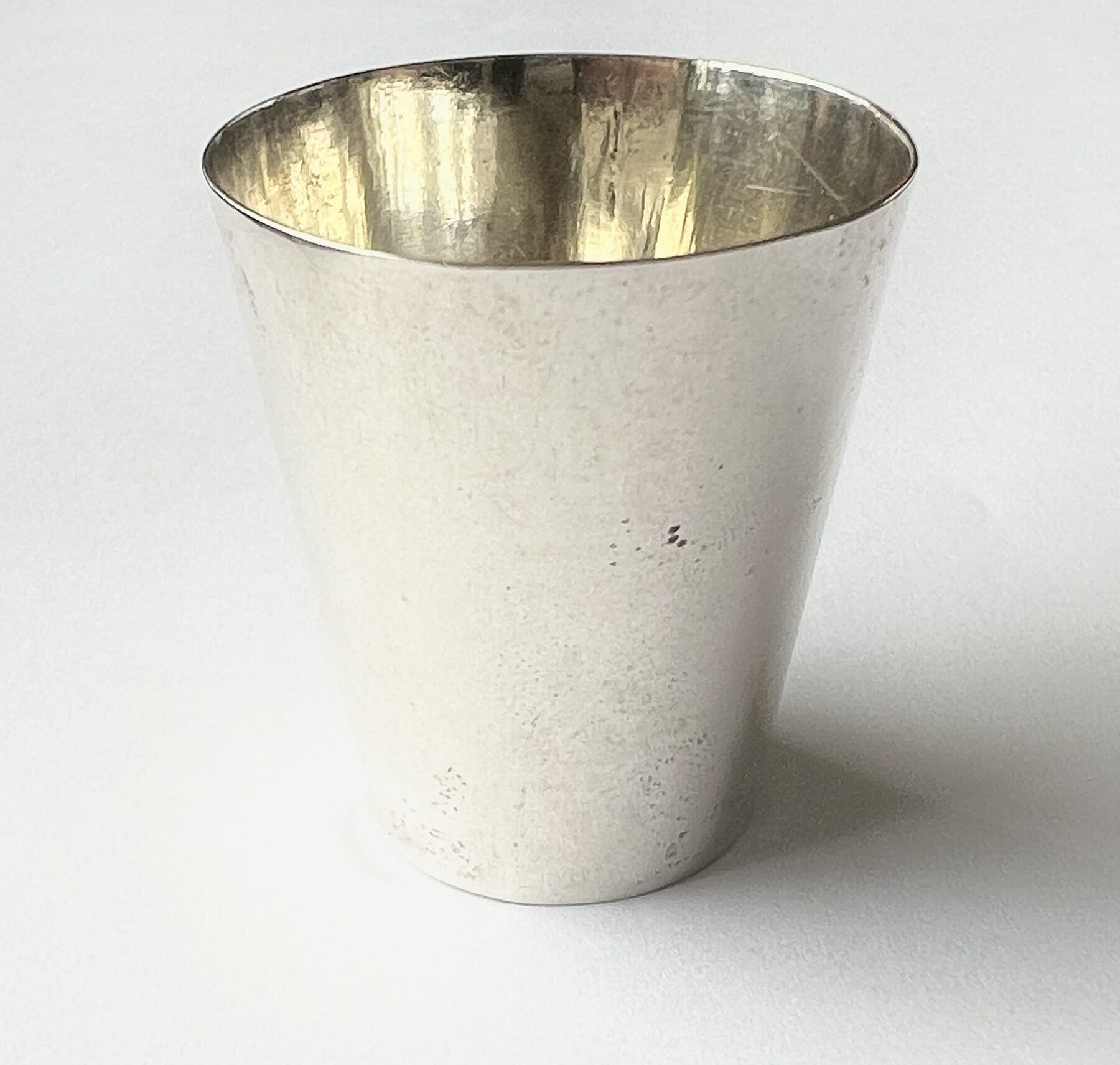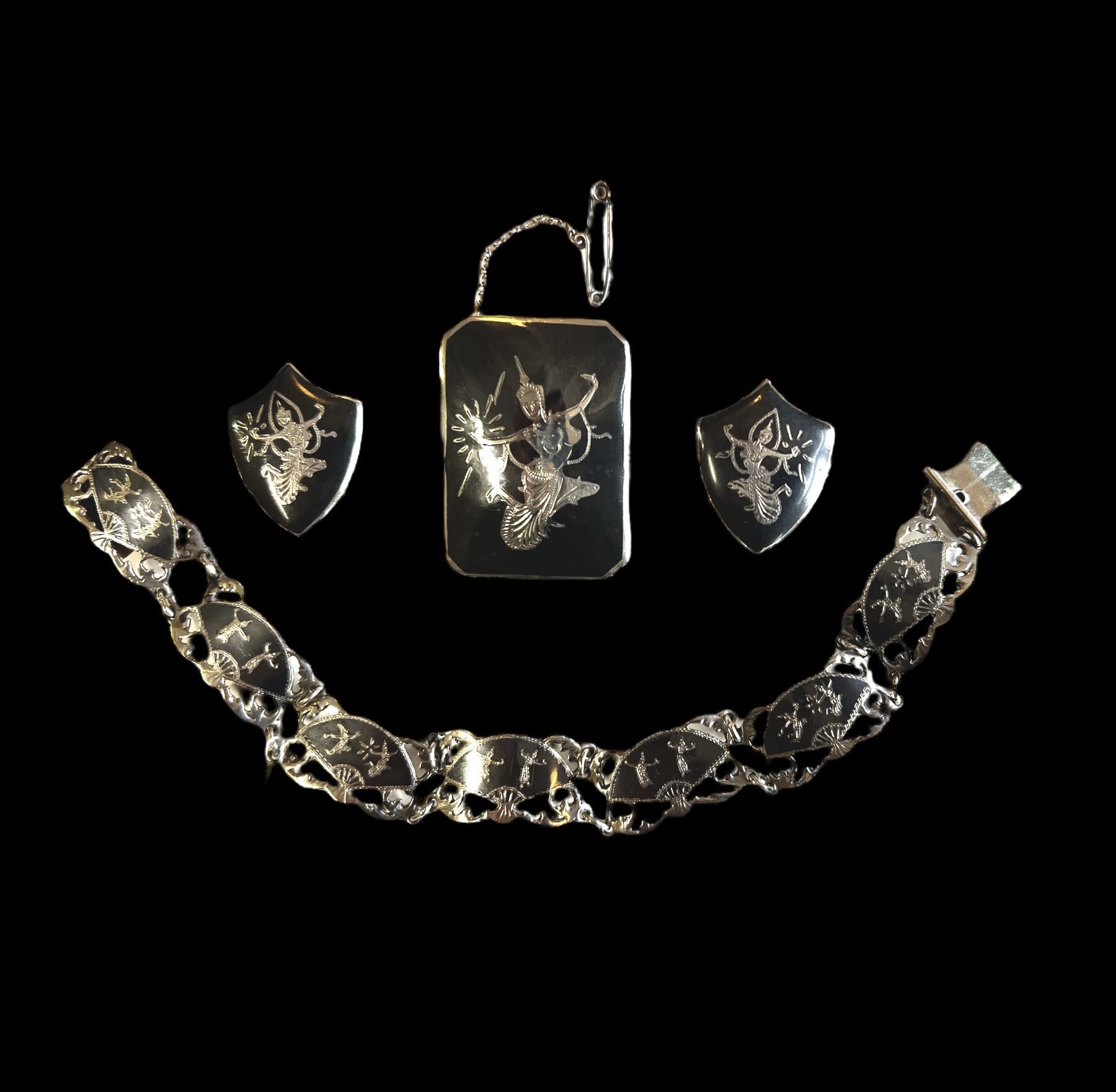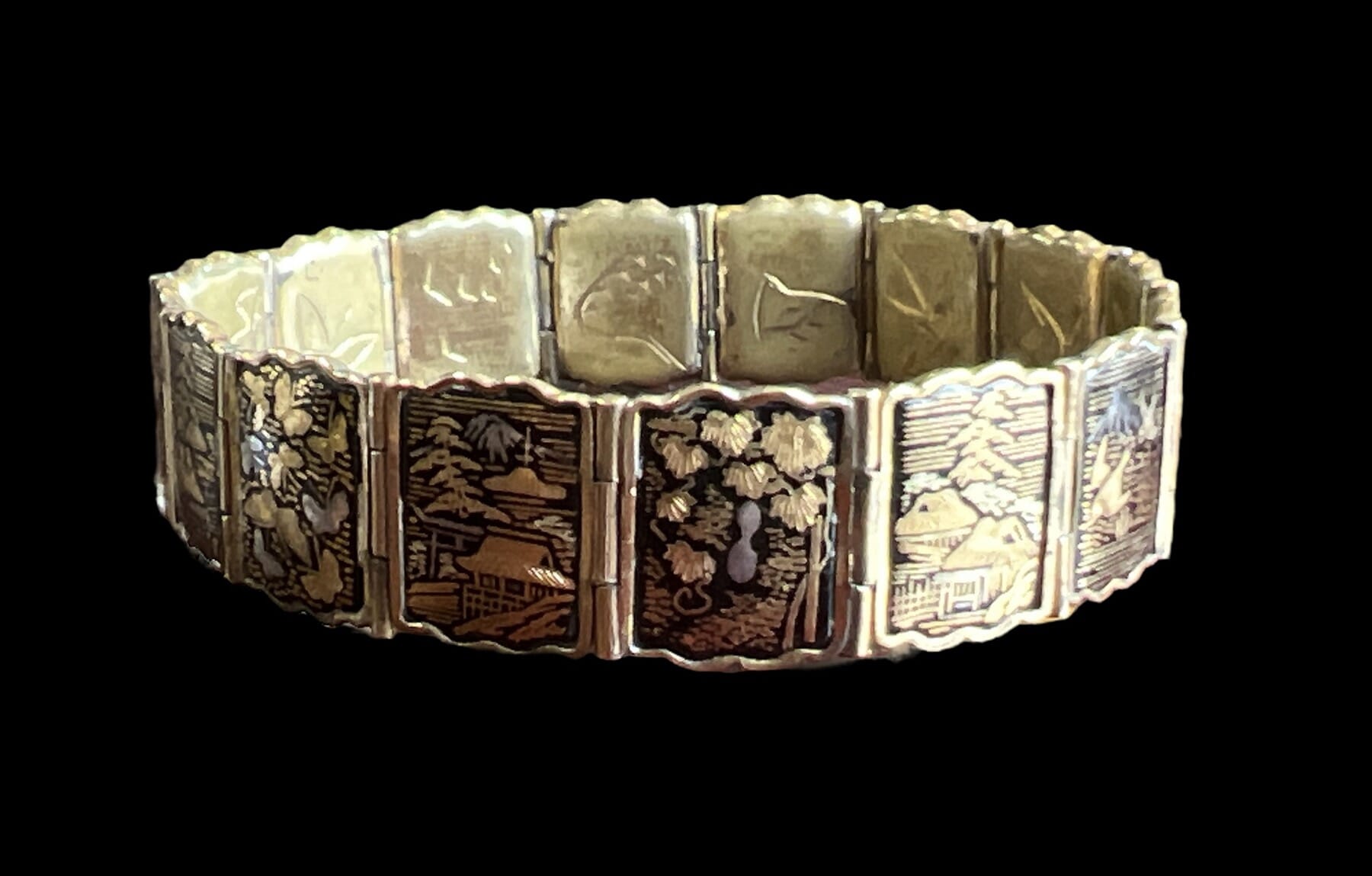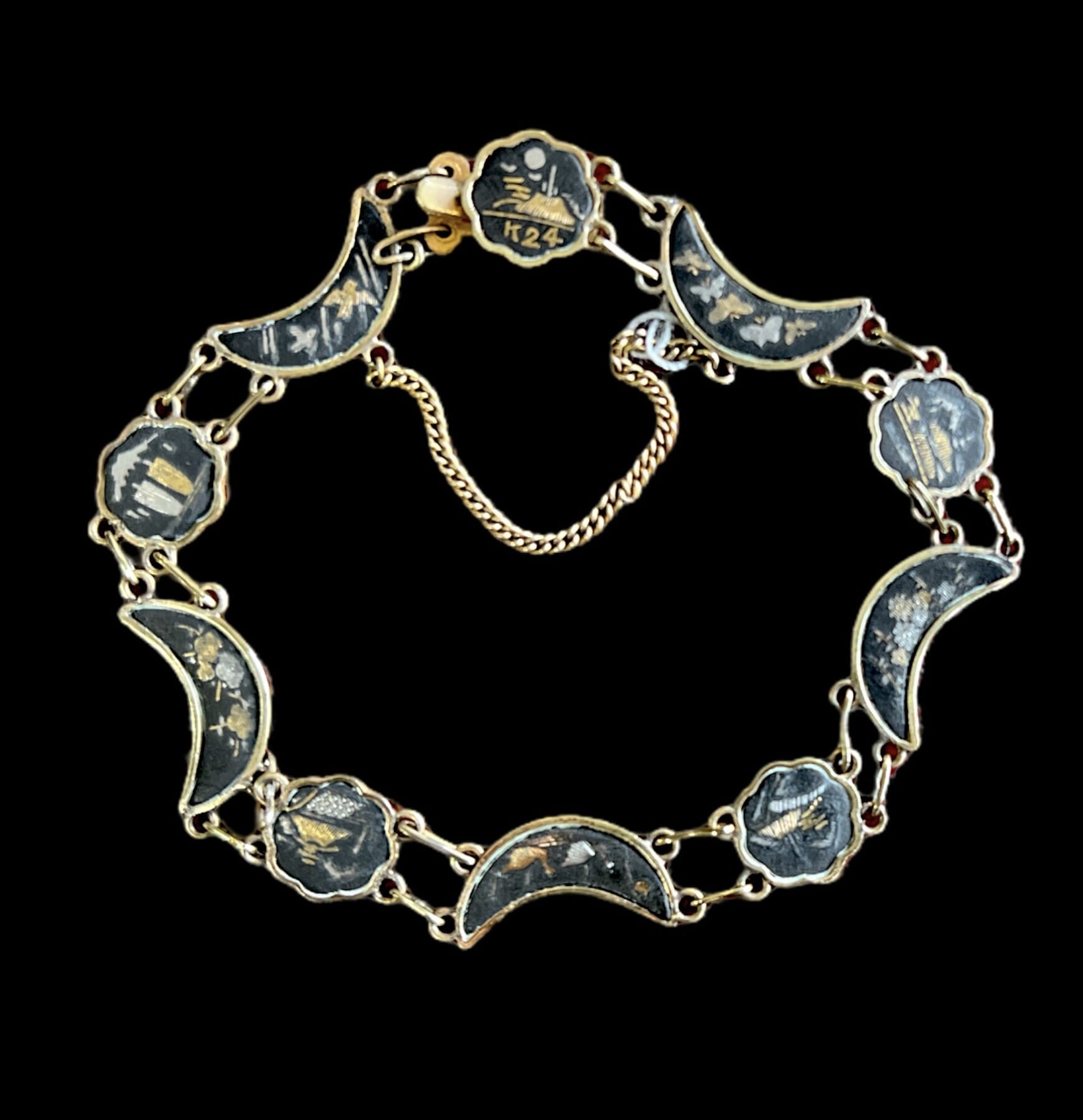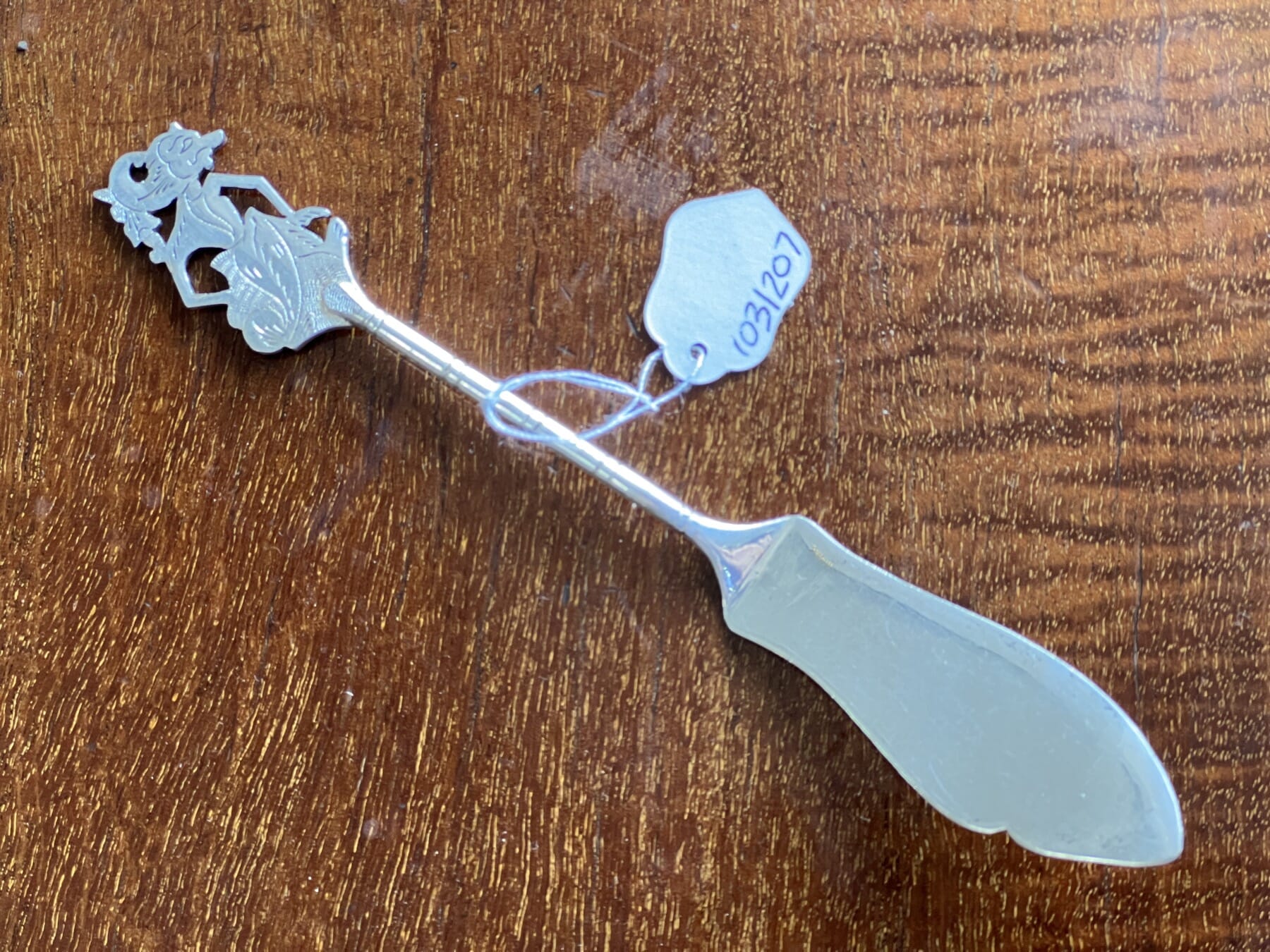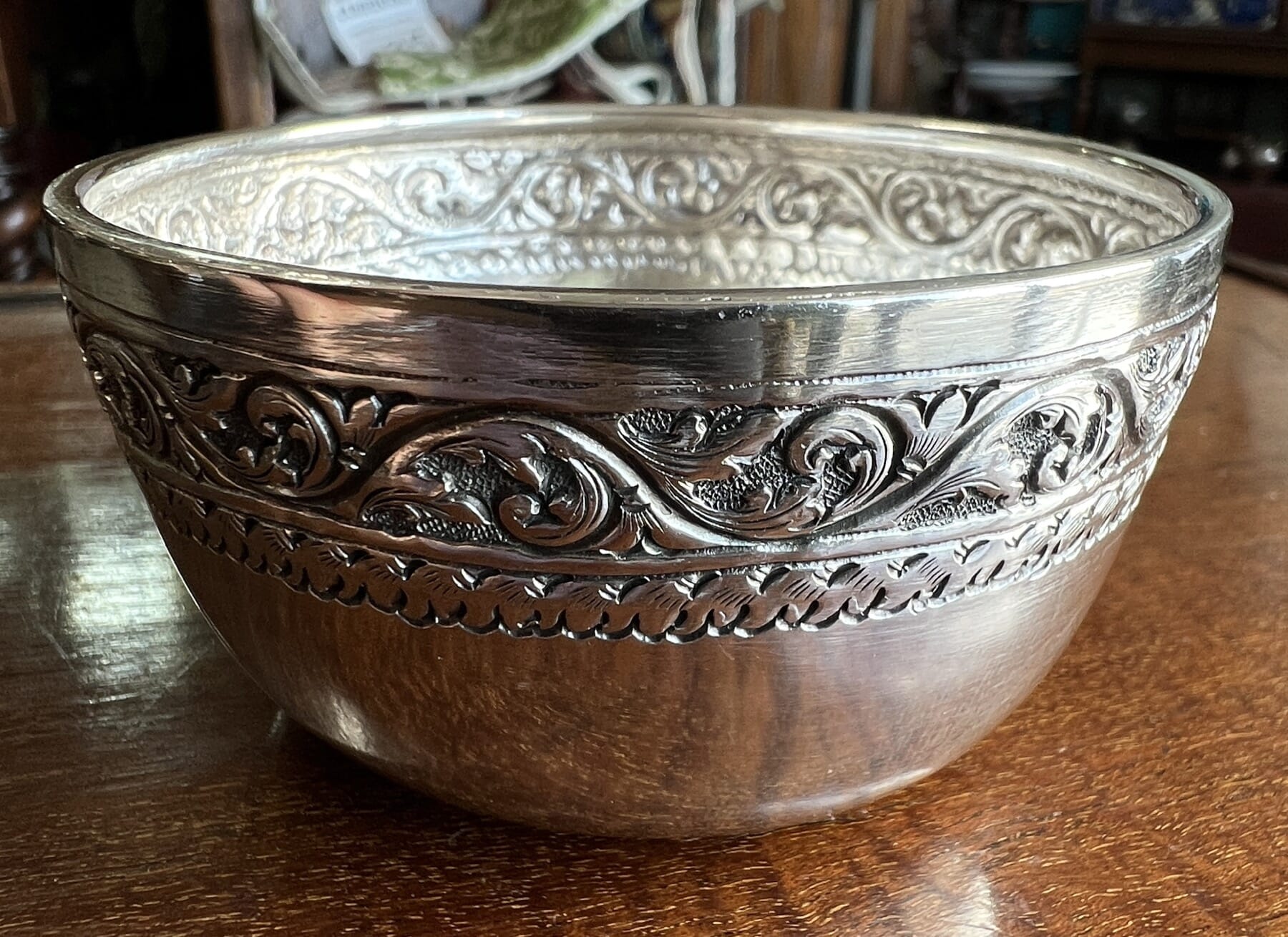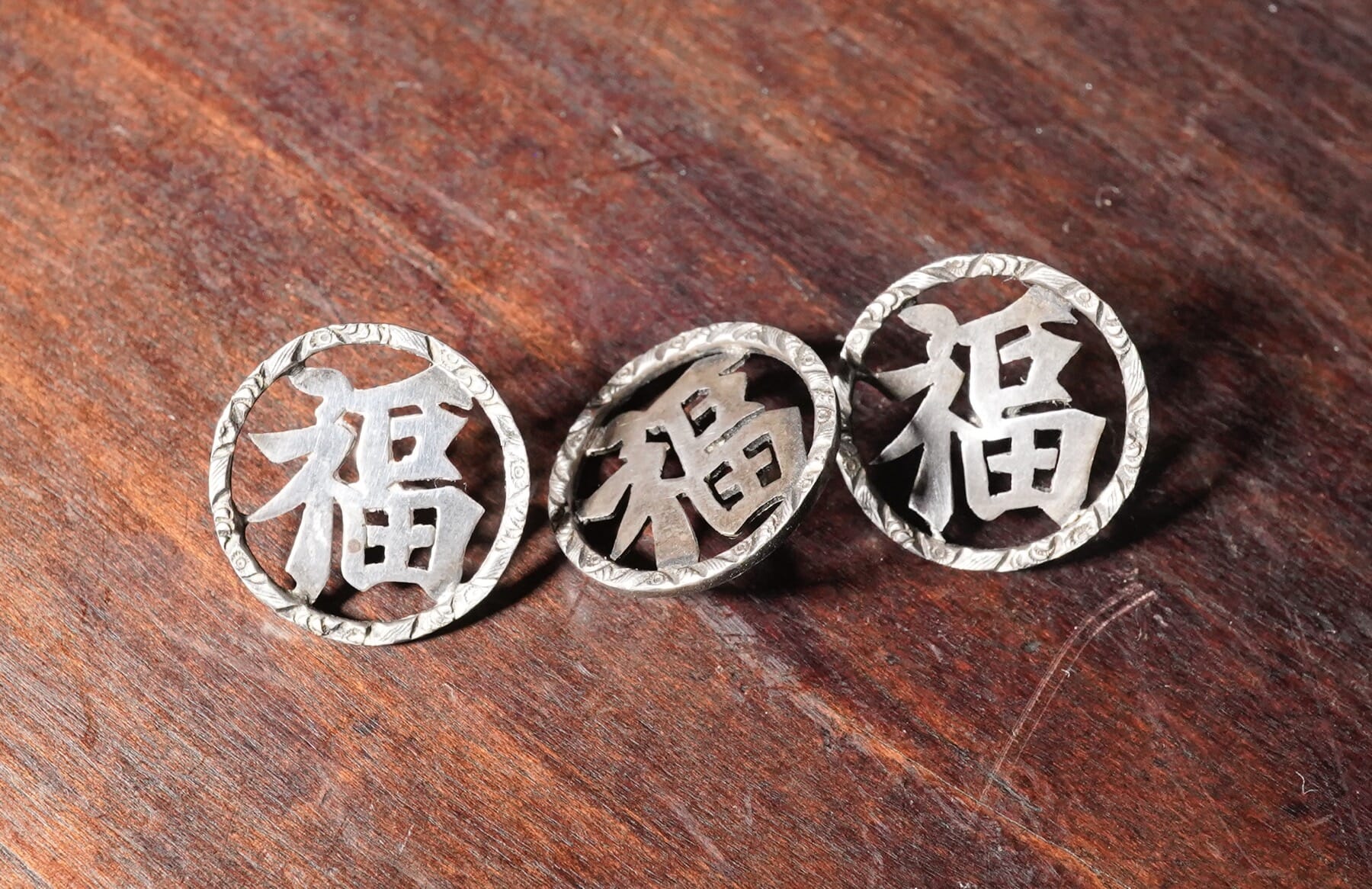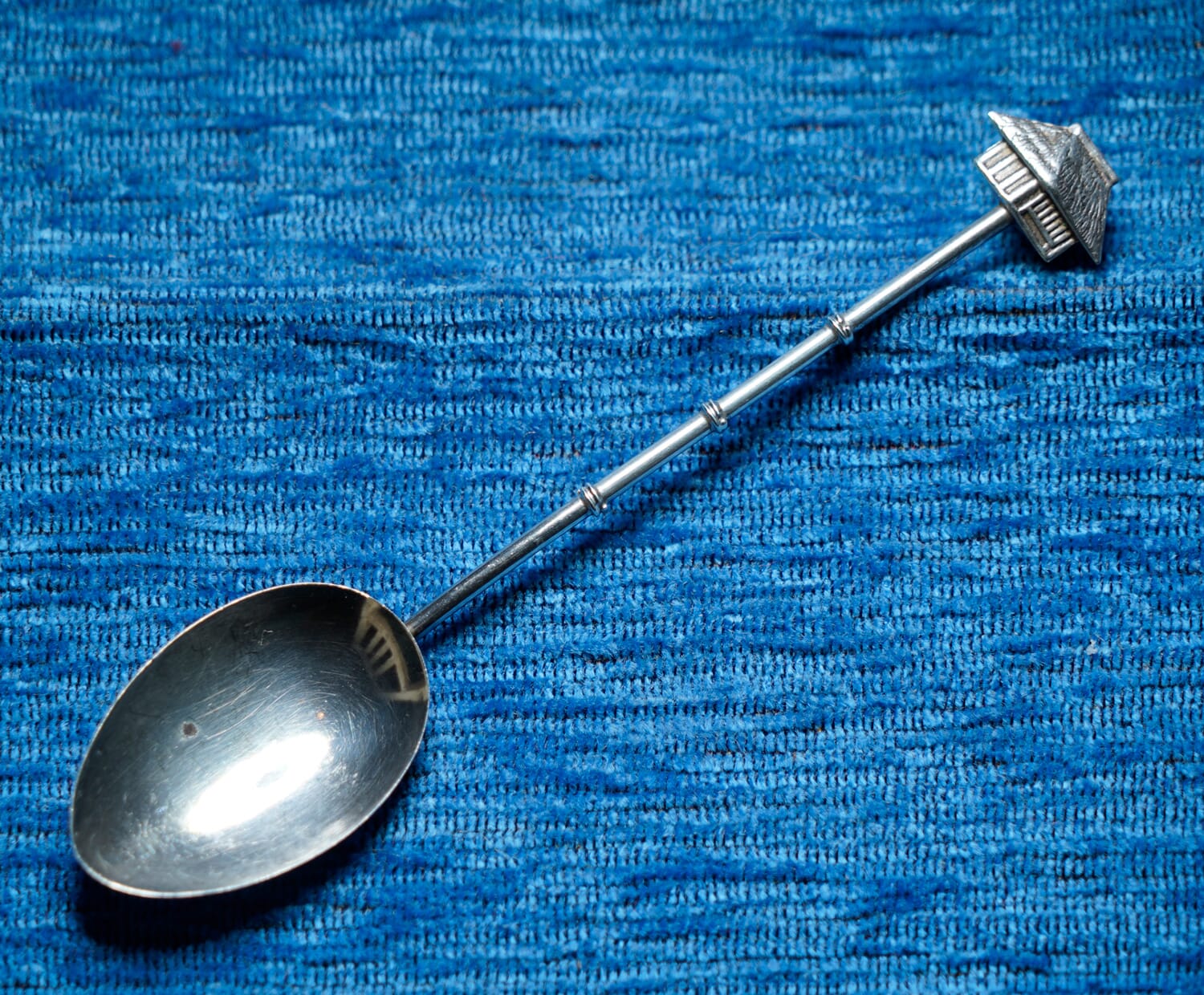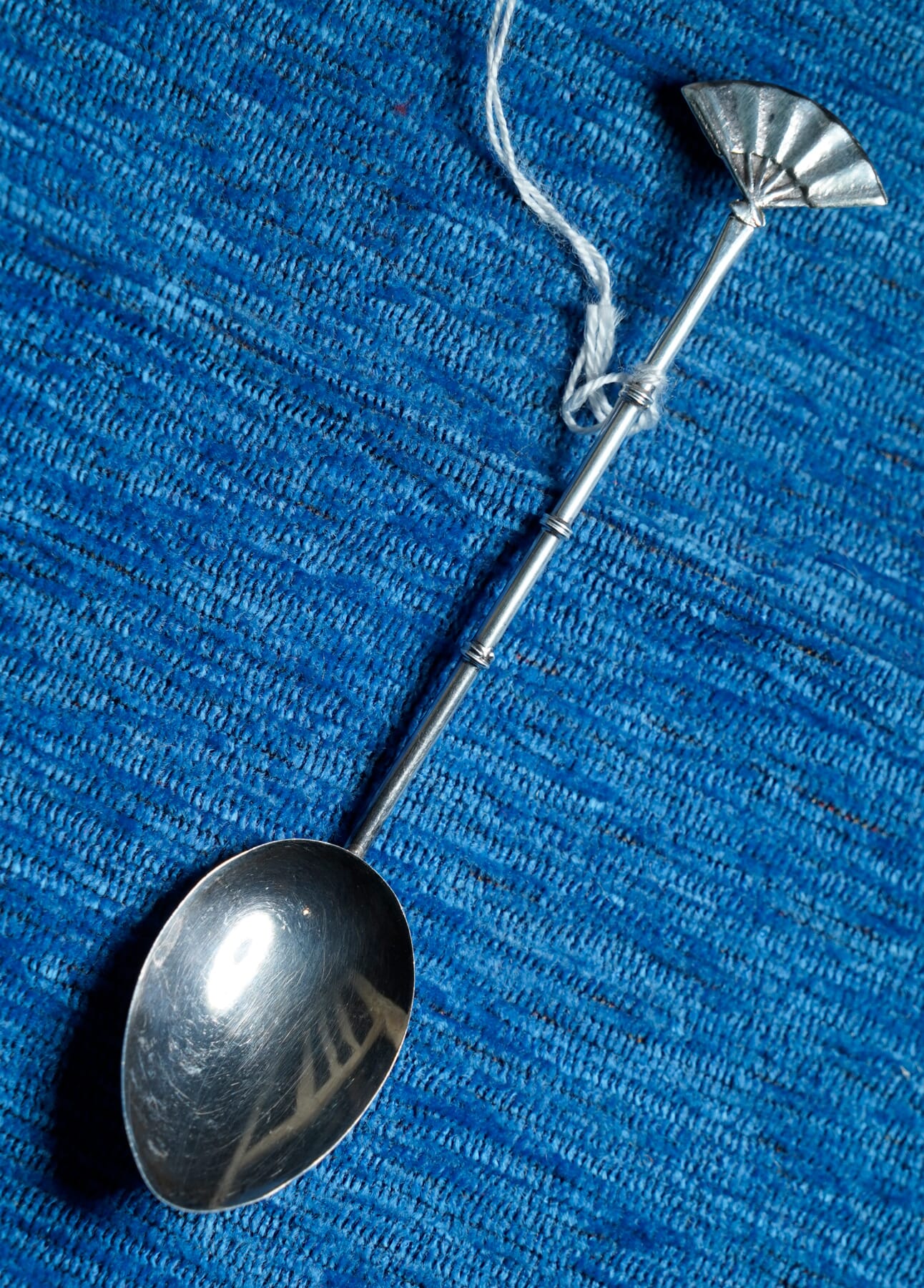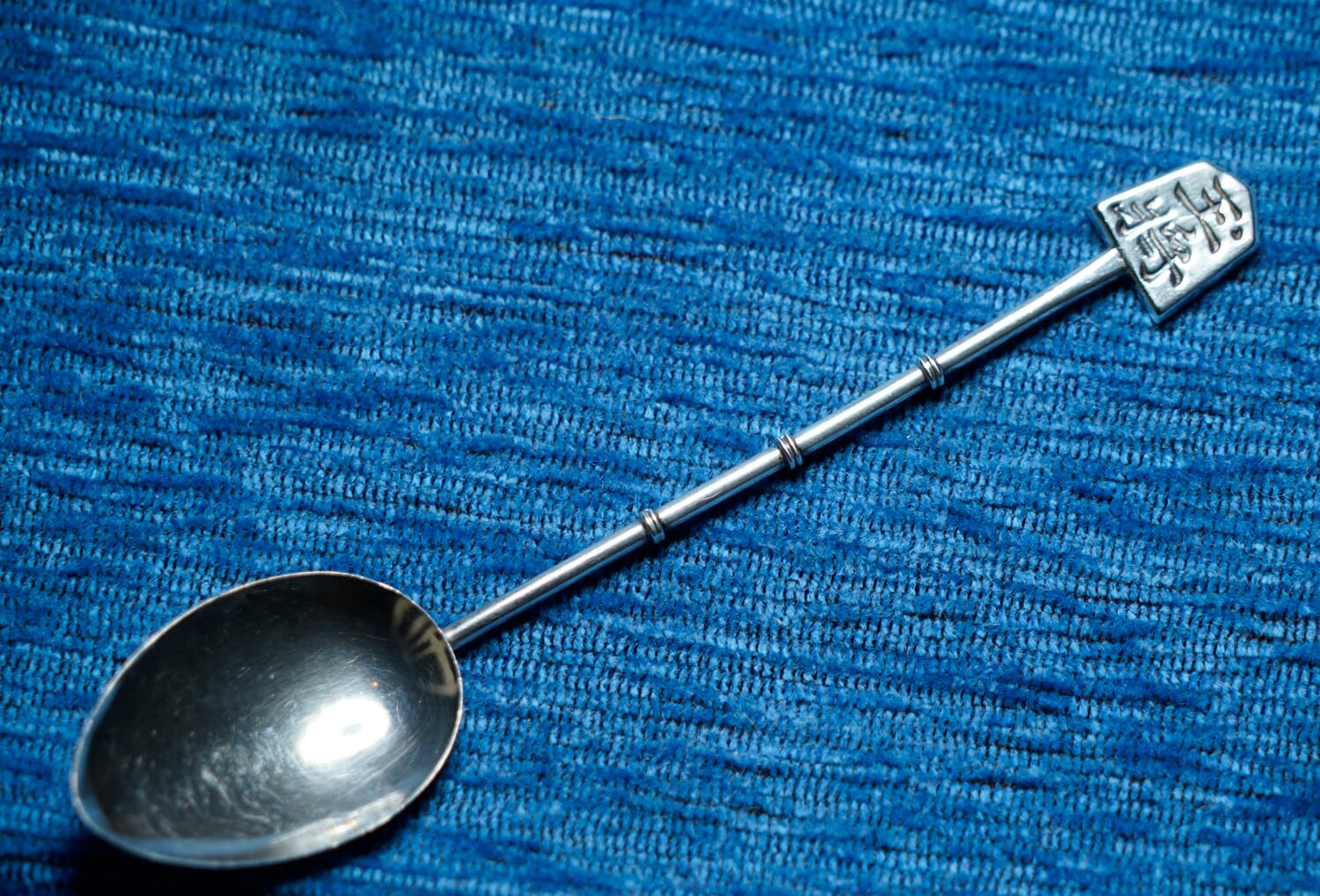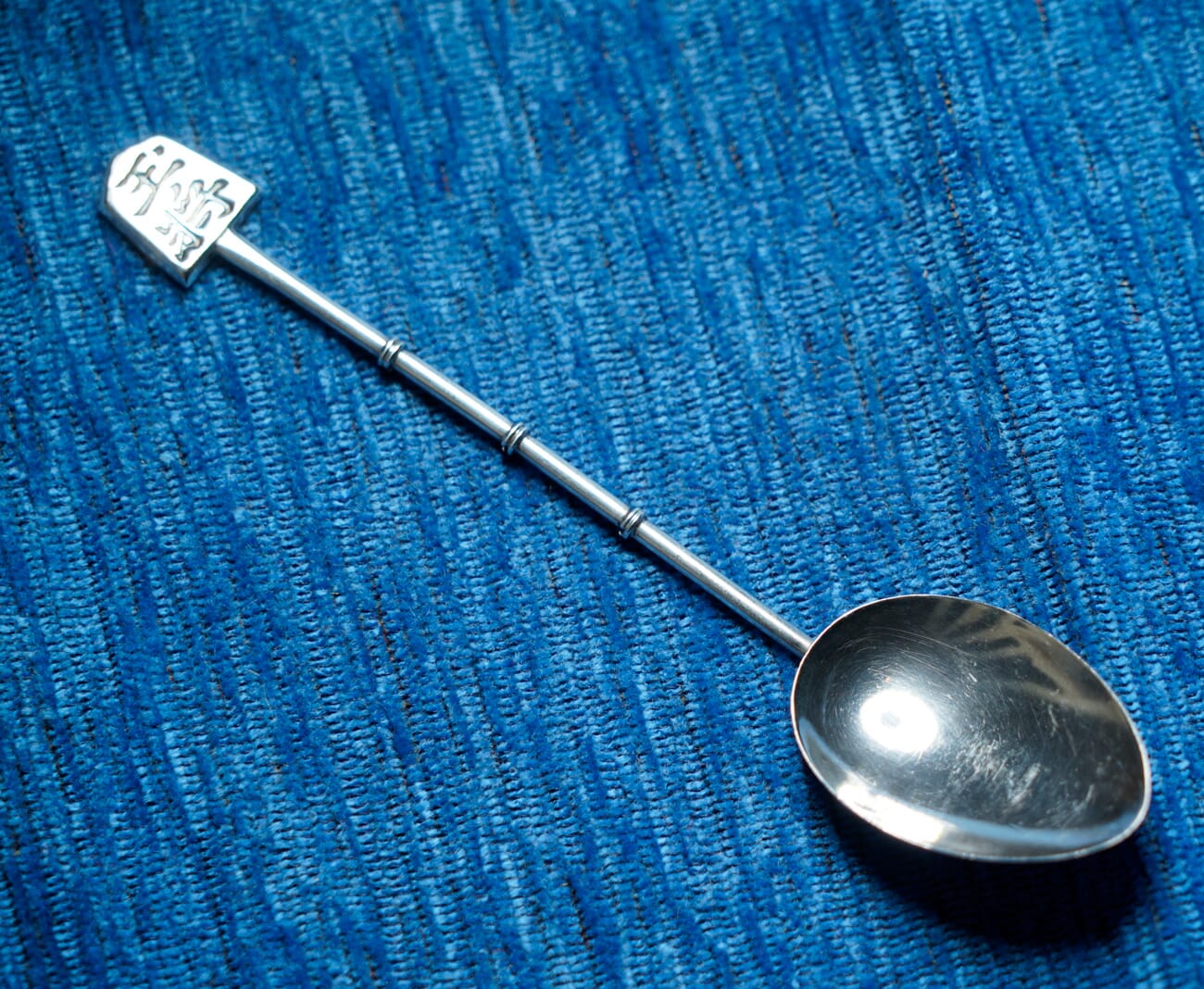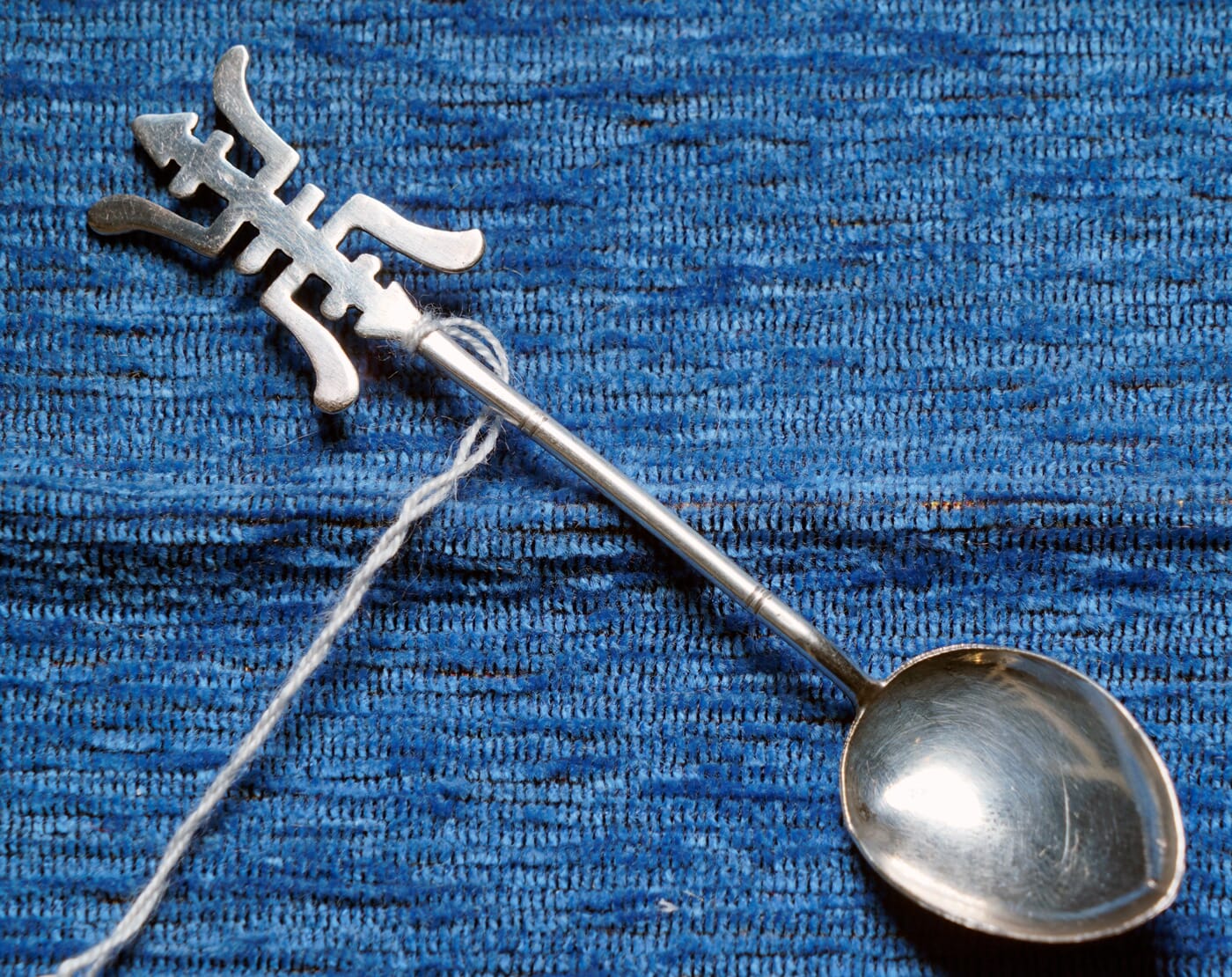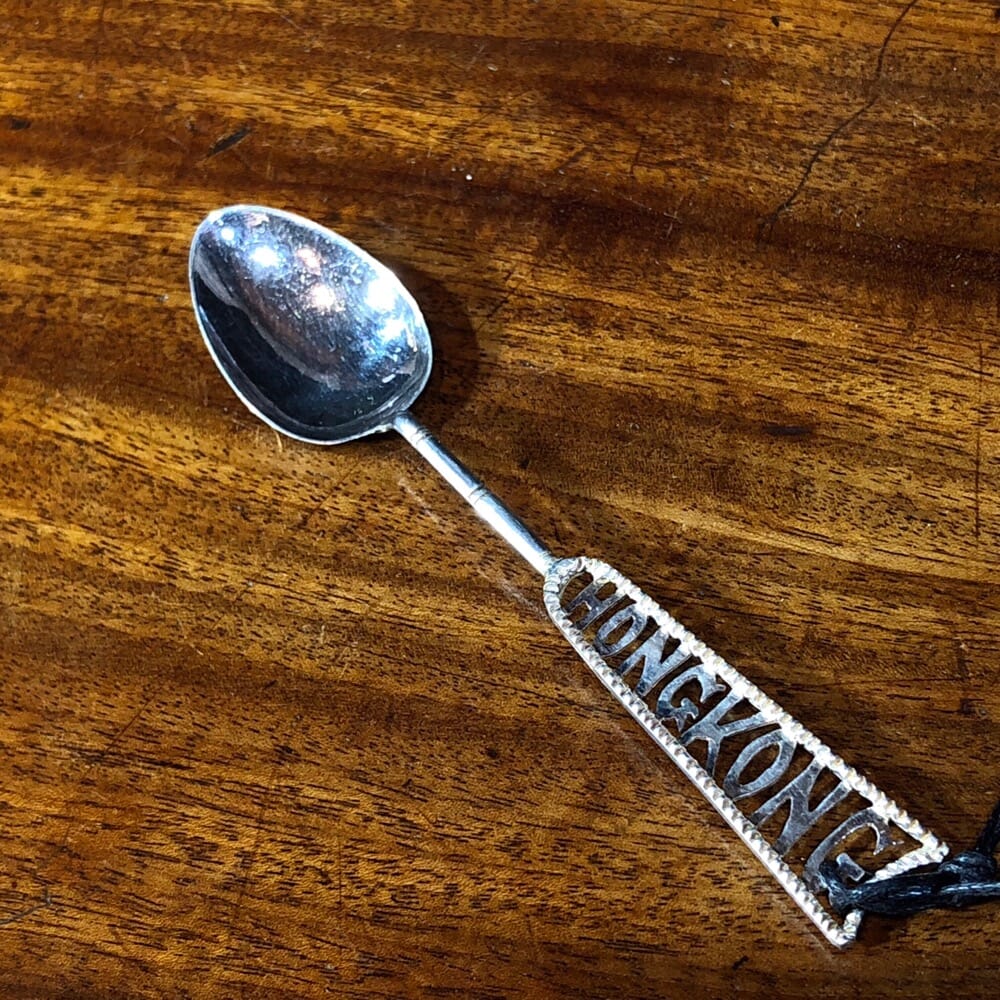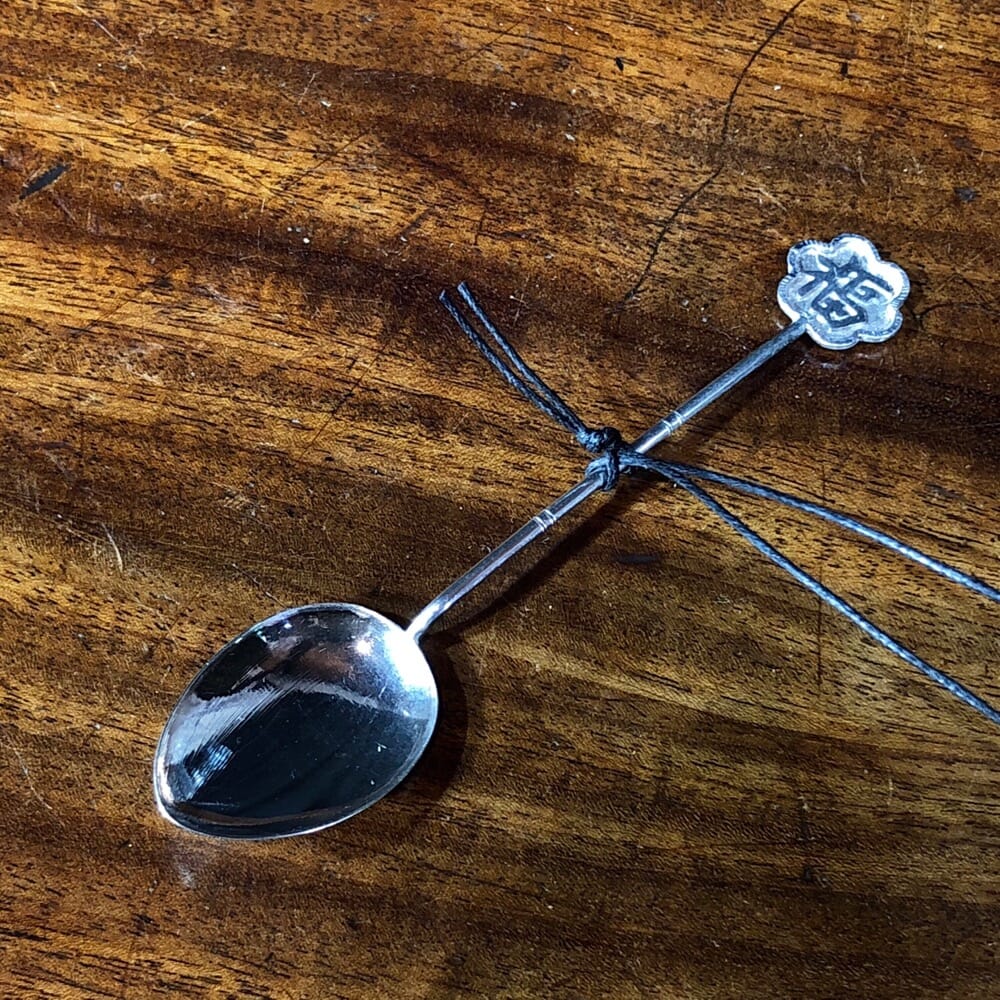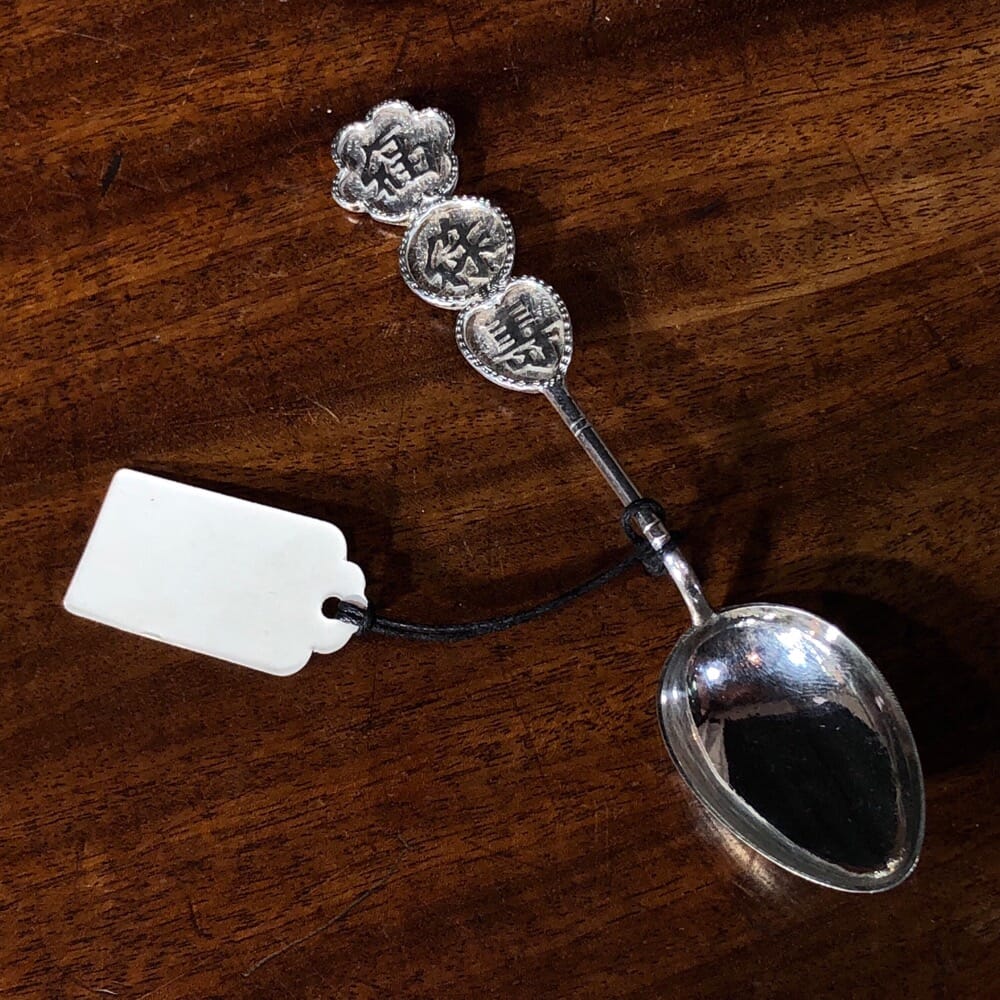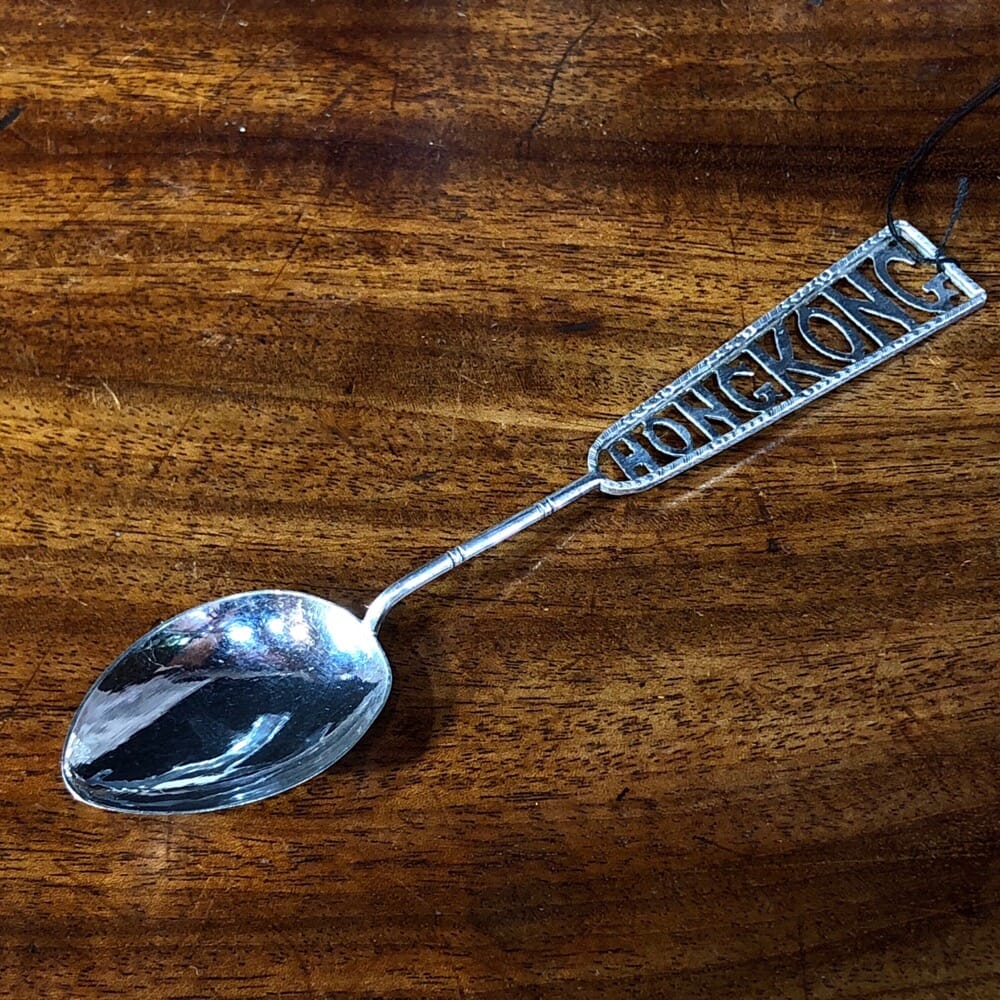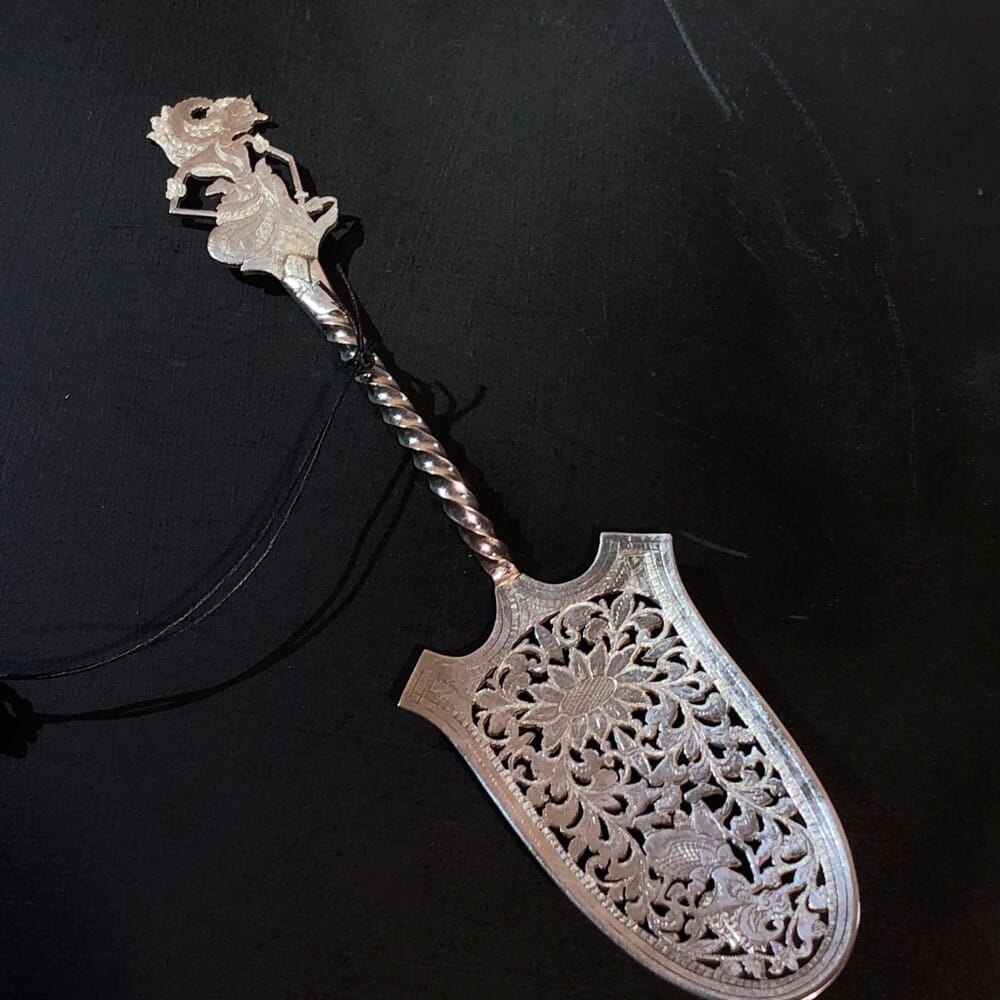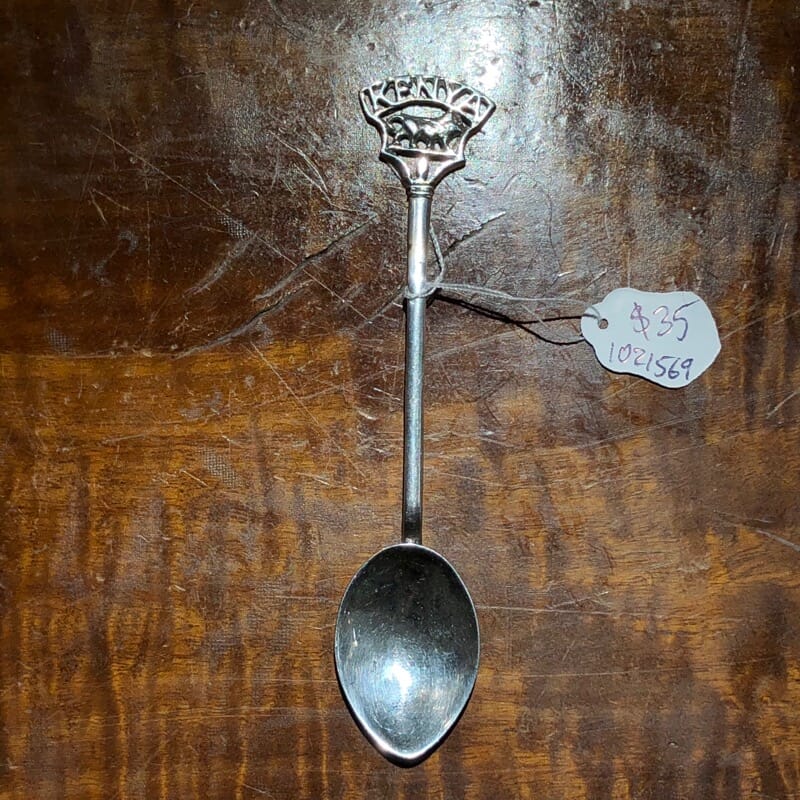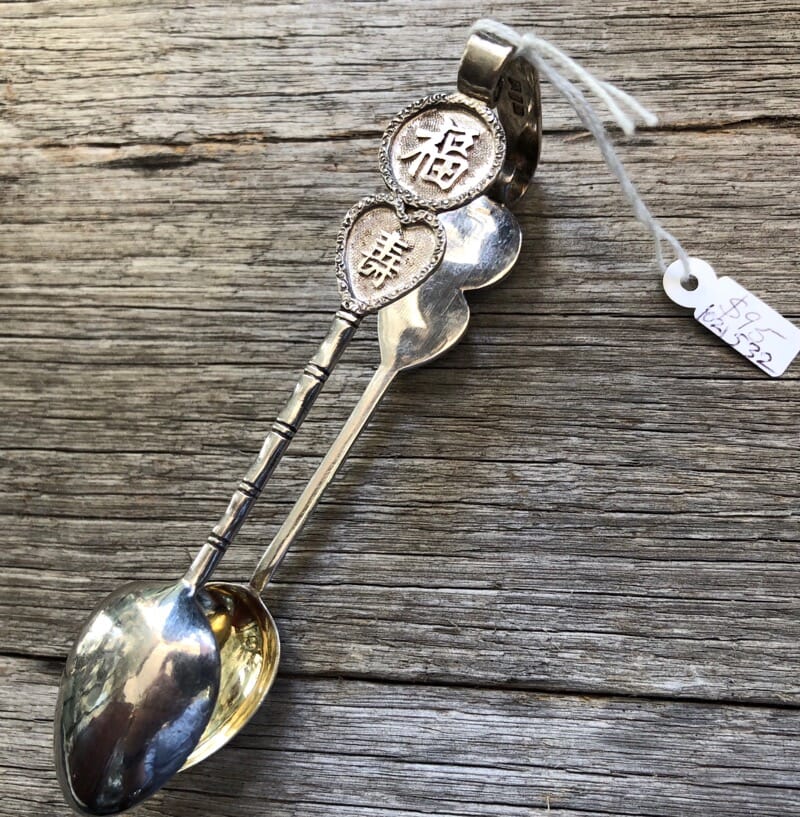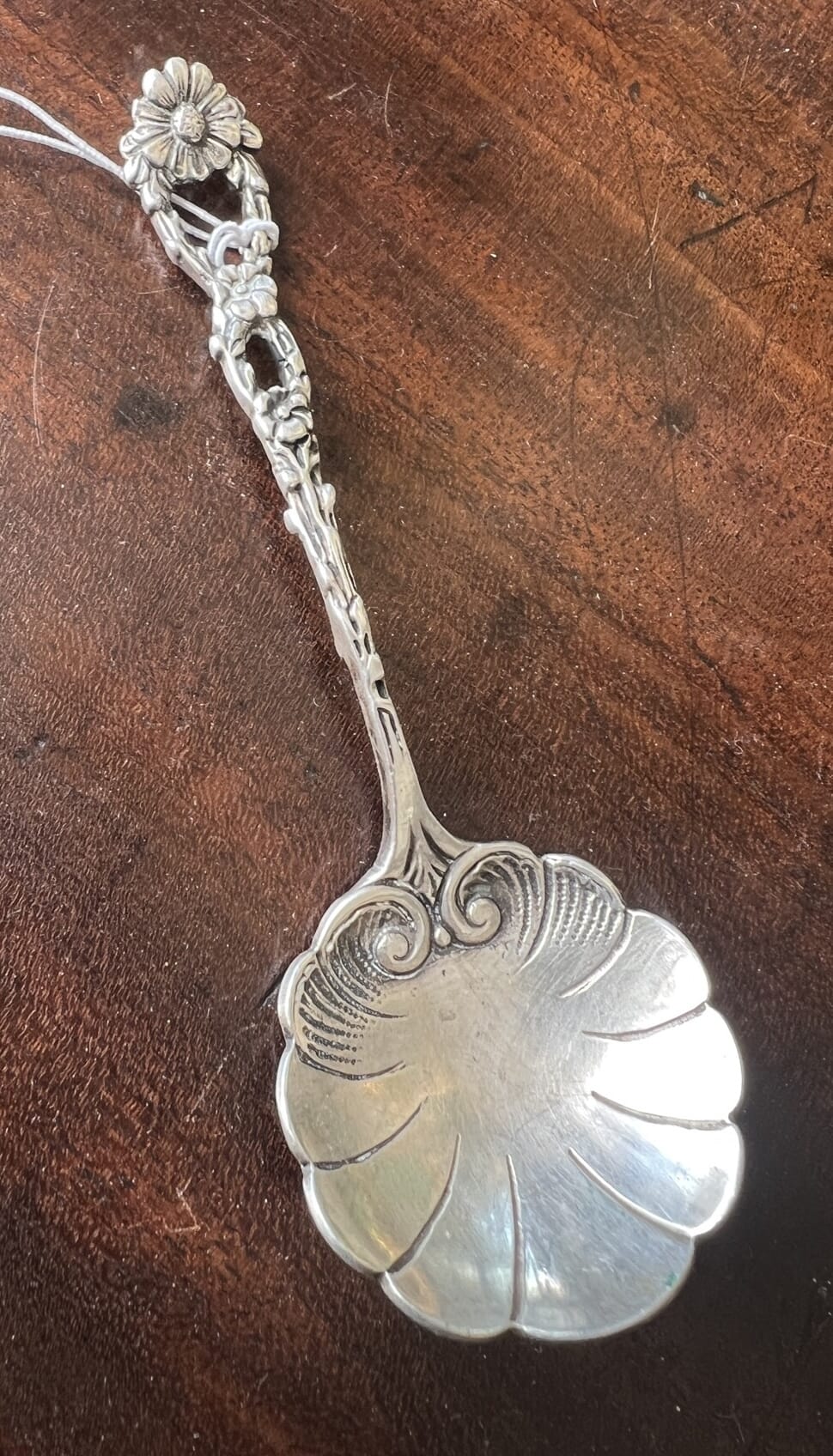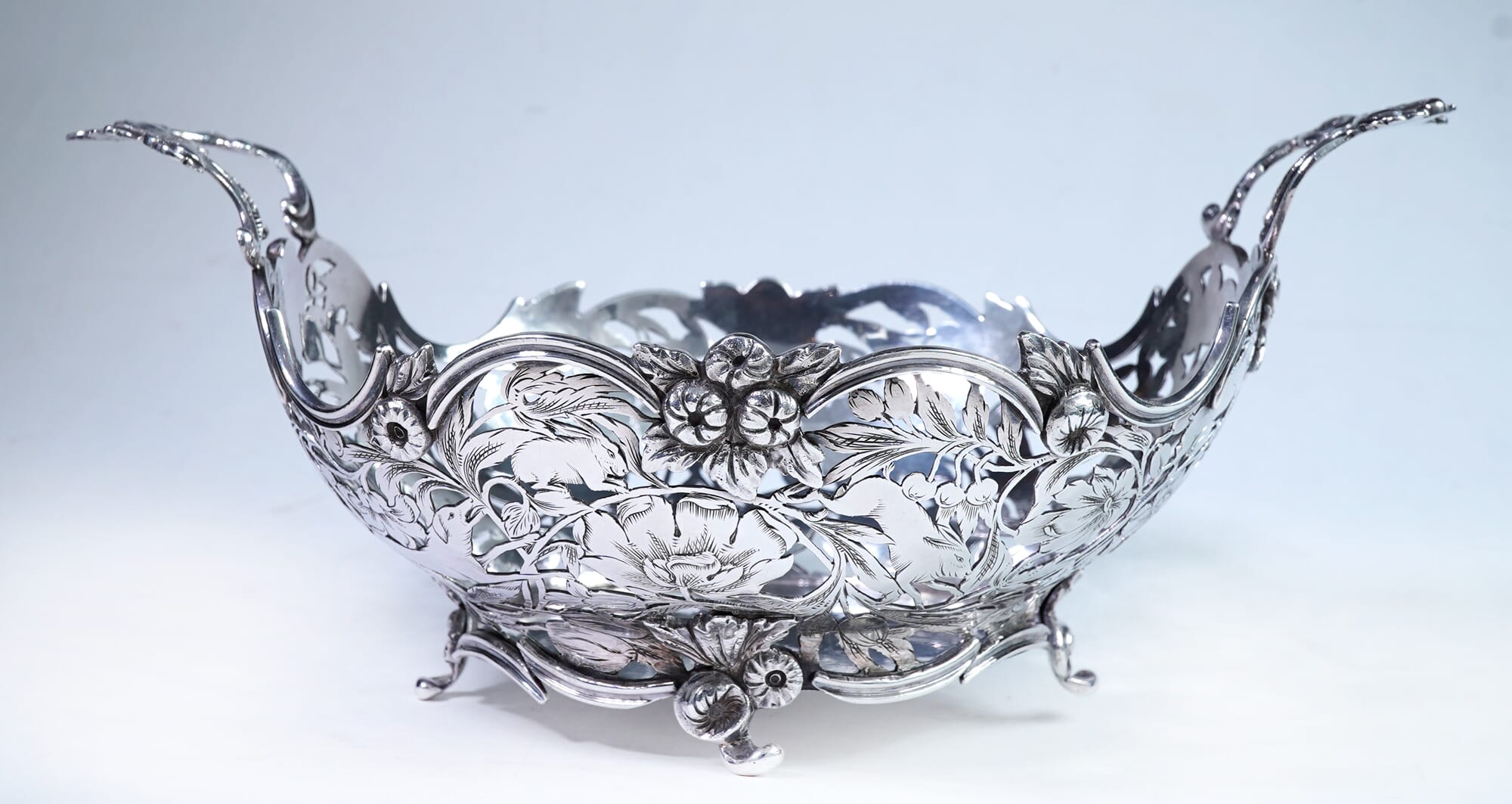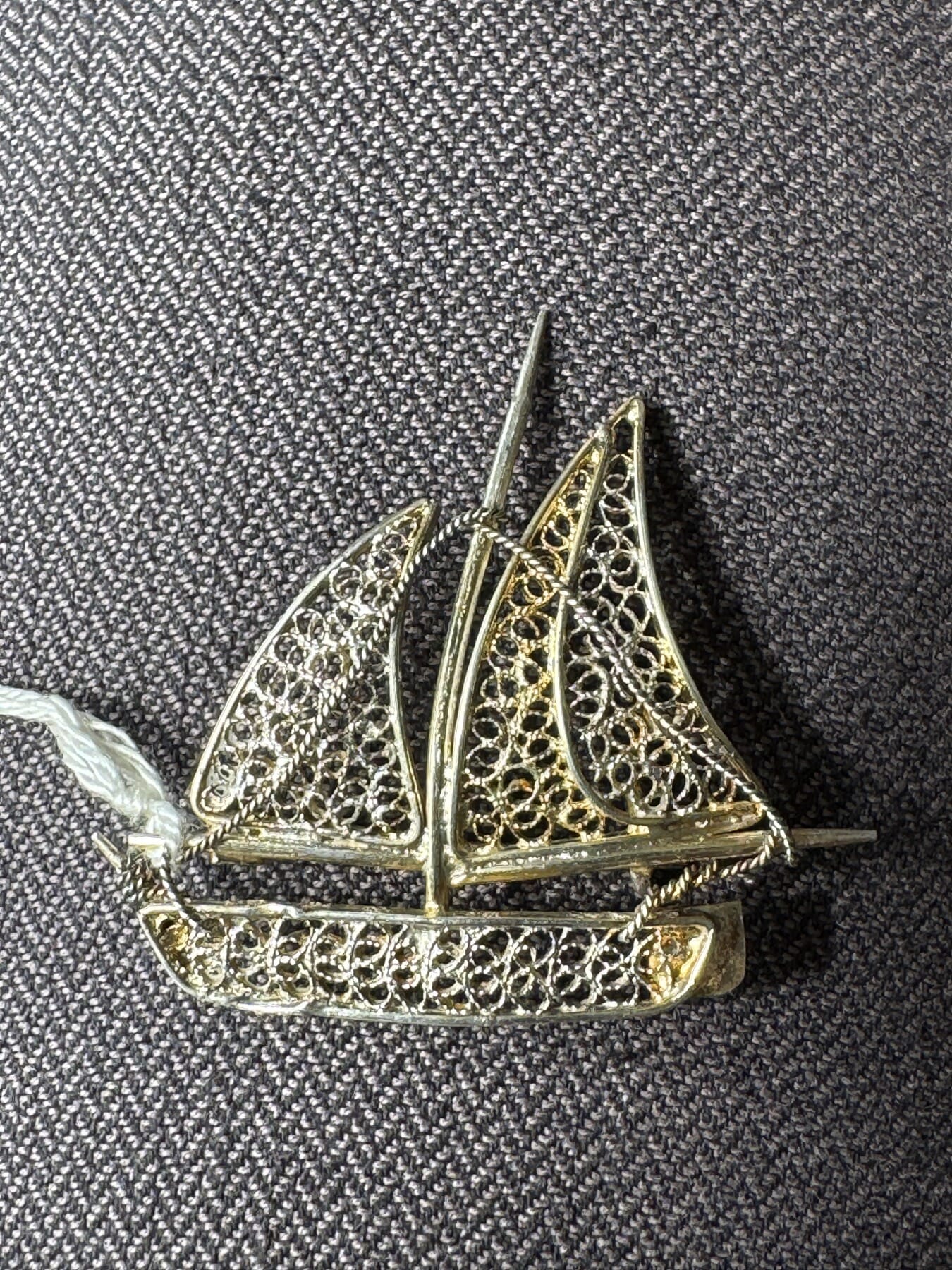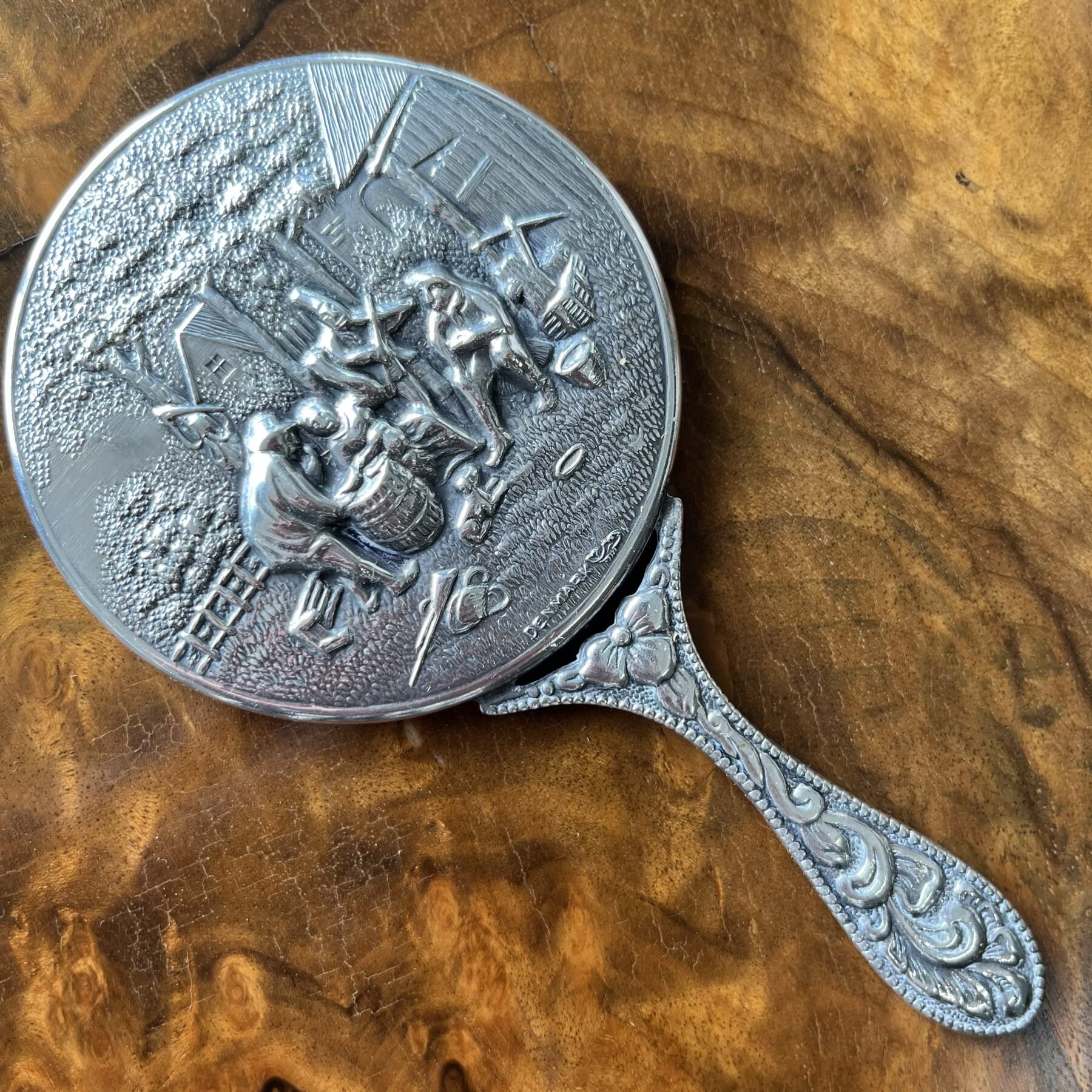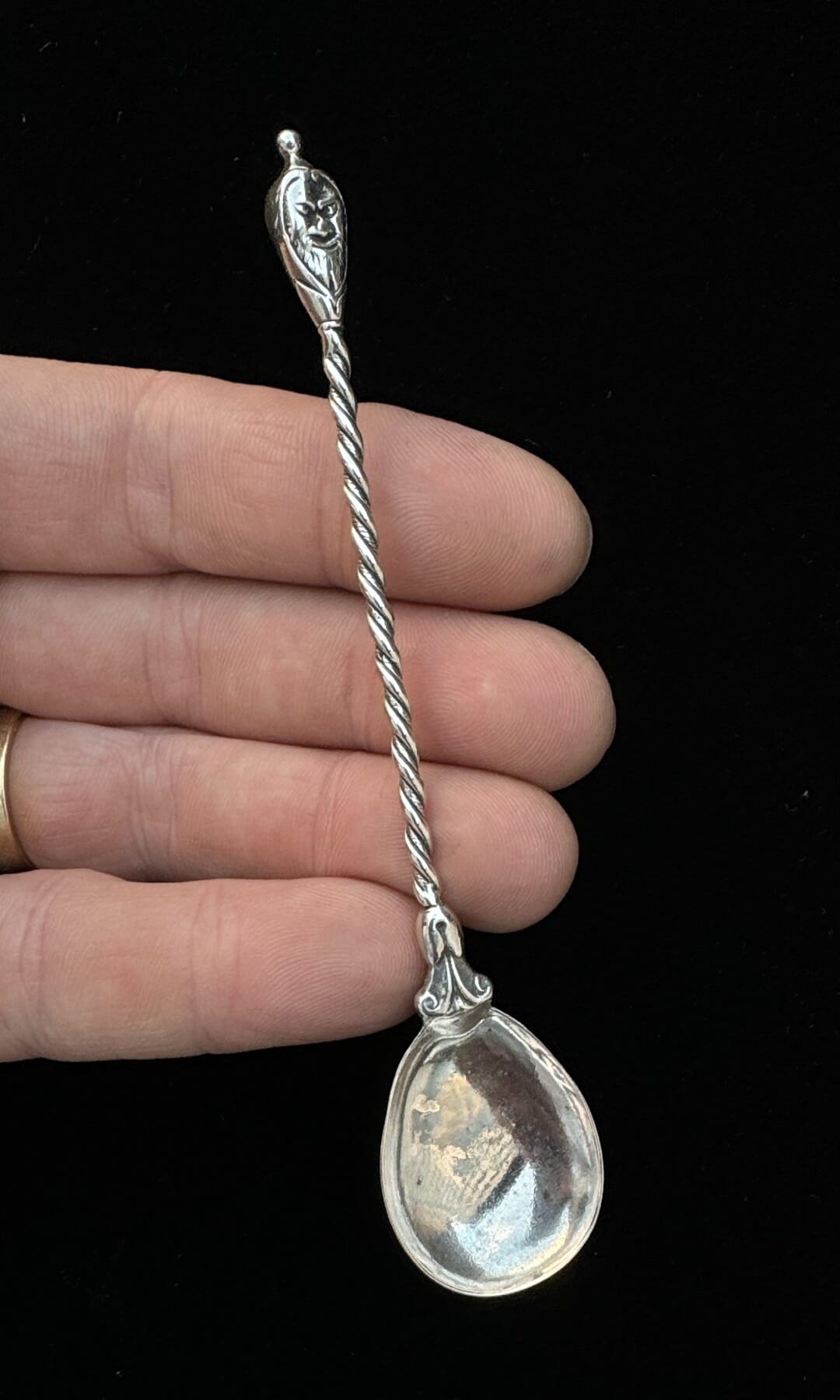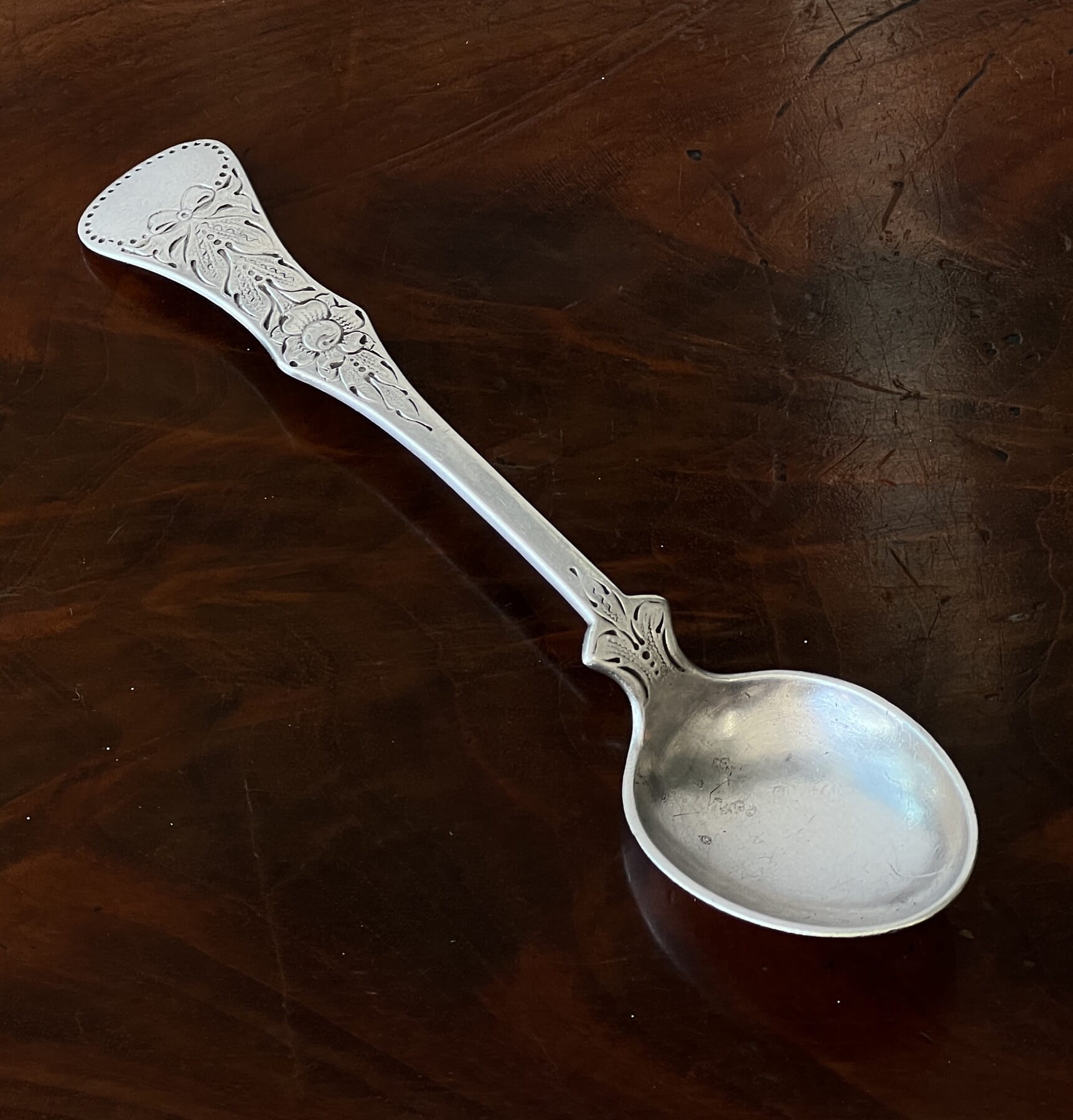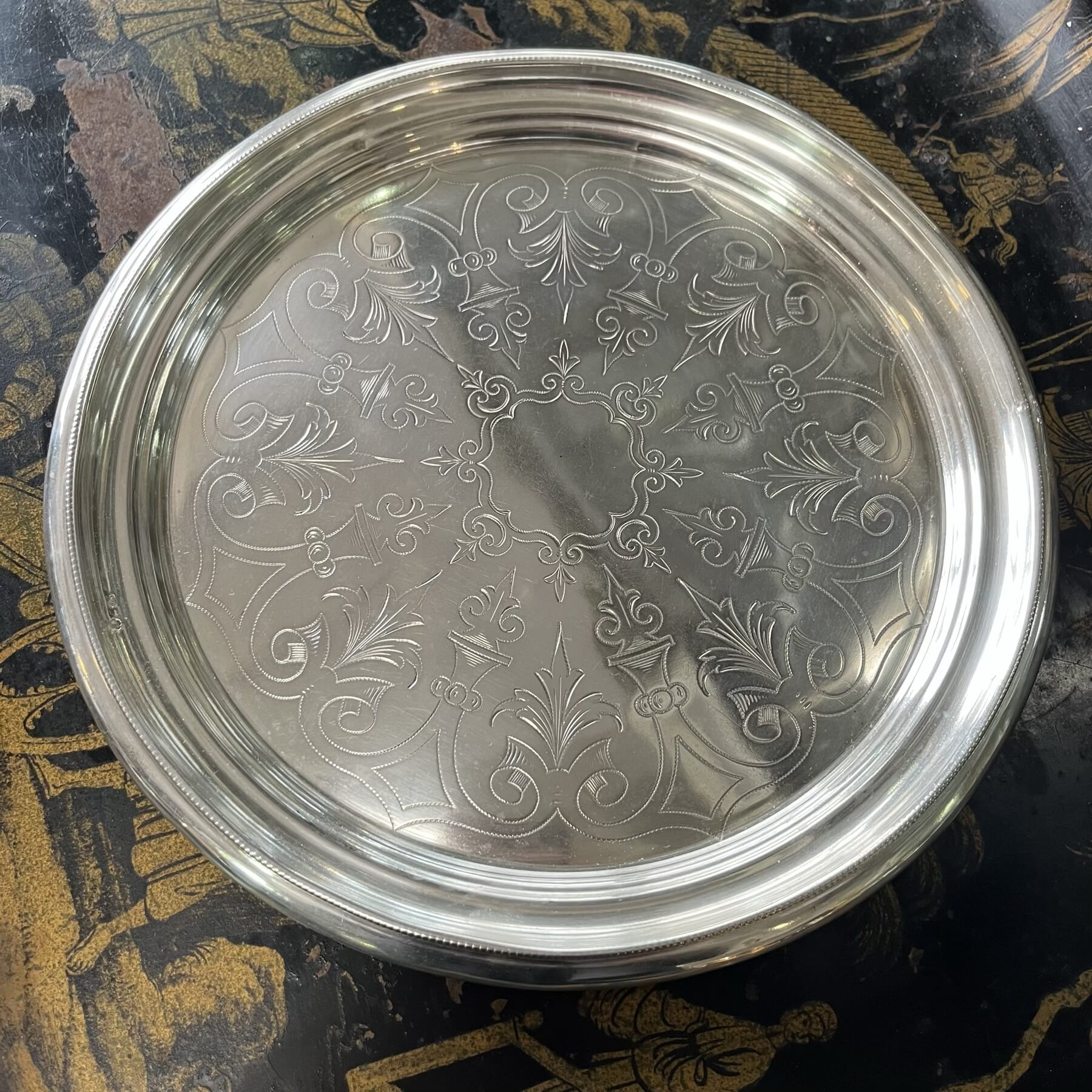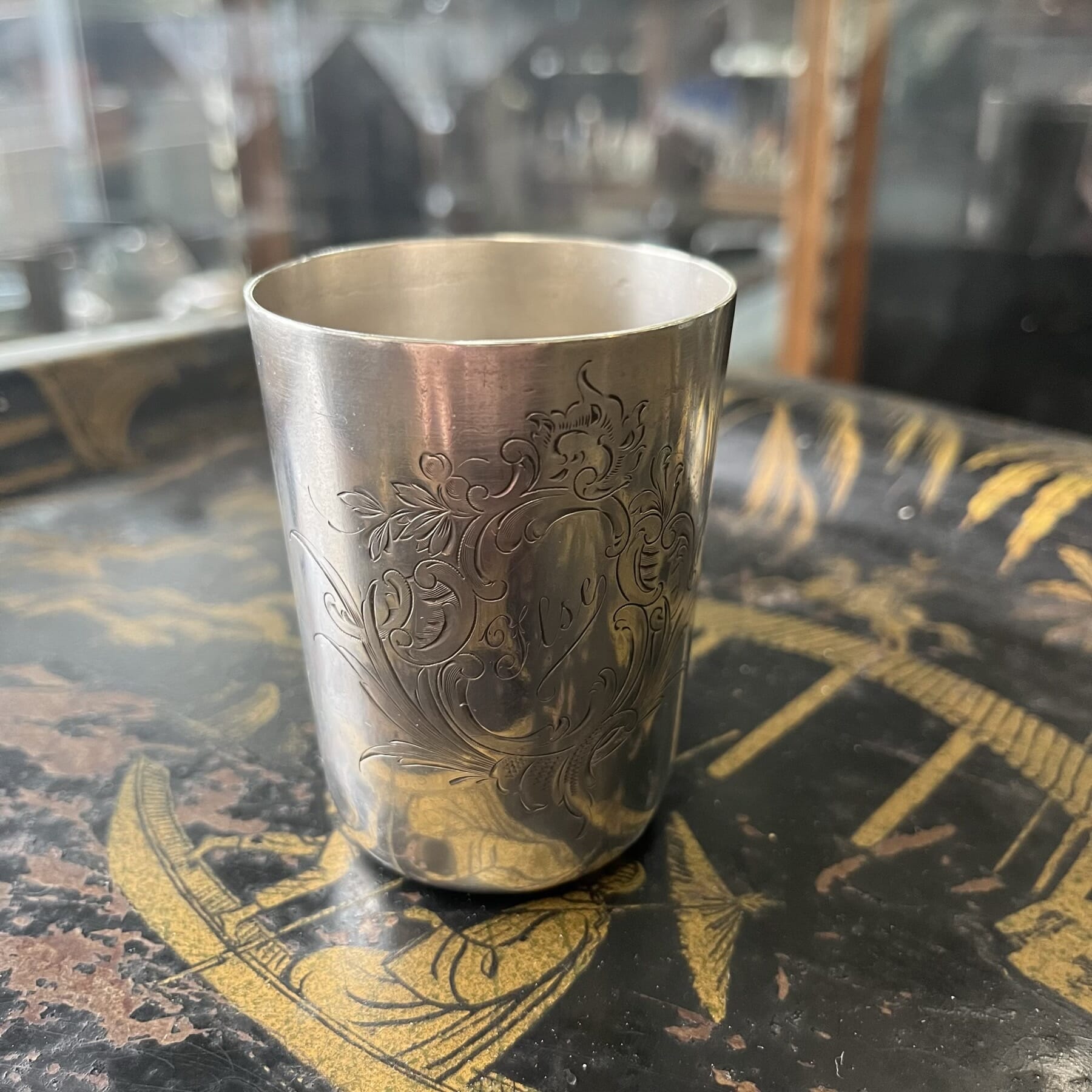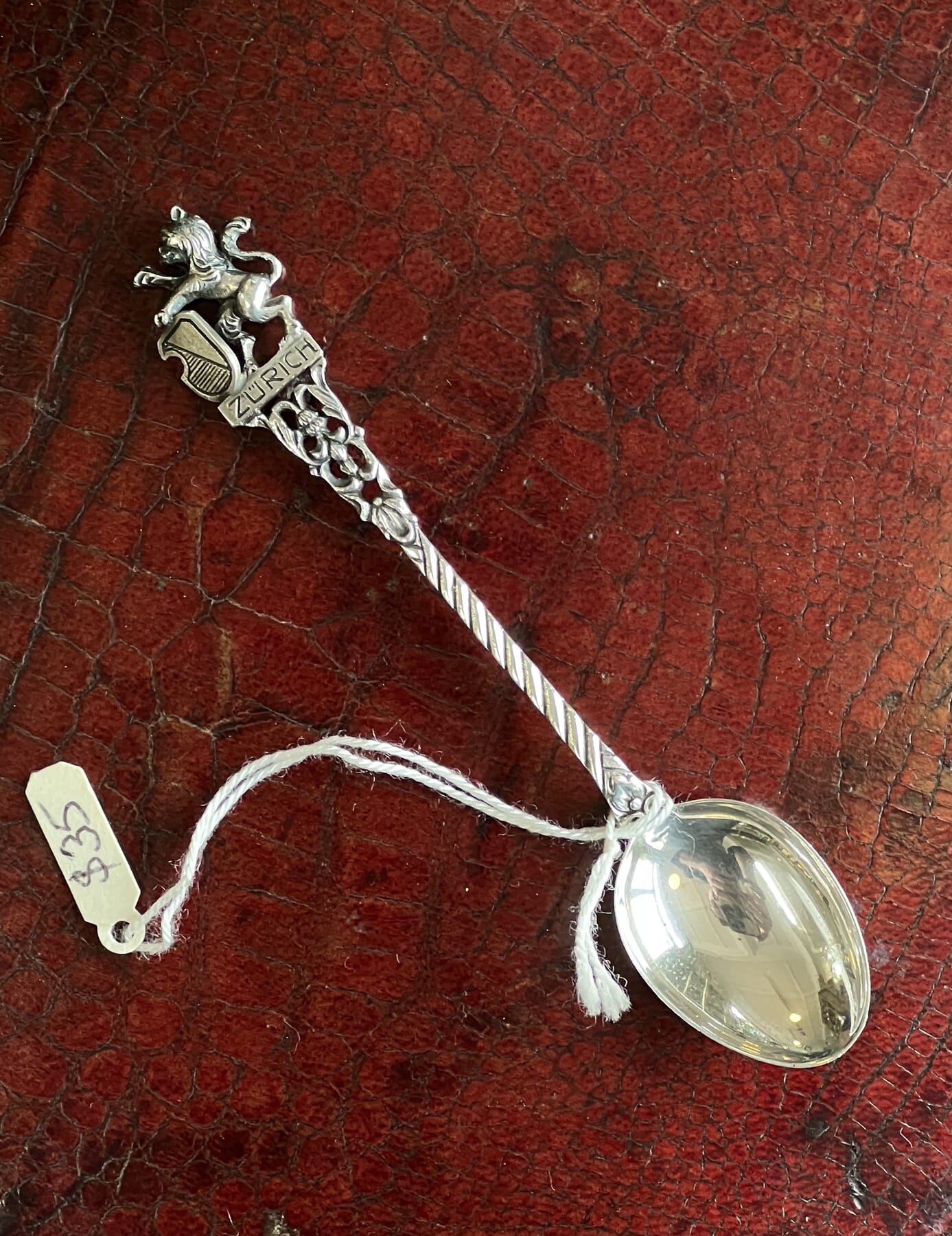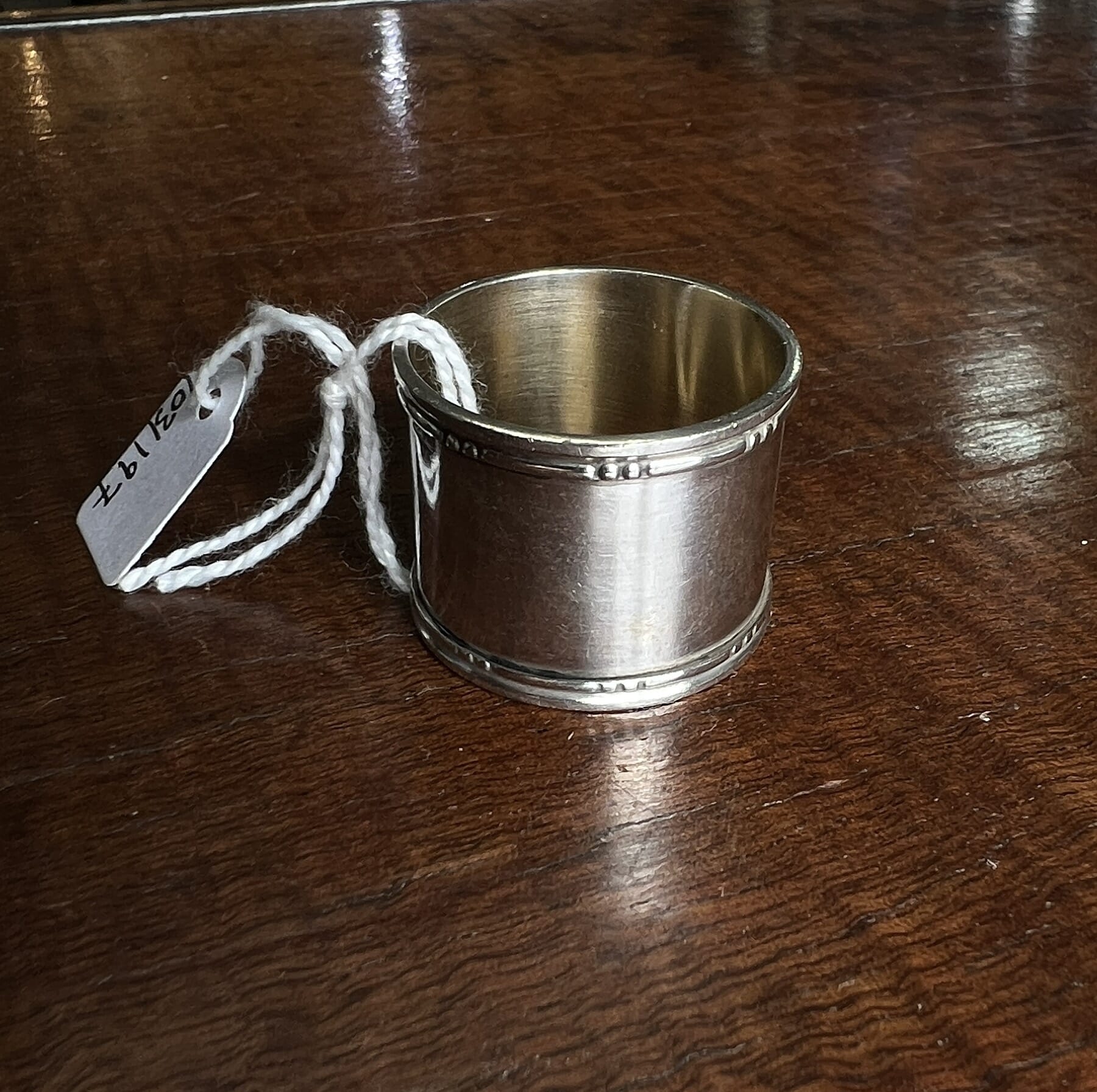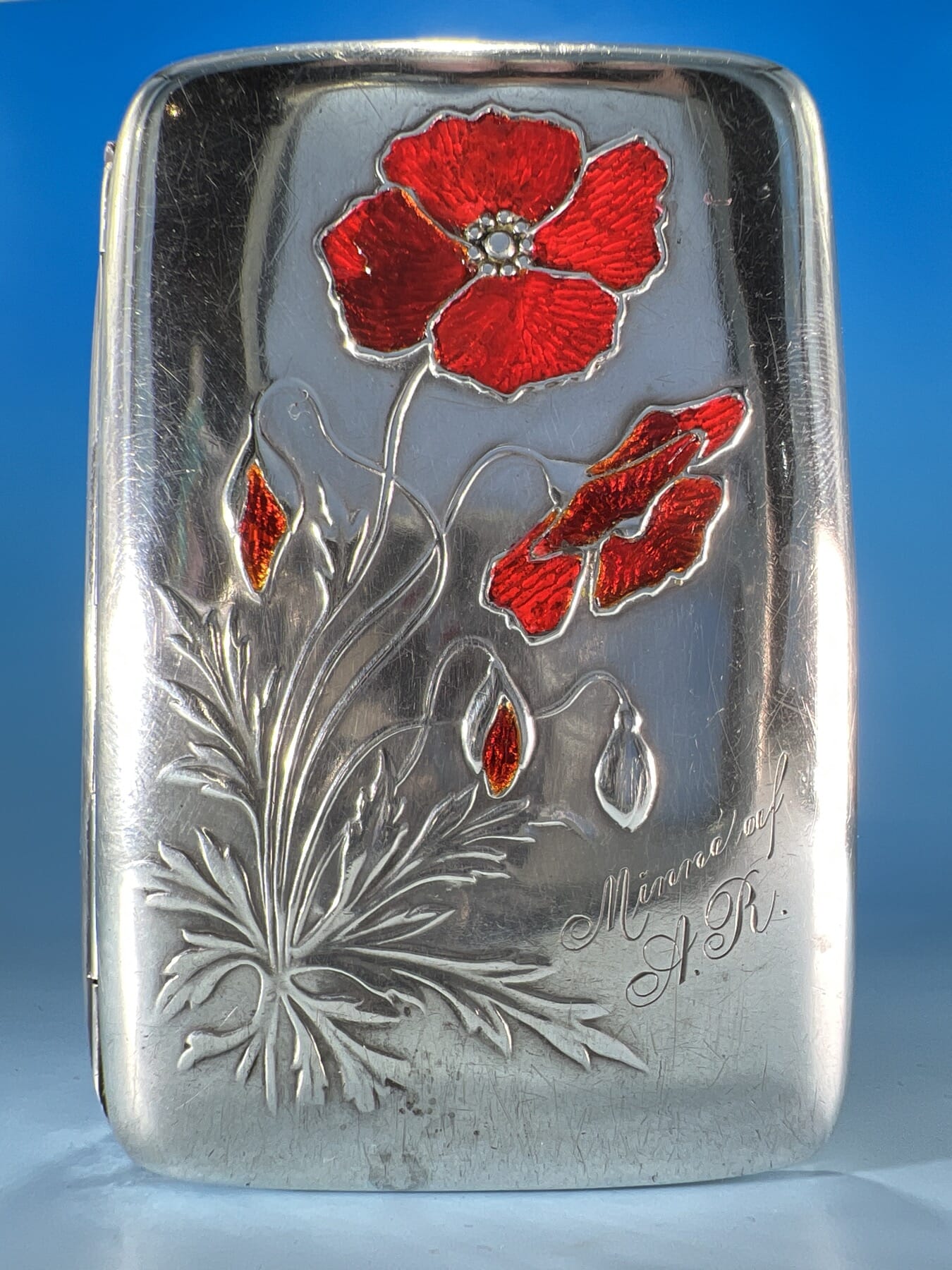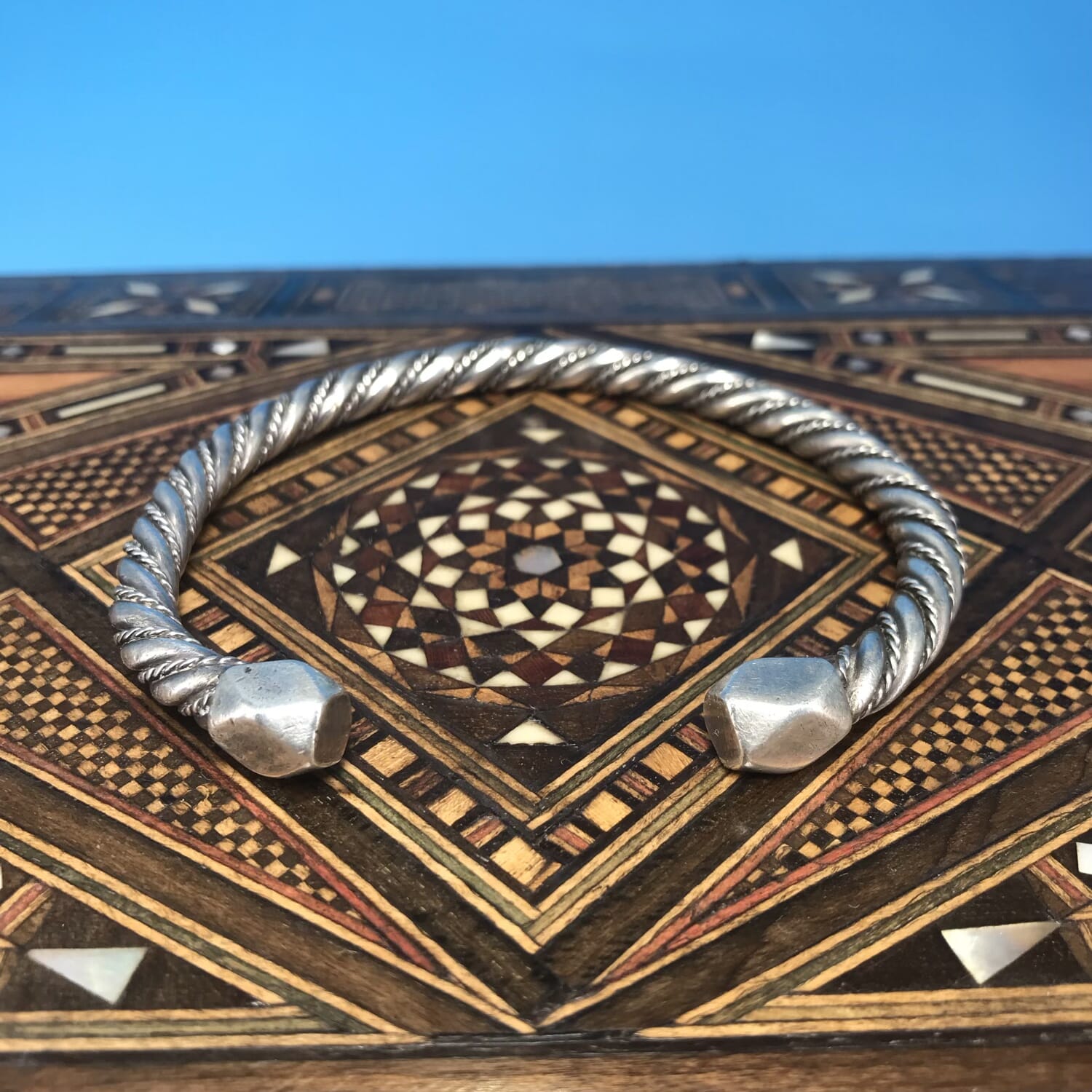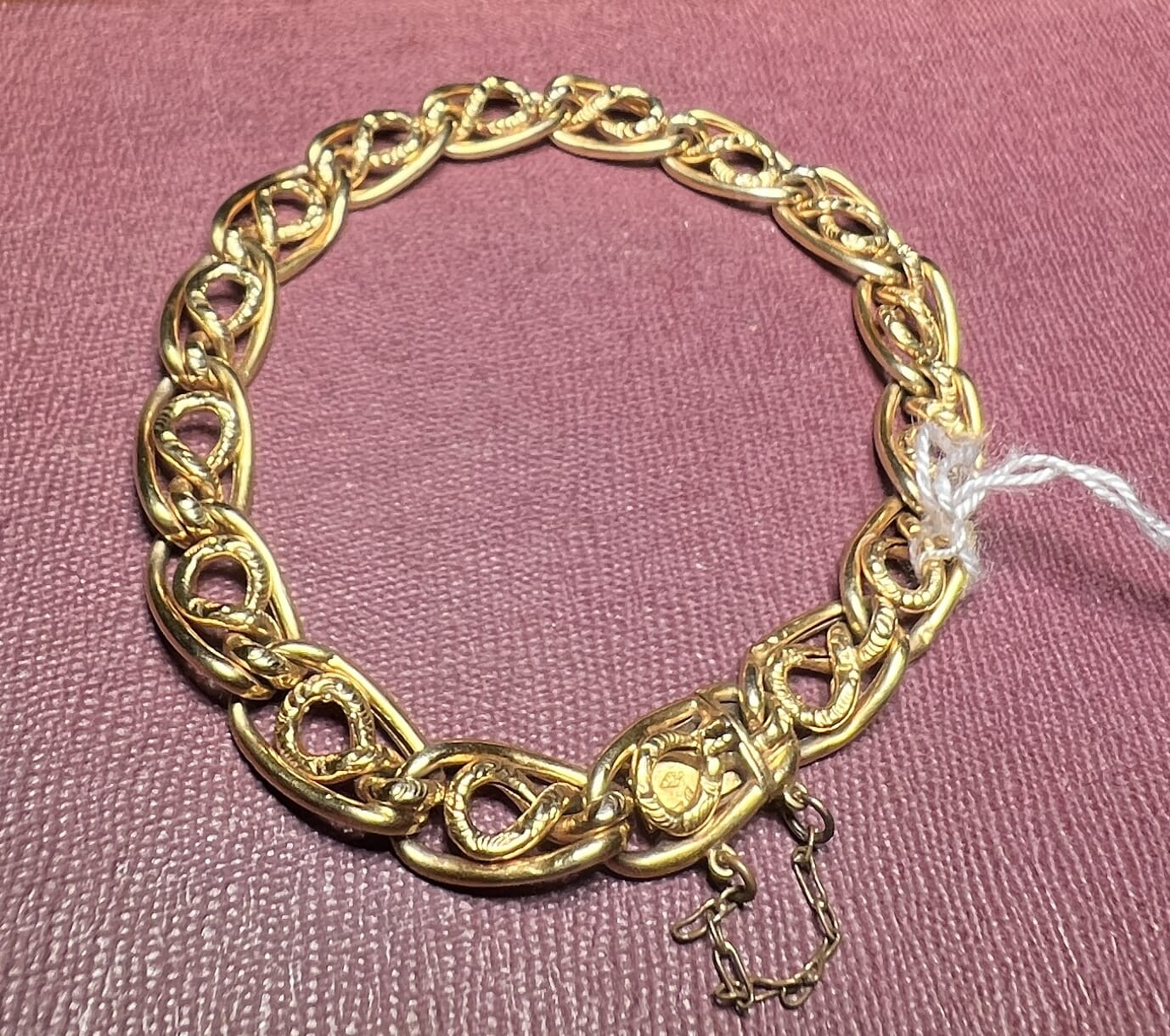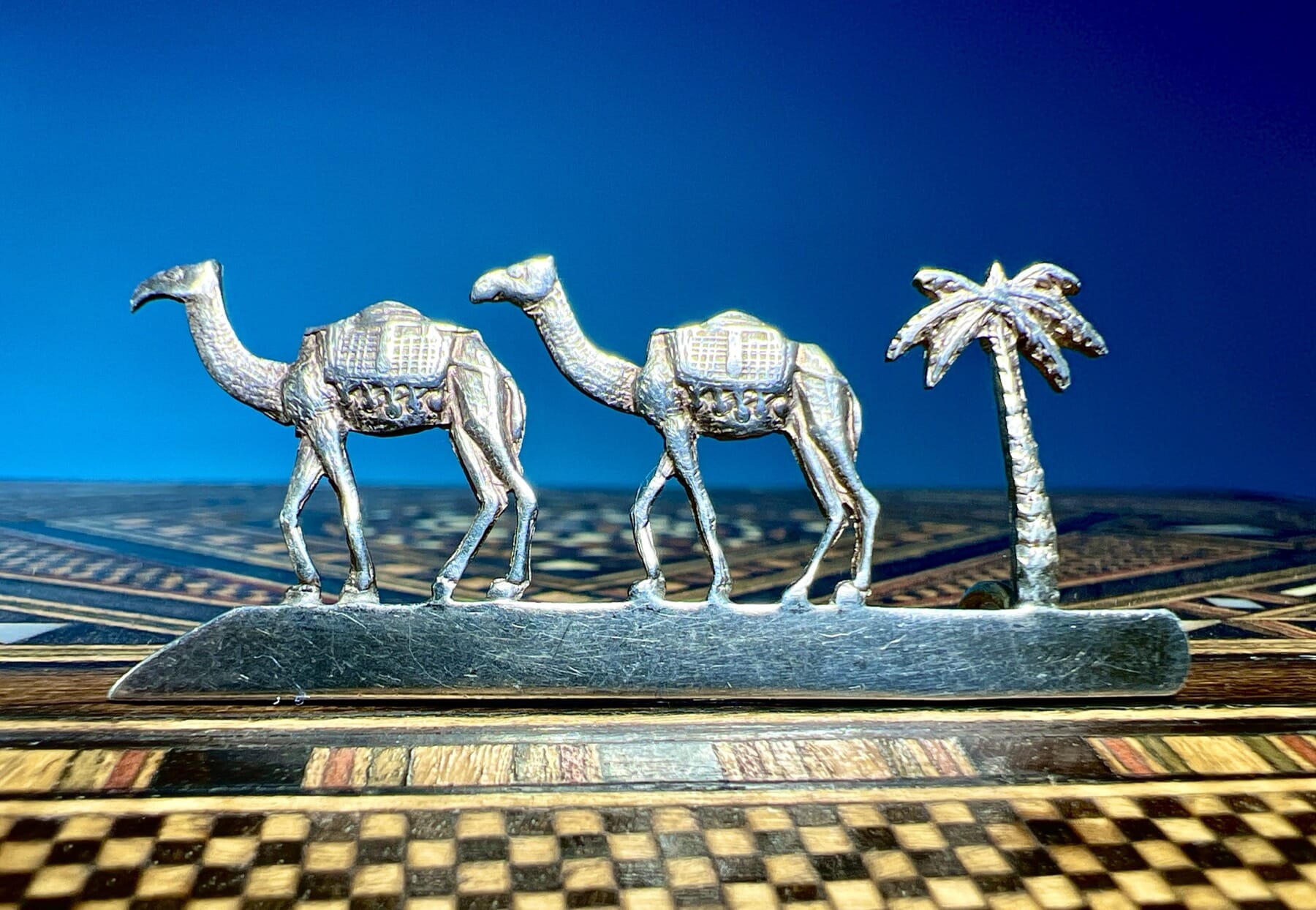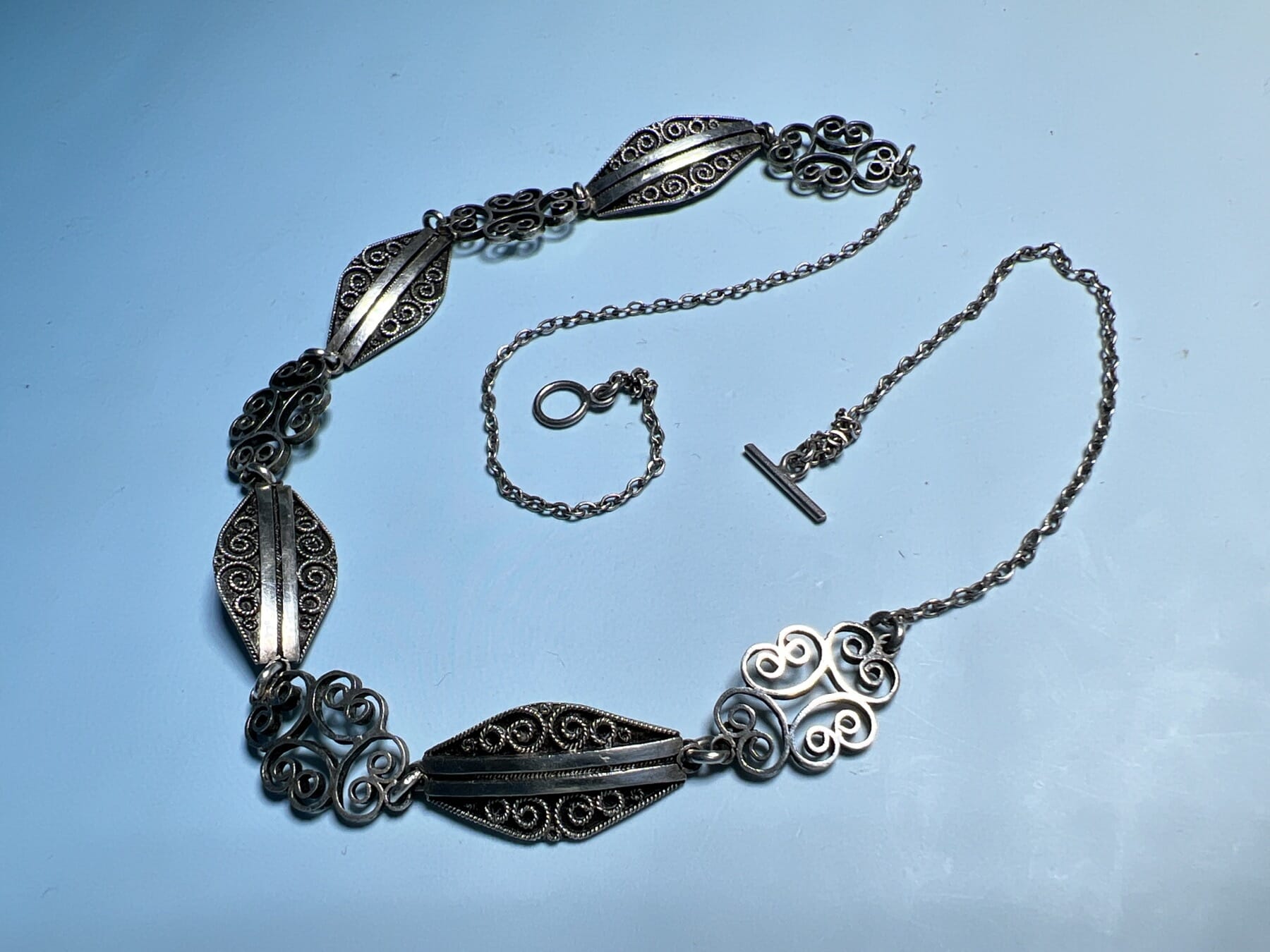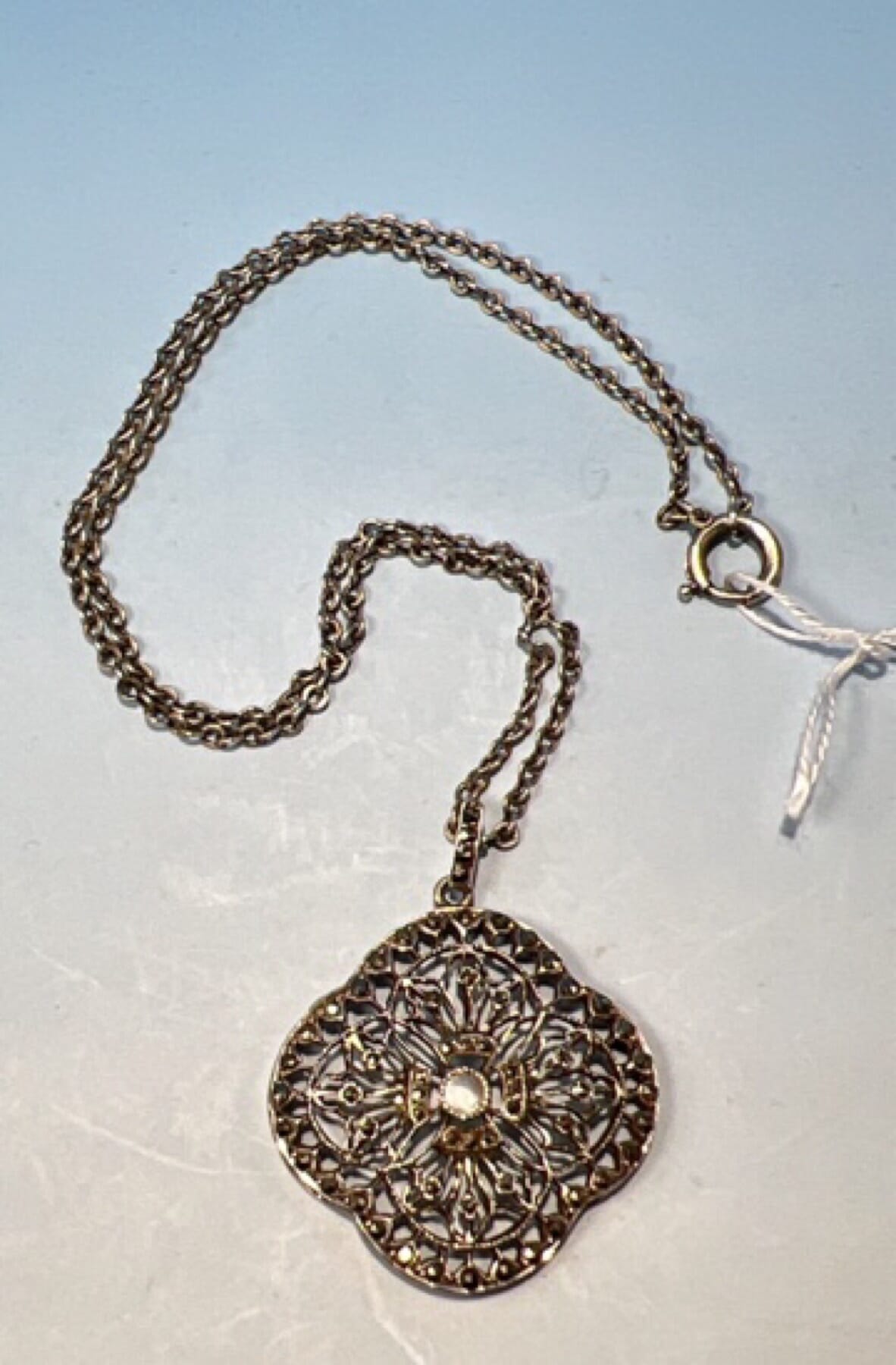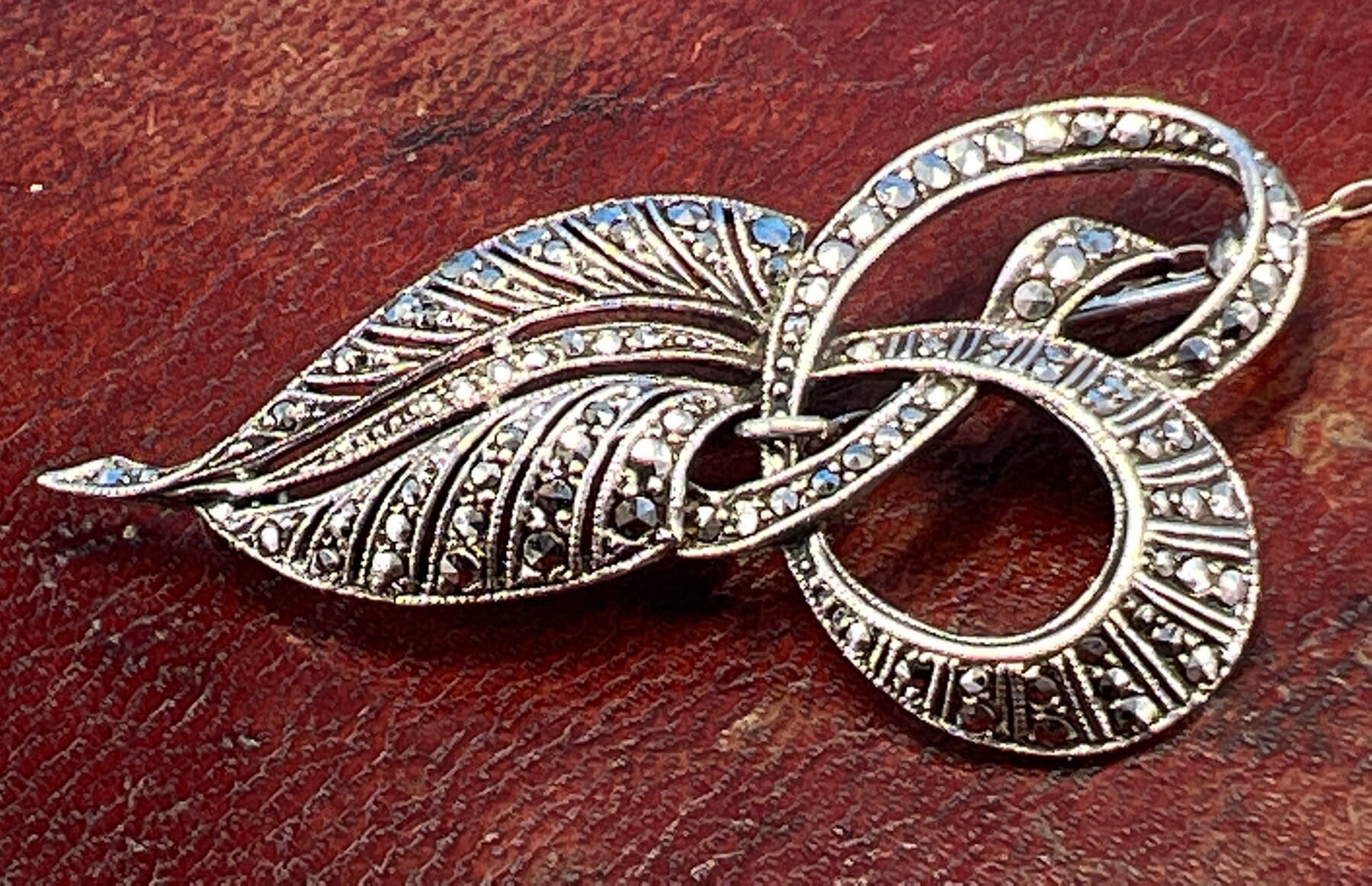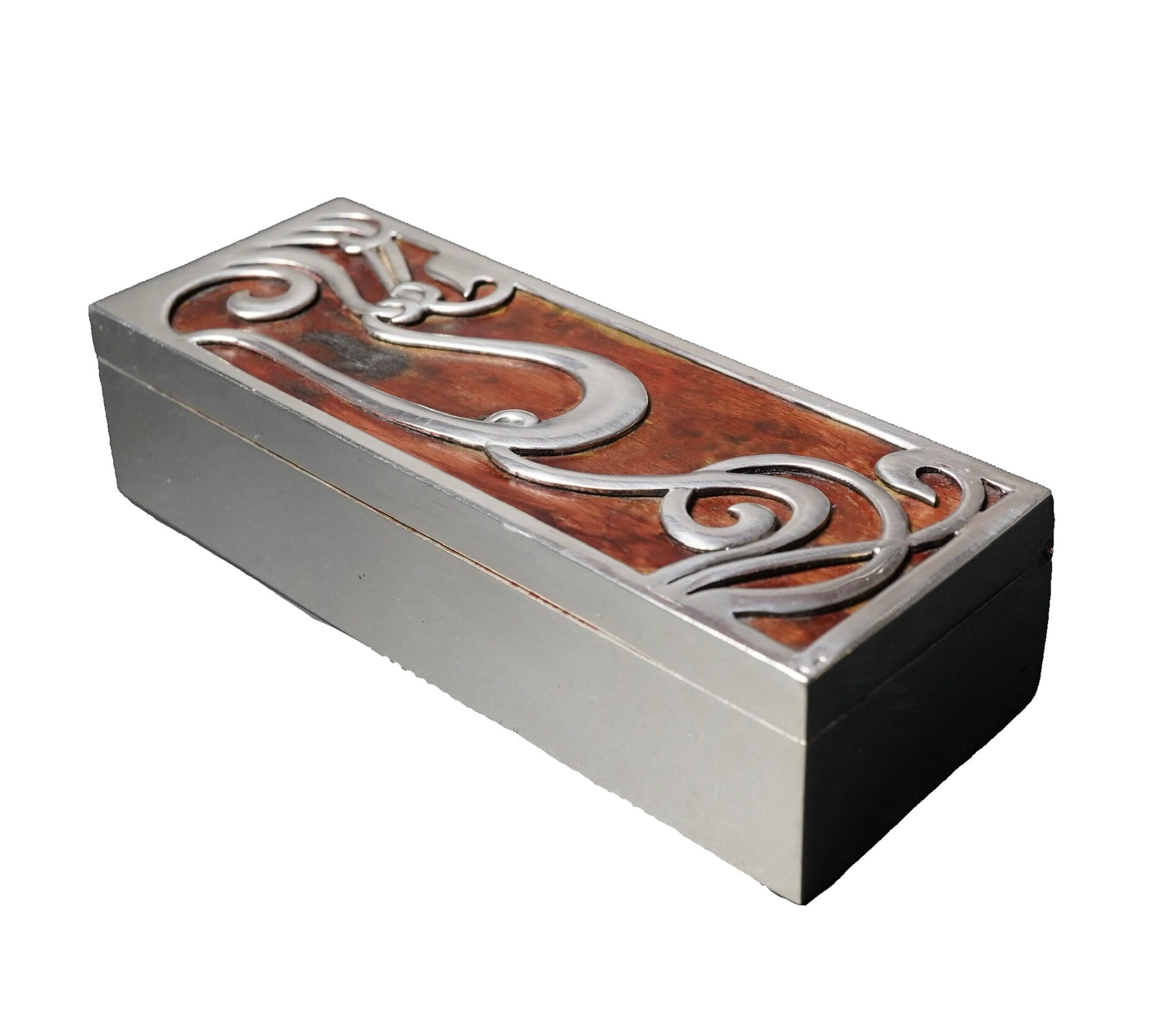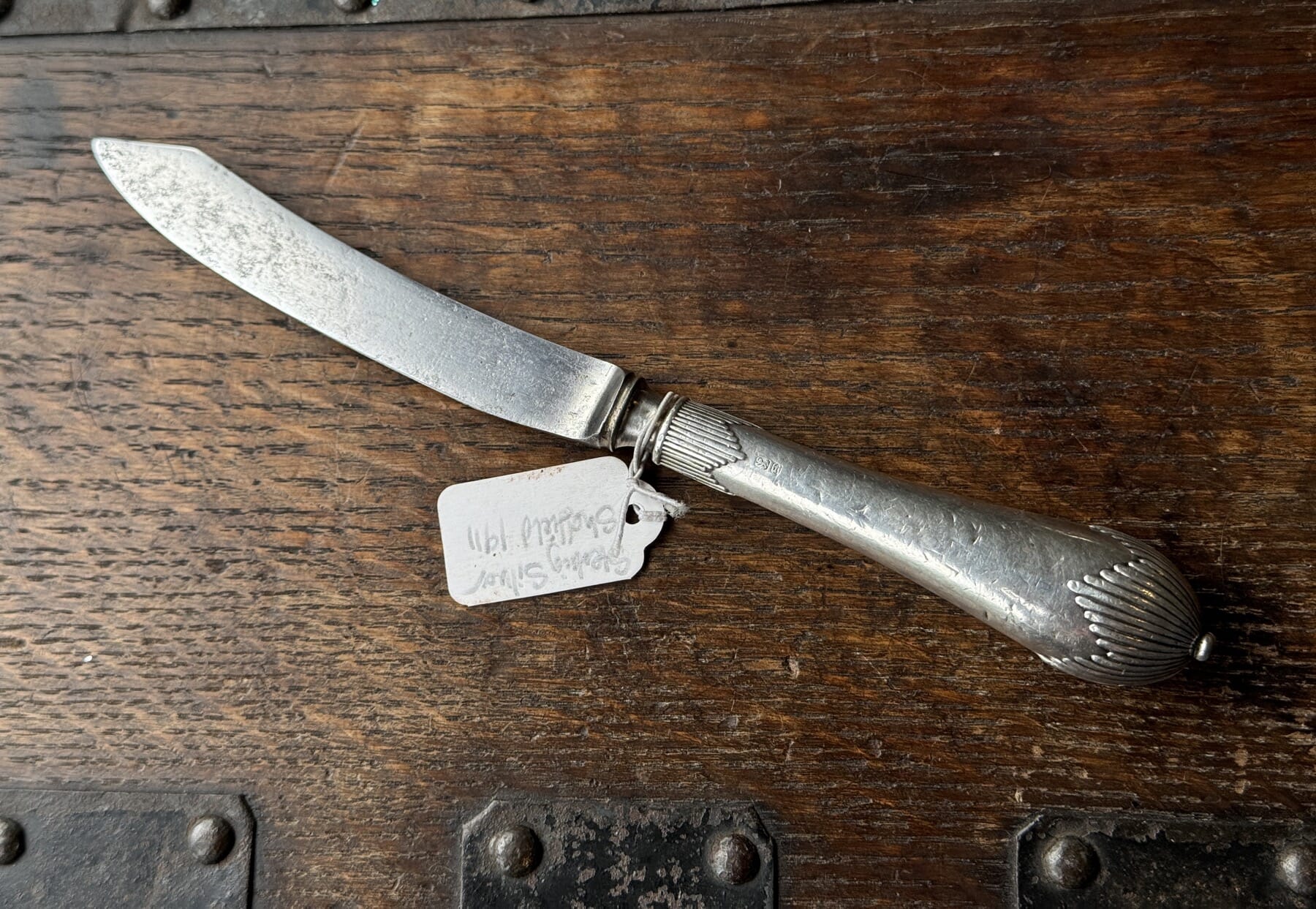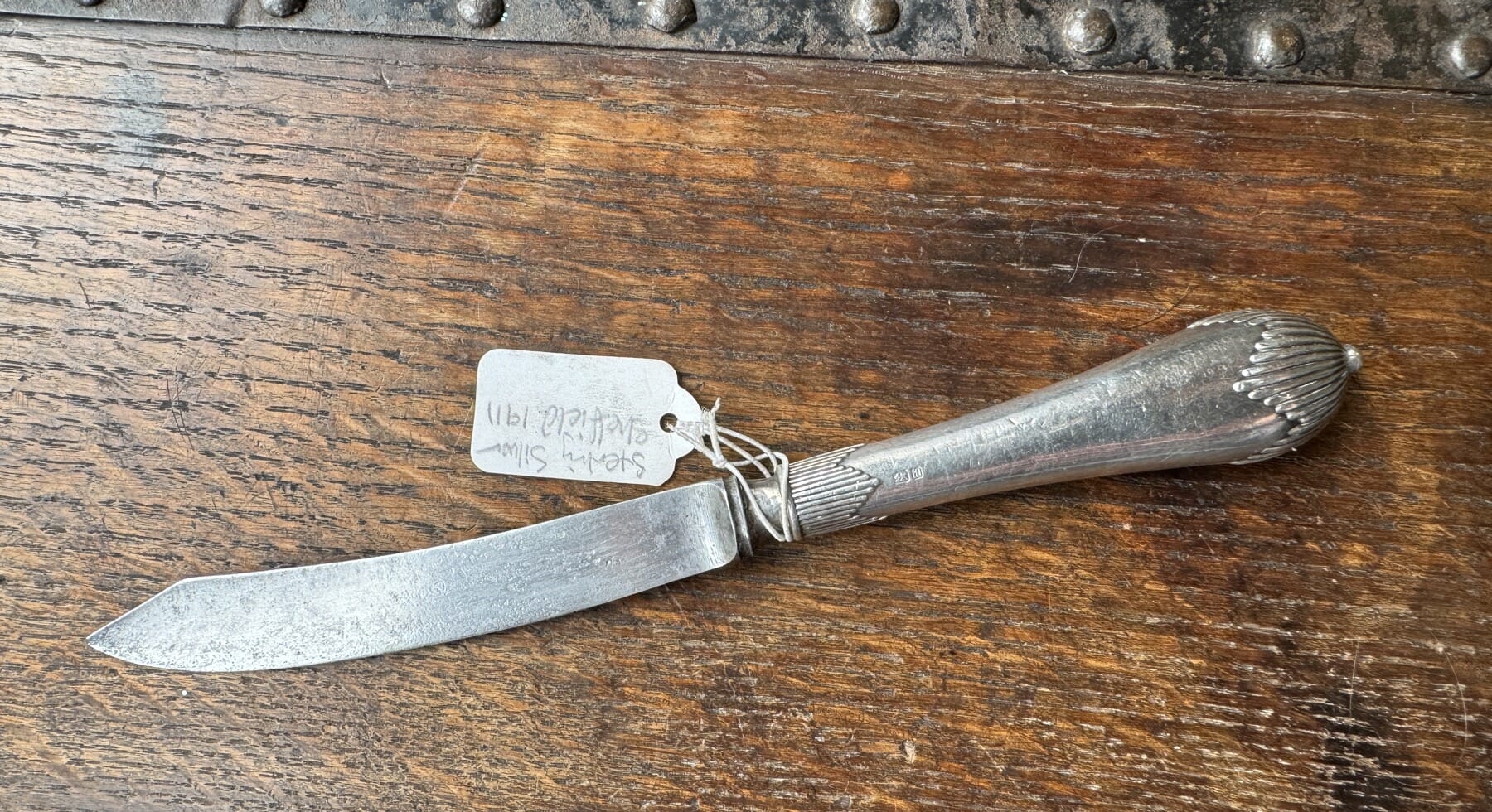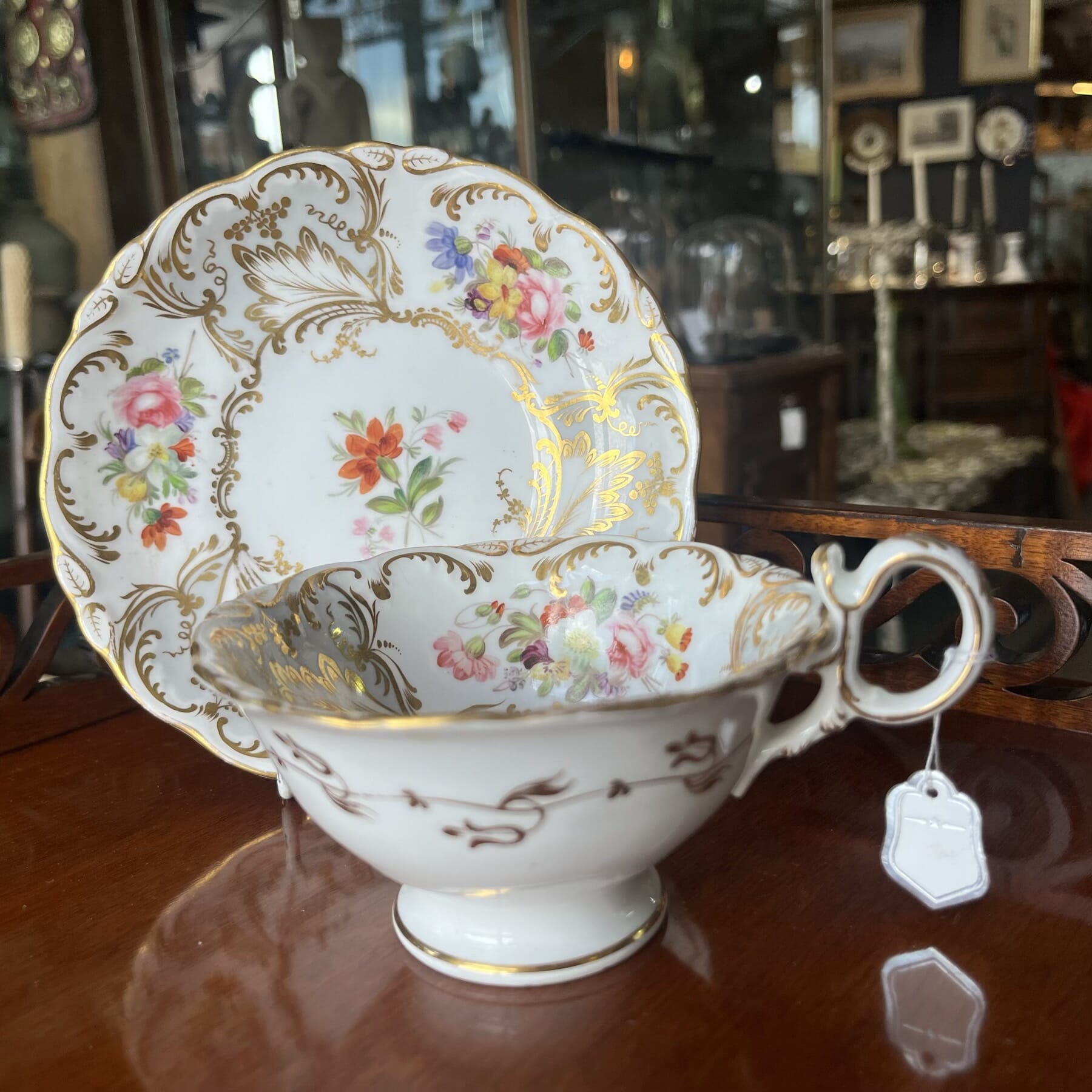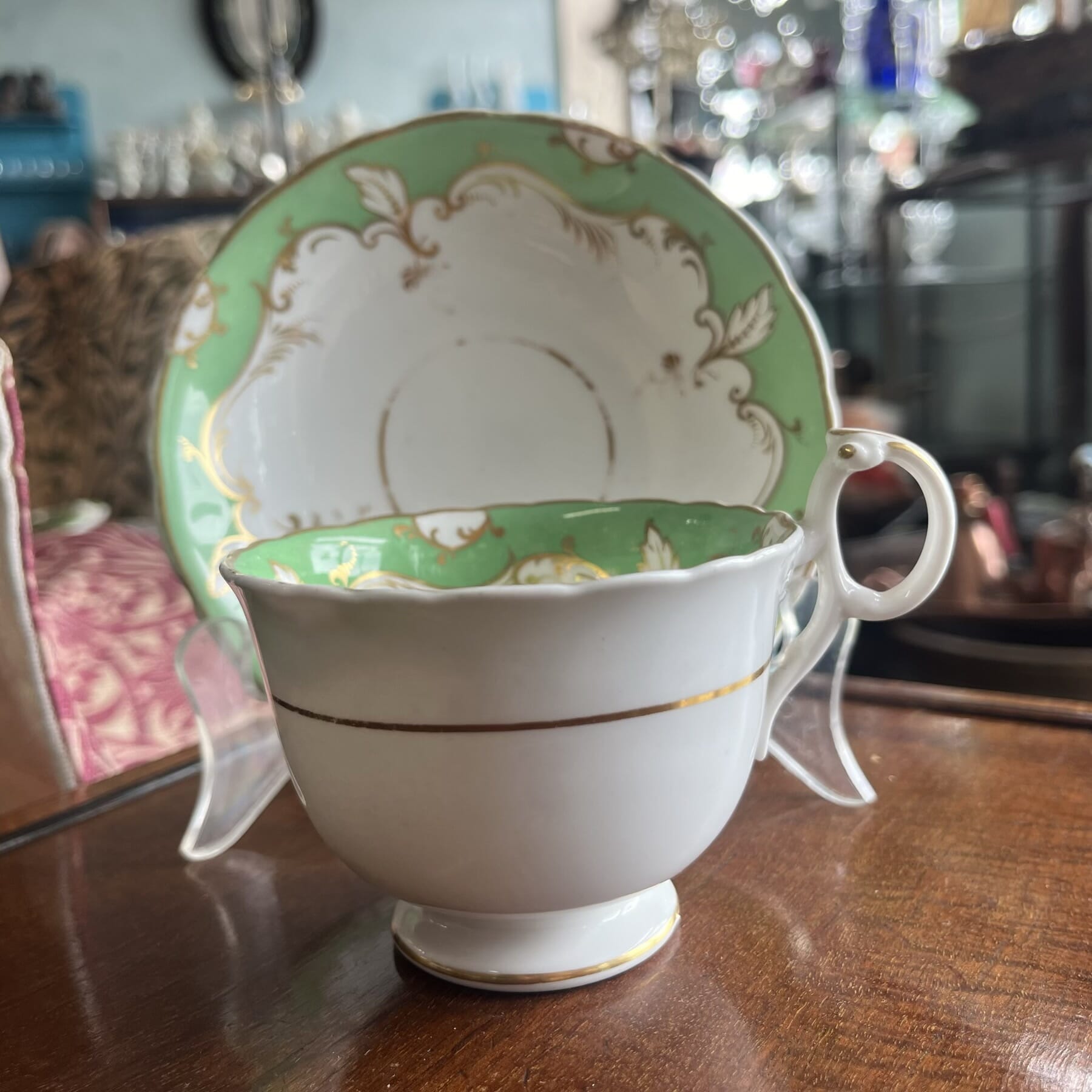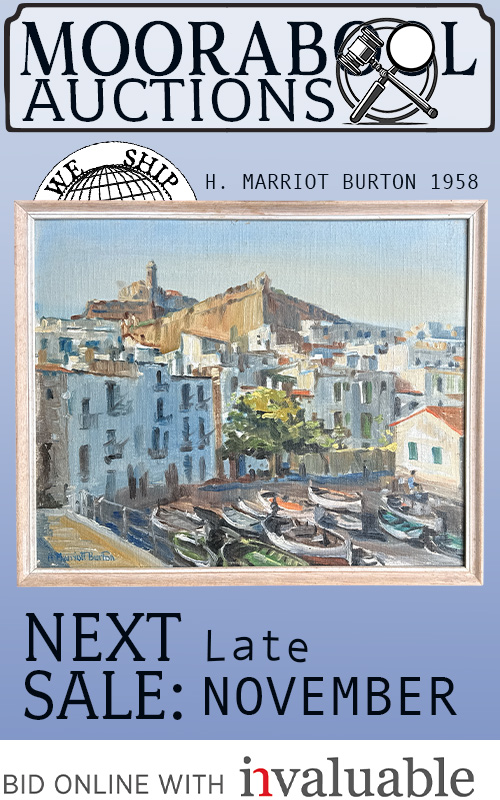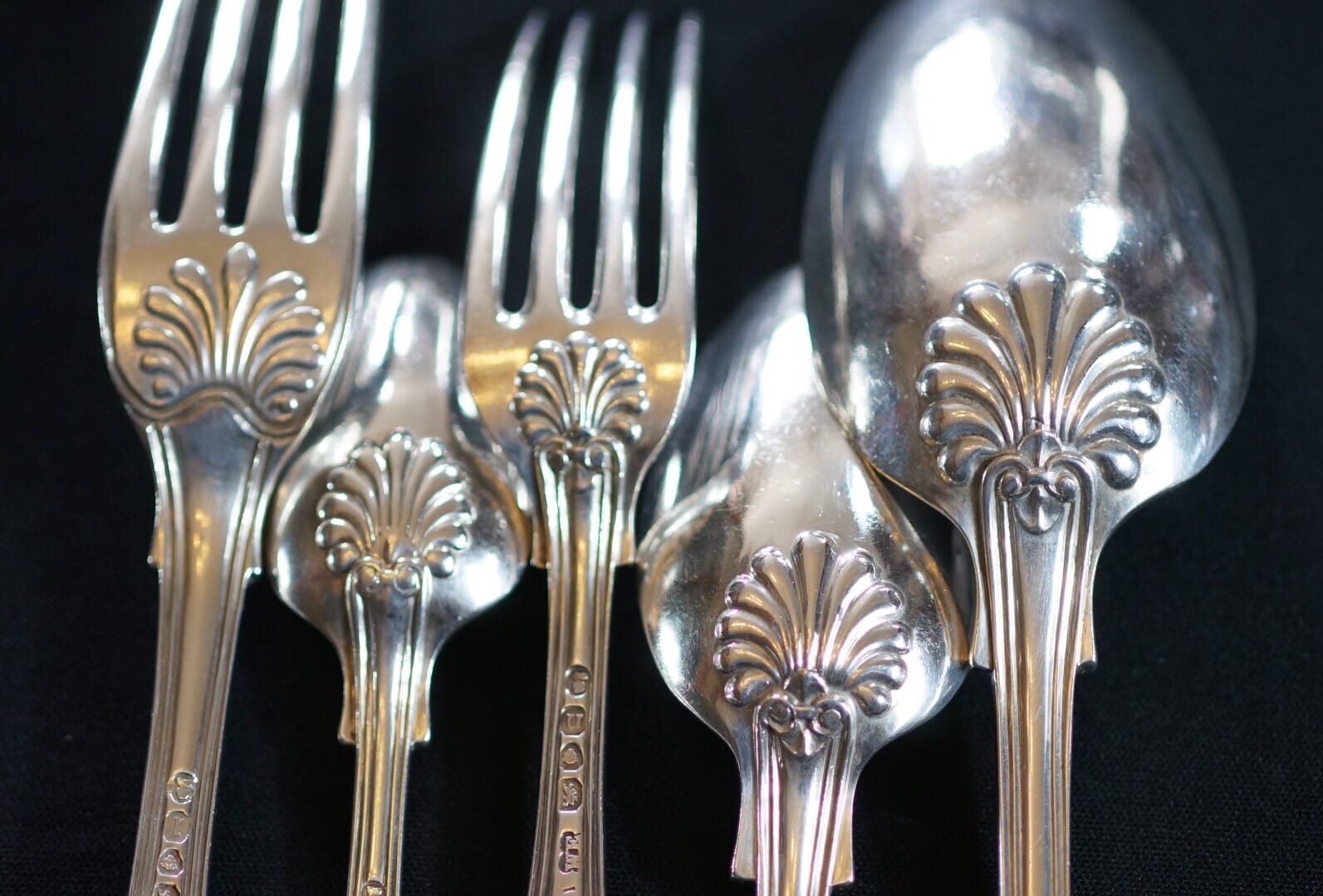

Sterling Silver is a very desirable Antique these days: it’s the allure of a precious metal that glistens beautifully, formed into beautiful shapes by the hand of a gifted craftsman – but is also an incredible asset that has increased in value to dizzying heights over the past decade.
So it’s a beautiful display item, often usable, and something that will retain a high dollar-value into the future.
That’s worth collecting!
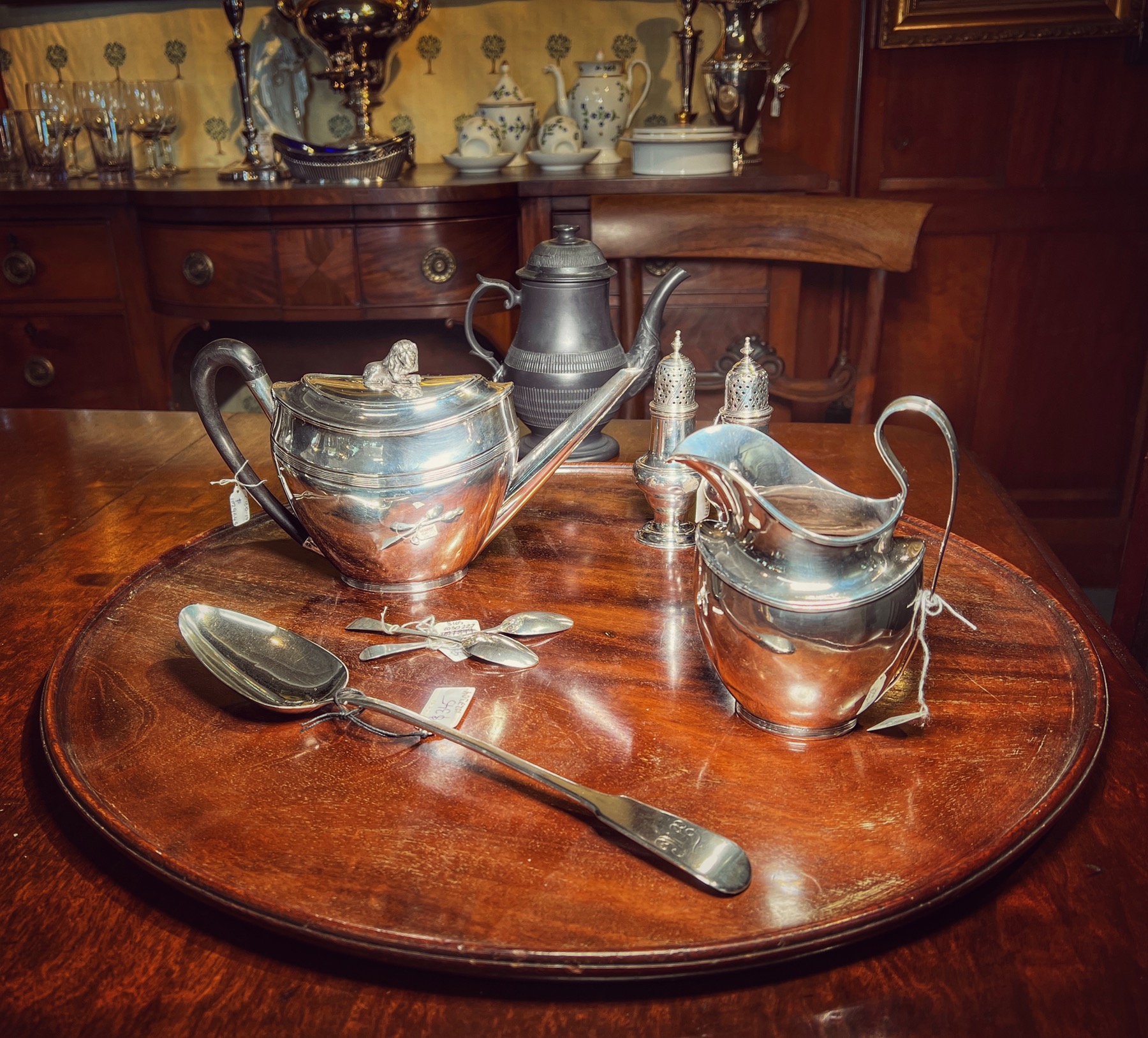
What is ‘Sterling Silver’?
‘Sterling’ Silver is a standard enforced in Britain, with severe consequences for any fraudulent activity.
The requirement is the silver content of 92.5% is achieved – the ‘Sterling Standard’, applying originally to currency and bullion. The other 7.5% of metal content actually has a purpose: solid silver is very soft and unsuitable for items that will be used, such as cutlery: the extra metal provides some strength without affecting the appearance of the silver.
Items are assessed by a series of government appointed ‘Assay Offices’, which also recorded the year the item was assessed.
Reading Sterling Silver Hallmarks
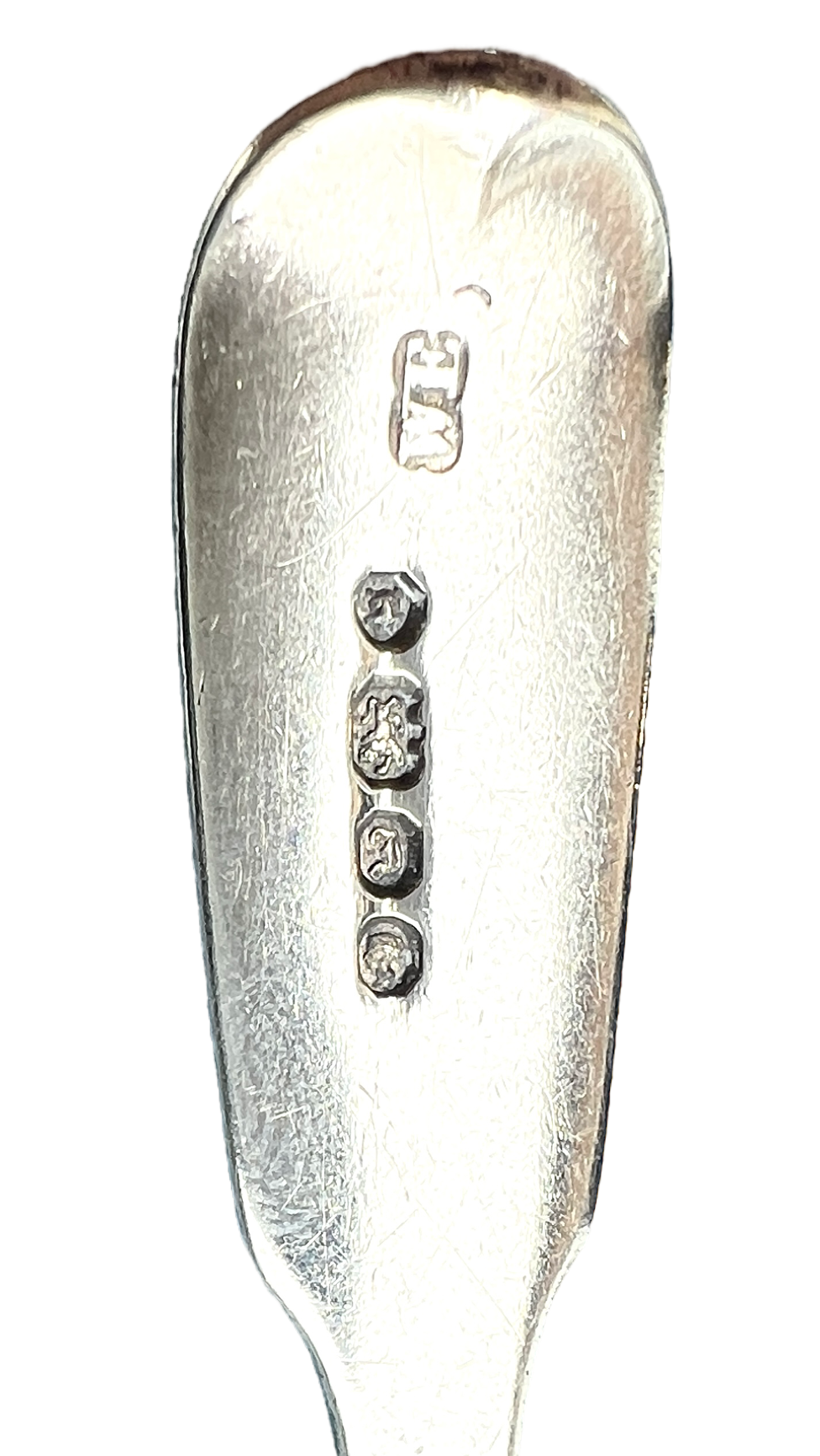
This example has very clear marks as they were struck into the silver very deeply.
From top to bottom:
‘WE’ Maker’s Mark – for William Eaton
(0) Leopard’s Head – the mark of the Assay Office in London
# Striding Lion – the British Hallmark indicating it is ‘Sterling Standard’, ie. 92.5% Silver Content
-J- Gothic capital ‘J’ – the date letter for London Assay Office in 1844
ø Head facing left – Young profile of Queen Victoria, left-facing in contrast with previous monarch, which was William IV & faced right.

This example shows the Irish variant of the ‘Sterling’ mark:
‘JS’ – for John Smyth, Dublin
ø Head facing left – Young profile of Queen Victoria
# Seated ‘Hibernia’ figure, representing Ireland, standing in for the striding lion used in the other Assay Offices in Britain
^ Crowned Harp – indicating the Dublin Assay Office
‘m’ Dublin year mark for 1857
Other Solid Silver standards

Elsewhere, silver of the same standard is also made. American and Australian silver conforms to the 92.5% standard, often using the word ‘Sterling’ for a mark, but without any assay office to mark it. On the Continent, silver content varies a lot, but is often handily marked with the parts of silver out of 1,000: ie. ‘.900’ is 900/1000, or 90%, close to Sterling standard, while items that are going to be used a lot are often .800 silver, 80%, making them hardier.
Caring for your Silver
The one thing about silver is… it inevitably goes black. One way to guard against this is to shut it away in an airtight storage – but then you can’t enjoy it.
Casual usage actually helps keep an item clean, as when you use it and then gently wipe it dry, any traces of black is removed, and your item remains lovely.
However, there always comes a time when you will need to clean your silver. The key is to go gently – while some methods and available cleaners do a fast, brilliant job, this is because the strip off a layer of the surface to reveal the shiny metal beneath. Do this too often, and you will seriously wear away the value of your piece!
For many decades, Moorabool has used & stocked the ‘gentle’ silver cleaner, used by silver collectors and dealers all over the world. This is Hagerty’s, see our stock by clicking the button below.
Our Latest Silver items
-
 Pair of George Jensen ‘Horseshoe’ Sterling Silver cufflinks with original box, mid-20th c.$295.00 AUD
Pair of George Jensen ‘Horseshoe’ Sterling Silver cufflinks with original box, mid-20th c.$295.00 AUD -
 Exceptional William IV Sterling Silver wine funnel, birds & flowers, London 1834Sold
Exceptional William IV Sterling Silver wine funnel, birds & flowers, London 1834Sold -
 Quality Sterling Silver bracelet, ringtail possums on gum branches, Ruth Waterhouse TasmaniaSold
Quality Sterling Silver bracelet, ringtail possums on gum branches, Ruth Waterhouse TasmaniaSold -
 Quality Australiana Sterling Silver ringtail possum & gumtree branch brooch, 20th c.$180.00 AUD
Quality Australiana Sterling Silver ringtail possum & gumtree branch brooch, 20th c.$180.00 AUD -
 Sterling Silver gumleaf & gumnuts brooch, 20thc.$95.00 AUD
Sterling Silver gumleaf & gumnuts brooch, 20thc.$95.00 AUD -
 Chinese silver teaset, Dragons, by Tuck Chang, Shanghai, c. 1890$6,500.00 AUD
Chinese silver teaset, Dragons, by Tuck Chang, Shanghai, c. 1890$6,500.00 AUD -
 Very small & simple Sterling Silver salt or mustard spoon, Birmingham 1901Sold
Very small & simple Sterling Silver salt or mustard spoon, Birmingham 1901Sold -
 Small Cambodian solid silver ‘Elephant Box’, 20th c.$145.00 AUD
Small Cambodian solid silver ‘Elephant Box’, 20th c.$145.00 AUD -
 Small Cambodian silvered ‘Elephant Box’, 20th c.Sold
Small Cambodian silvered ‘Elephant Box’, 20th c.Sold -
 Sri Lankan Kandy Elephant, silver mounts, c. 1900$340.00 AUD
Sri Lankan Kandy Elephant, silver mounts, c. 1900$340.00 AUD
English, Irish & Scottish Sterling
-
 Very small & simple Sterling Silver salt or mustard spoon, Birmingham 1901Sold
Very small & simple Sterling Silver salt or mustard spoon, Birmingham 1901Sold -
 Zair S.Silver whip handle with Egyptian motifs, dog’s head, c.1880Sold
Zair S.Silver whip handle with Egyptian motifs, dog’s head, c.1880Sold -
 Irish Sterling Silver teaspoon, Griffin head crest, by John Smyth, Dublin 1857Sold
Irish Sterling Silver teaspoon, Griffin head crest, by John Smyth, Dublin 1857Sold -
 Sterling Silver tea spoon, Exeter maker John Stone, 1858$85.00 AUD
Sterling Silver tea spoon, Exeter maker John Stone, 1858$85.00 AUD -
 Sterling Silver tea spoon, rare Chester maker Patrick Leonard, c.1845$125.00 AUD
Sterling Silver tea spoon, rare Chester maker Patrick Leonard, c.1845$125.00 AUD -
 Sterling Silver desert spoon, arms of Coke, London 1845$145.00 AUD
Sterling Silver desert spoon, arms of Coke, London 1845$145.00 AUD -
 Sterling Silver table spoon, Harris Family ‘Hedgehog’ crest, London 1836$245.00 AUD
Sterling Silver table spoon, Harris Family ‘Hedgehog’ crest, London 1836$245.00 AUD -
 Irish Sterling Silver teaspoon, Griffin head crest, by John Smyth, Dublin 1857Sold
Irish Sterling Silver teaspoon, Griffin head crest, by John Smyth, Dublin 1857Sold -
 Sterling Silver table spoon, John+Anne Bateman, London 1793Sold
Sterling Silver table spoon, John+Anne Bateman, London 1793Sold -
 Sterling Silver table spoon, ‘JB’, London 1800$65.00 AUD
Sterling Silver table spoon, ‘JB’, London 1800$65.00 AUD -
 Georgian Sterling Silver dessert spoon, dog crest, John Harris IV London 1825$125.00 AUD
Georgian Sterling Silver dessert spoon, dog crest, John Harris IV London 1825$125.00 AUD -
 Georgian Sterling Silver tablespoon, Thomas Dicks, London 1807Sold
Georgian Sterling Silver tablespoon, Thomas Dicks, London 1807Sold -
 Sterling Silver tablespoon, Fiddle pattern, London 1839$185.00 AUD
Sterling Silver tablespoon, Fiddle pattern, London 1839$185.00 AUD -
 George III Sterling Silver Table Spoon, Richard Palmer I, London 1820Sold
George III Sterling Silver Table Spoon, Richard Palmer I, London 1820Sold -
 Georgian Sterling Silver fork, ‘King’s Hourglass’ pattern, London 1819$280.00 AUD
Georgian Sterling Silver fork, ‘King’s Hourglass’ pattern, London 1819$280.00 AUD -
 George III Sterling Silver tea spoon, scarce Josiah & George Piercy maker, London 1811$195.00 AUD
George III Sterling Silver tea spoon, scarce Josiah & George Piercy maker, London 1811$195.00 AUD -
 Sterling Silver teaspoon, Peacock Family crest, William Eaton 1844$85.00 AUD
Sterling Silver teaspoon, Peacock Family crest, William Eaton 1844$85.00 AUD -
 Silver handled ham-bone holder, c. 1880Sold
Silver handled ham-bone holder, c. 1880Sold -
 Fine quality Sterling Silver sugar tongs$195.00 AUD
Fine quality Sterling Silver sugar tongs$195.00 AUD -
 Victorian Sterling Silver Christening Mug, flower embossed, Birmingham 1868$465.00 AUD
Victorian Sterling Silver Christening Mug, flower embossed, Birmingham 1868$465.00 AUD -
 Georgian style sterling silver trophy, lions head handles, Birmingham 1922Sold
Georgian style sterling silver trophy, lions head handles, Birmingham 1922Sold -
 Pair of Sterling Silver pepper pots, Adams style, Sheffield 1907Sold
Pair of Sterling Silver pepper pots, Adams style, Sheffield 1907Sold -
 Stylish Sterling Silver sugar castor, earliest Victorian, 1837$295.00 AUD
Stylish Sterling Silver sugar castor, earliest Victorian, 1837$295.00 AUD -
 Georgian style Sterling Silver Sugar Sifter, Birmingham 1912$295.00 AUD
Georgian style Sterling Silver Sugar Sifter, Birmingham 1912$295.00 AUD -
 Handsome Georgian Sterling Silver milk jug, fine Adams engraving, London 1798Sold
Handsome Georgian Sterling Silver milk jug, fine Adams engraving, London 1798Sold
Australian Silver
-
 Quality Australiana Sterling Silver ringtail possum & gumtree branch brooch, 20th c.$180.00 AUD
Quality Australiana Sterling Silver ringtail possum & gumtree branch brooch, 20th c.$180.00 AUD -
 Sterling Silver gumleaf & gumnuts brooch, 20thc.$95.00 AUD
Sterling Silver gumleaf & gumnuts brooch, 20thc.$95.00 AUD -
 Art Nouveau Silver ring, s-shape, earlier 20th century$75.00 AUD
Art Nouveau Silver ring, s-shape, earlier 20th century$75.00 AUD -
 Australian silver and enamel fob shield, Tasmania coat of arms, c.1900$45.00 AUD
Australian silver and enamel fob shield, Tasmania coat of arms, c.1900$45.00 AUD -
 Pair of Edwardian silver, pearlshell & pearls collar studs, c. 1910$65.00 AUD
Pair of Edwardian silver, pearlshell & pearls collar studs, c. 1910$65.00 AUD -
 Australian Sterling Silver salt shaker, c.1930Sold
Australian Sterling Silver salt shaker, c.1930Sold -
 Phar Lap commemorative, Sterling Silver medallion by Emil Hafner, 1980$345.00 AUD
Phar Lap commemorative, Sterling Silver medallion by Emil Hafner, 1980$345.00 AUD -
 Stokes sterling silver award, Scottish highland dancing, Maffra 1951$35.00 AUD
Stokes sterling silver award, Scottish highland dancing, Maffra 1951$35.00 AUD -
 Stokes sterling silver award, Scottish highland dancing, Drouin 1950$35.00 AUD
Stokes sterling silver award, Scottish highland dancing, Drouin 1950$35.00 AUD -
 Stokes sterling silver award, Scottish highland dancing, Maffra 1951$35.00 AUD
Stokes sterling silver award, Scottish highland dancing, Maffra 1951$35.00 AUD -
 Stokes sterling silver award, Scottish highland dancing, Maffra c.1950$35.00 AUD
Stokes sterling silver award, Scottish highland dancing, Maffra c.1950$35.00 AUD -
 Stokes sterling silver award, Scottish highland dancing, Brunswick c.1950$35.00 AUD
Stokes sterling silver award, Scottish highland dancing, Brunswick c.1950$35.00 AUD -
 Stokes sterling silver award, Scottish highland dancing, Newbury c.1950$35.00 AUD
Stokes sterling silver award, Scottish highland dancing, Newbury c.1950$35.00 AUD -
 Stokes sterling silver award, Scottish highland dancing, Nowra c.1950$35.00 AUD
Stokes sterling silver award, Scottish highland dancing, Nowra c.1950$35.00 AUD -
 Australian Sterling silver teaspoon, golf club handle Drummond + Co, C.1920$45.00 AUD
Australian Sterling silver teaspoon, golf club handle Drummond + Co, C.1920$45.00 AUD -
 Australian Sterling Silver trophy ‘Camperdown Open Doubles, xmas 1919’Sold
Australian Sterling Silver trophy ‘Camperdown Open Doubles, xmas 1919’Sold -
 Australian Silver & Ebony conductor’s baton, presented to Professor Hardeman, Richmond Amateur Orchestra, 1897Sold
Australian Silver & Ebony conductor’s baton, presented to Professor Hardeman, Richmond Amateur Orchestra, 1897Sold -
 Australiana – conductor’s baton with silver mounts, presented to E. Sage, Ballarat, 1901Sold
Australiana – conductor’s baton with silver mounts, presented to E. Sage, Ballarat, 1901Sold -
 Australian presentation trowel, Camberwell Baptist Church 1903, Robertson Silver mounts$1,450.00 AUD
Australian presentation trowel, Camberwell Baptist Church 1903, Robertson Silver mounts$1,450.00 AUD -
 Sterling silver salt shaker blue glass liner$65.00 AUD
Sterling silver salt shaker blue glass liner$65.00 AUD -
 Australian Sterling Silver Christening Mug, c. 1925$145.00 AUD
Australian Sterling Silver Christening Mug, c. 1925$145.00 AUD -
 Set of 6 teaspoon ‘Australian General Electric’ 25 year anniversary spoons, 1921.$65.00 AUD
Set of 6 teaspoon ‘Australian General Electric’ 25 year anniversary spoons, 1921.$65.00 AUD -
 Australian Sterling silver souvenir spoon, Adelaide city hall, C.1920$35.00 AUD
Australian Sterling silver souvenir spoon, Adelaide city hall, C.1920$35.00 AUD -
 Drummond & Co Melbourne sterling trophy cup, c.1920Sold
Drummond & Co Melbourne sterling trophy cup, c.1920Sold -
 Sterling Silver earrings, aesthetic movement with insects, c. 1880$125.00 AUD
Sterling Silver earrings, aesthetic movement with insects, c. 1880$125.00 AUD
American Silver
-
 American gold plated card case, C. 1920$180.00 AUD
American gold plated card case, C. 1920$180.00 AUD -
 Sterling Silver sauce ladle, interesting pseudo-British hallmarks, prob. American, Patented 1915$45.00 AUD
Sterling Silver sauce ladle, interesting pseudo-British hallmarks, prob. American, Patented 1915$45.00 AUD -
 1921 ‘Morgan Dollar’, American silver dollar, San Fran mintSold
1921 ‘Morgan Dollar’, American silver dollar, San Fran mintSold -
 American Sterling Silver spoon, Parliament Buildings, Ottawa, Canada c.1900$65.00 AUD
American Sterling Silver spoon, Parliament Buildings, Ottawa, Canada c.1900$65.00 AUD -
 American Sterling Silver ‘PAN AMERICAN EXPOSITION 1901’ spoon$85.00 AUD
American Sterling Silver ‘PAN AMERICAN EXPOSITION 1901’ spoon$85.00 AUD -
 Sterling Silver pepper pot, American 1920’s$55.00 AUD
Sterling Silver pepper pot, American 1920’s$55.00 AUD -
 1923 ‘Peace Dollar’, US silver dollar, pierced for wearingSold
1923 ‘Peace Dollar’, US silver dollar, pierced for wearingSold -
 American Reed & Barton silver-plate tray engraved with American clippership, circa 1875$495.00 AUD
American Reed & Barton silver-plate tray engraved with American clippership, circa 1875$495.00 AUD -
 American sterling mounted conductor’s baton, ‘RUN FOR YOUR LIFE!’ c. 1920Sold
American sterling mounted conductor’s baton, ‘RUN FOR YOUR LIFE!’ c. 1920Sold
Asian Silver
-
 Small Cambodian solid silver ‘Elephant Box’, 20th c.$145.00 AUD
Small Cambodian solid silver ‘Elephant Box’, 20th c.$145.00 AUD -
 Cambodian silver ‘Pumpkin’ box, earlier 20th c.$165.00 AUD
Cambodian silver ‘Pumpkin’ box, earlier 20th c.$165.00 AUD -
 Small Cambodian solid silver ‘Elephant Box’, easier 20th centurySold
Small Cambodian solid silver ‘Elephant Box’, easier 20th centurySold -
 Chinese sterling silver + rosewood bracelet C.1920Sold
Chinese sterling silver + rosewood bracelet C.1920Sold -
 Chinese Silver beaker, plain form, c. 1920$60.00 AUD
Chinese Silver beaker, plain form, c. 1920$60.00 AUD -
 Siam (Thai) jewellery set, Earrings, brooch & bracelet, C.1925$125.00 AUD
Siam (Thai) jewellery set, Earrings, brooch & bracelet, C.1925$125.00 AUD -
 Japanese zogan bracelet, 16 flower/scenic panels, c. 1920Sold
Japanese zogan bracelet, 16 flower/scenic panels, c. 1920Sold -
 Japanese zogan bracelet, 10 moon/flower scenic panels, c. 1920$295.00 AUD
Japanese zogan bracelet, 10 moon/flower scenic panels, c. 1920$295.00 AUD -
 Siamese – Thai .800 silver butter knife, shadow puppet, C.1900$45.00 AUD
Siamese – Thai .800 silver butter knife, shadow puppet, C.1900$45.00 AUD -
 Small Cambodian .900 silver bowl, 20th CSold
Small Cambodian .900 silver bowl, 20th CSold -
 Three Chinese Silver Buttons, Qing DynastySold
Three Chinese Silver Buttons, Qing DynastySold -
 Japanese silver spoon, traditional house end, c. 1900$25.00 AUD
Japanese silver spoon, traditional house end, c. 1900$25.00 AUD -
 Japanese silver spoon, fan terminal, c. 1900Sold
Japanese silver spoon, fan terminal, c. 1900Sold -
 Japanese silver spoon, Shogi piece with inscription, c. 1900$25.00 AUD
Japanese silver spoon, Shogi piece with inscription, c. 1900$25.00 AUD -
 Japanese silver spoon, Kanji symbol, c. 1900Sold
Japanese silver spoon, Kanji symbol, c. 1900Sold -
 Japanese silver spoon, Kanji symbol, c. 1900$10.00 AUD
Japanese silver spoon, Kanji symbol, c. 1900$10.00 AUD -
 Japanese silver spoon, Kanji symbol, c. 1900Sold
Japanese silver spoon, Kanji symbol, c. 1900Sold -
 Chinese sterling silver teaspoon HONG KONG handle, c.1900Sold
Chinese sterling silver teaspoon HONG KONG handle, c.1900Sold -
 Chinese sterling silver teaspoon inscription handle, c.1900$25.00 AUD
Chinese sterling silver teaspoon inscription handle, c.1900$25.00 AUD -
 Chinese silver spoon with three inscriptions to handle, c. 1900$35.00 AUD
Chinese silver spoon with three inscriptions to handle, c. 1900$35.00 AUD -
 Chinese sterling silver teaspoon HONGKONG handle, c. 1900$35.00 AUD
Chinese sterling silver teaspoon HONGKONG handle, c. 1900$35.00 AUD -
 Siamese – Thai silver server with shadow puppets, .800 c.1900$185.00 AUD
Siamese – Thai silver server with shadow puppets, .800 c.1900$185.00 AUD -
 Kenya Silver souvenir spoon, Lion, c. 1920.$35.00 AUD
Kenya Silver souvenir spoon, Lion, c. 1920.$35.00 AUD -
 Chinese Silver sugar tongs, bamboo & plaques, by CumWo of Hong Kong, c. 1880.Sold
Chinese Silver sugar tongs, bamboo & plaques, by CumWo of Hong Kong, c. 1880.Sold -
 Burmese silver bowl, small figure roundels embossed, c.1910$95.00 AUD
Burmese silver bowl, small figure roundels embossed, c.1910$95.00 AUD
Continental & Other Silver
-
 Continental .900 silver teaspoon C 1900$35.00 AUD
Continental .900 silver teaspoon C 1900$35.00 AUD -
 Three ornate Dutch STERLING Silver baskets in the Rococo style, by van der Beek / Samuel Landeck, c. 1885$3,200.00 AUD
Three ornate Dutch STERLING Silver baskets in the Rococo style, by van der Beek / Samuel Landeck, c. 1885$3,200.00 AUD -
 .800 Silver Filigree Brooch, sailboat, French c. 1910$240.00 AUD
.800 Silver Filigree Brooch, sailboat, French c. 1910$240.00 AUD -
 Danish Silver small hand mirror, high relief village scene, C. 1920Sold
Danish Silver small hand mirror, high relief village scene, C. 1920Sold -
 Norwegian Silver spoon, gnome head, 19th century$145.00 AUD
Norwegian Silver spoon, gnome head, 19th century$145.00 AUD -
 Norwegian .830 Silver teaspoon, ‘Flat Rose’ pattern, A.S. Carlsen, mid 20th c.$25.00 AUD
Norwegian .830 Silver teaspoon, ‘Flat Rose’ pattern, A.S. Carlsen, mid 20th c.$25.00 AUD -
 Fine quality Norwegian .830 Silver spoon, ‘Dobbel Rokokko’ scroll & hair-plait handle, Brødrene Lohne, Bergen, mid 20th c.$75.00 AUD
Fine quality Norwegian .830 Silver spoon, ‘Dobbel Rokokko’ scroll & hair-plait handle, Brødrene Lohne, Bergen, mid 20th c.$75.00 AUD -
 Rare Dutch .934 Silver cruet stand, Empire style with Serpent Handle, circa 1820$695.00 AUD
Rare Dutch .934 Silver cruet stand, Empire style with Serpent Handle, circa 1820$695.00 AUD -
 Austrian .800 Silver tray, Circa 1900$340.00 AUD
Austrian .800 Silver tray, Circa 1900$340.00 AUD -
 Small silver continental .800 beaker, 19th CSold
Small silver continental .800 beaker, 19th CSold -
 Swiss silver souvenir spoon, ZURICH with lion, c. 1900$35.00 AUD
Swiss silver souvenir spoon, ZURICH with lion, c. 1900$35.00 AUD -
 Continental .800 Silver child’s napkin ring, c. 1900$25.00 AUD
Continental .800 Silver child’s napkin ring, c. 1900$25.00 AUD -
 Pair of Russian Silver .916 Caviar Spoons, gilt bowls C. 1970Sold
Pair of Russian Silver .916 Caviar Spoons, gilt bowls C. 1970Sold -
 Small Austro-Hungarian .800 Silver Spoon, 19th c.$35.00 AUD
Small Austro-Hungarian .800 Silver Spoon, 19th c.$35.00 AUD -
 Dutch Silver milk jug, rare .934 grade, Napoleonic period dated 1809Sold
Dutch Silver milk jug, rare .934 grade, Napoleonic period dated 1809Sold -
 Swedish .830 silver case with red enamel poppies, c.1912Sold
Swedish .830 silver case with red enamel poppies, c.1912Sold -
 Middle Eastern silver ‘Torc’ shaped bangleSold
Middle Eastern silver ‘Torc’ shaped bangleSold -
 French Silver and Gold ‘pipe’ bracelet with fine engravings, c.1910Sold
French Silver and Gold ‘pipe’ bracelet with fine engravings, c.1910Sold -
 Egyptian silver lidded coffee pot, engine-turned body & flower knop, Sultan Abdulaziz c.1870Sold
Egyptian silver lidded coffee pot, engine-turned body & flower knop, Sultan Abdulaziz c.1870Sold -
 Palestinian Silver brooch with camels and palm tree, c.1910Sold
Palestinian Silver brooch with camels and palm tree, c.1910Sold -
 French silver pocket knife/nail file with rococo scrolls, c.1900$95.00 AUD
French silver pocket knife/nail file with rococo scrolls, c.1900$95.00 AUD -
 Palestinian .935 silver filigree necklace, c.1910Sold
Palestinian .935 silver filigree necklace, c.1910Sold -
 French silver marcasite and mother of pearl filigree pendant on chain, c.1920$280.00 AUD
French silver marcasite and mother of pearl filigree pendant on chain, c.1920$280.00 AUD -
 German Art Deco silver marcasite leaf brooch, c.1920Sold
German Art Deco silver marcasite leaf brooch, c.1920Sold -
 French Silver Art Nouveau stamp box, c.1900Sold
French Silver Art Nouveau stamp box, c.1900Sold
Usable Silver
-
 Chinese silver teaset, Dragons, by Tuck Chang, Shanghai, c. 1890$6,500.00 AUD
Chinese silver teaset, Dragons, by Tuck Chang, Shanghai, c. 1890$6,500.00 AUD -
 Georgian style steel blade knife, Sterling handle, Sheffield 1911$45.00 AUD
Georgian style steel blade knife, Sterling handle, Sheffield 1911$45.00 AUD -
 Georgian style steel blade knife, Sterling handle, Sheffield 1911$45.00 AUD
Georgian style steel blade knife, Sterling handle, Sheffield 1911$45.00 AUD -
 Coalport cup &saucer, flowers & gilt foliage, pat. 2/896, c. 1835$285.00 AUD
Coalport cup &saucer, flowers & gilt foliage, pat. 2/896, c. 1835$285.00 AUD -
 Ridgway tea cup + saucer, ‘Union’ shape, c. 1840$65.00 AUD
Ridgway tea cup + saucer, ‘Union’ shape, c. 1840$65.00 AUD
(This link includes Old Sheffield Plate, Electroplate, and other objects that are less than Sterling standard but have a silver appearance)

